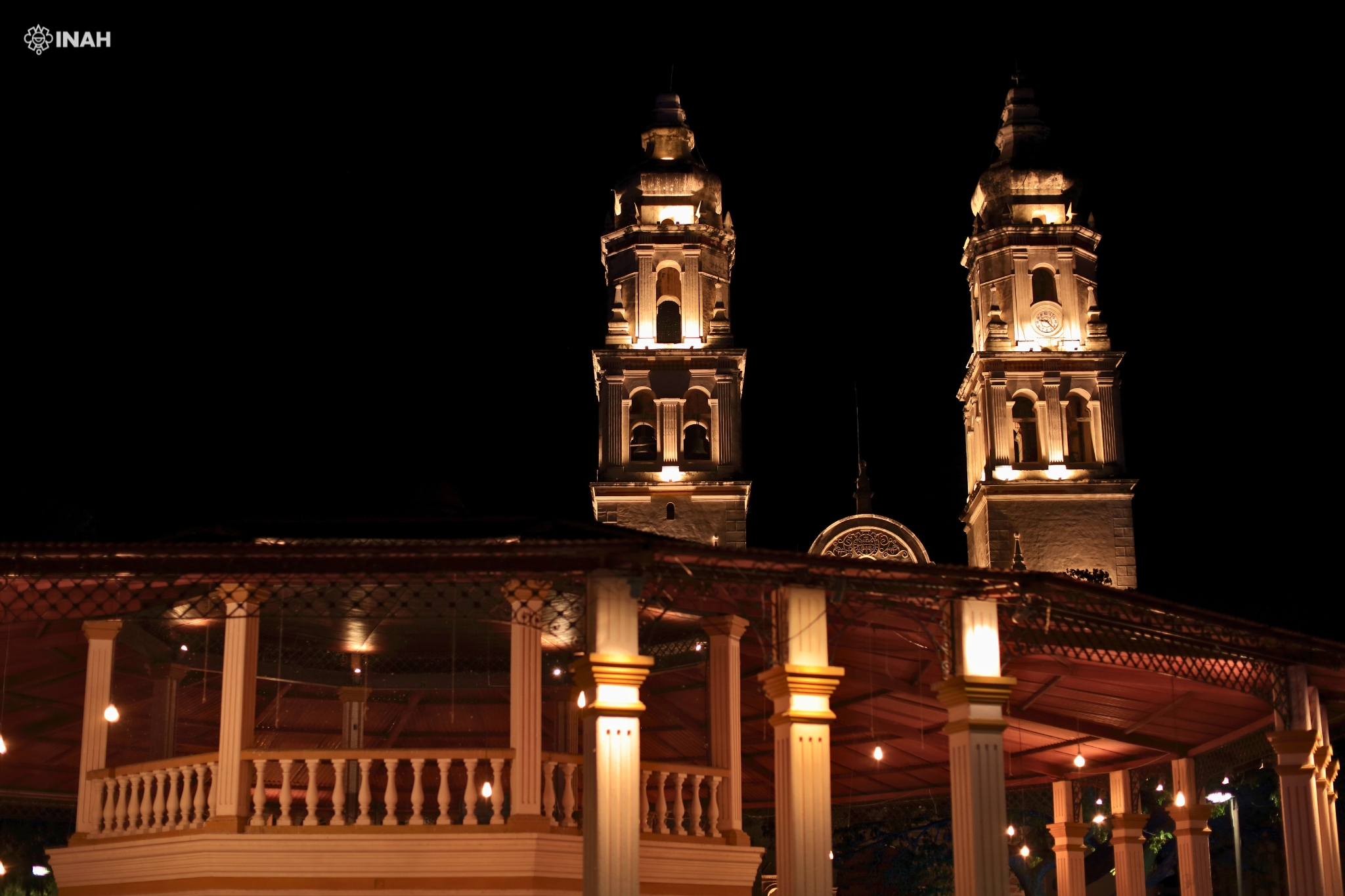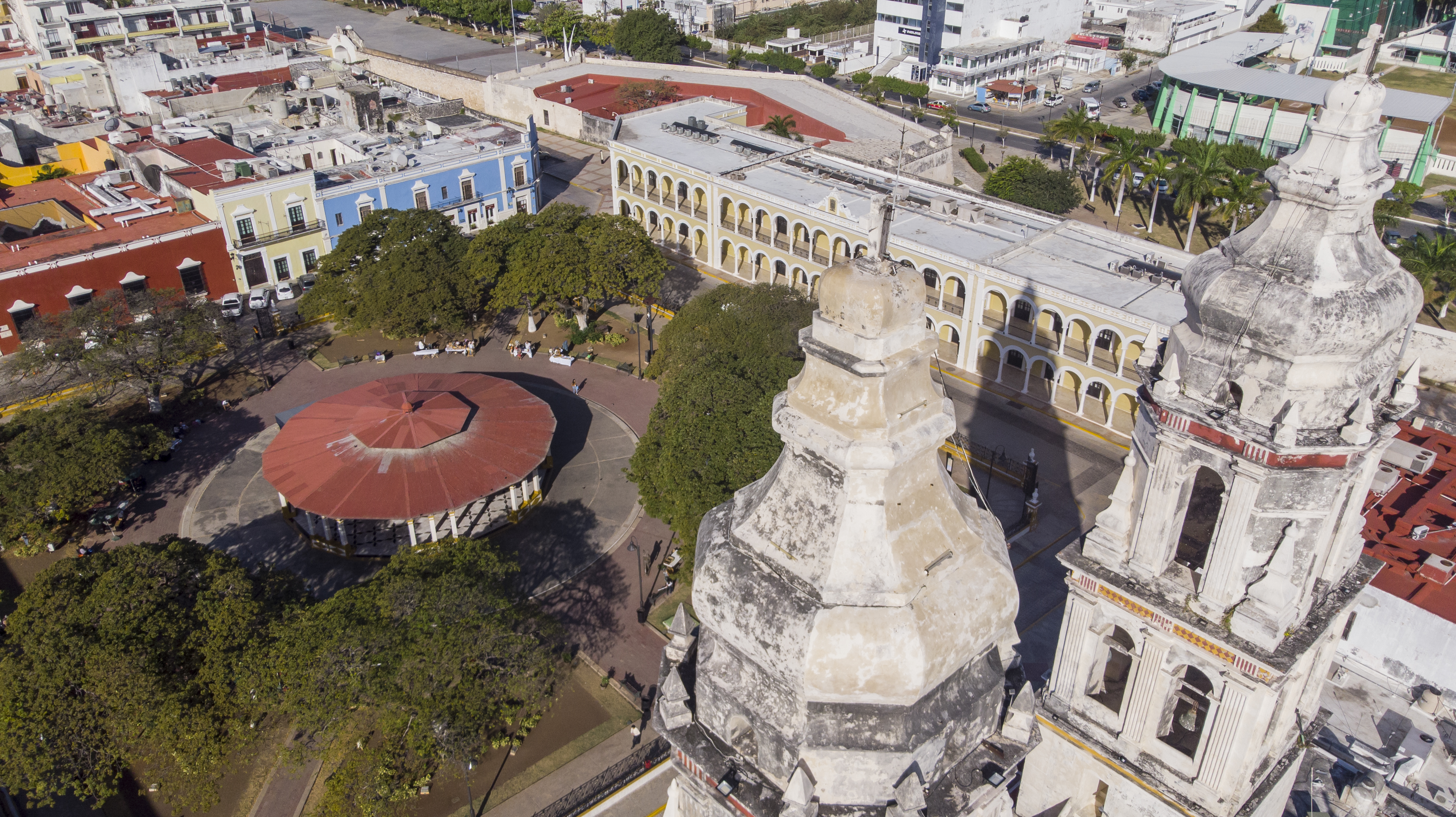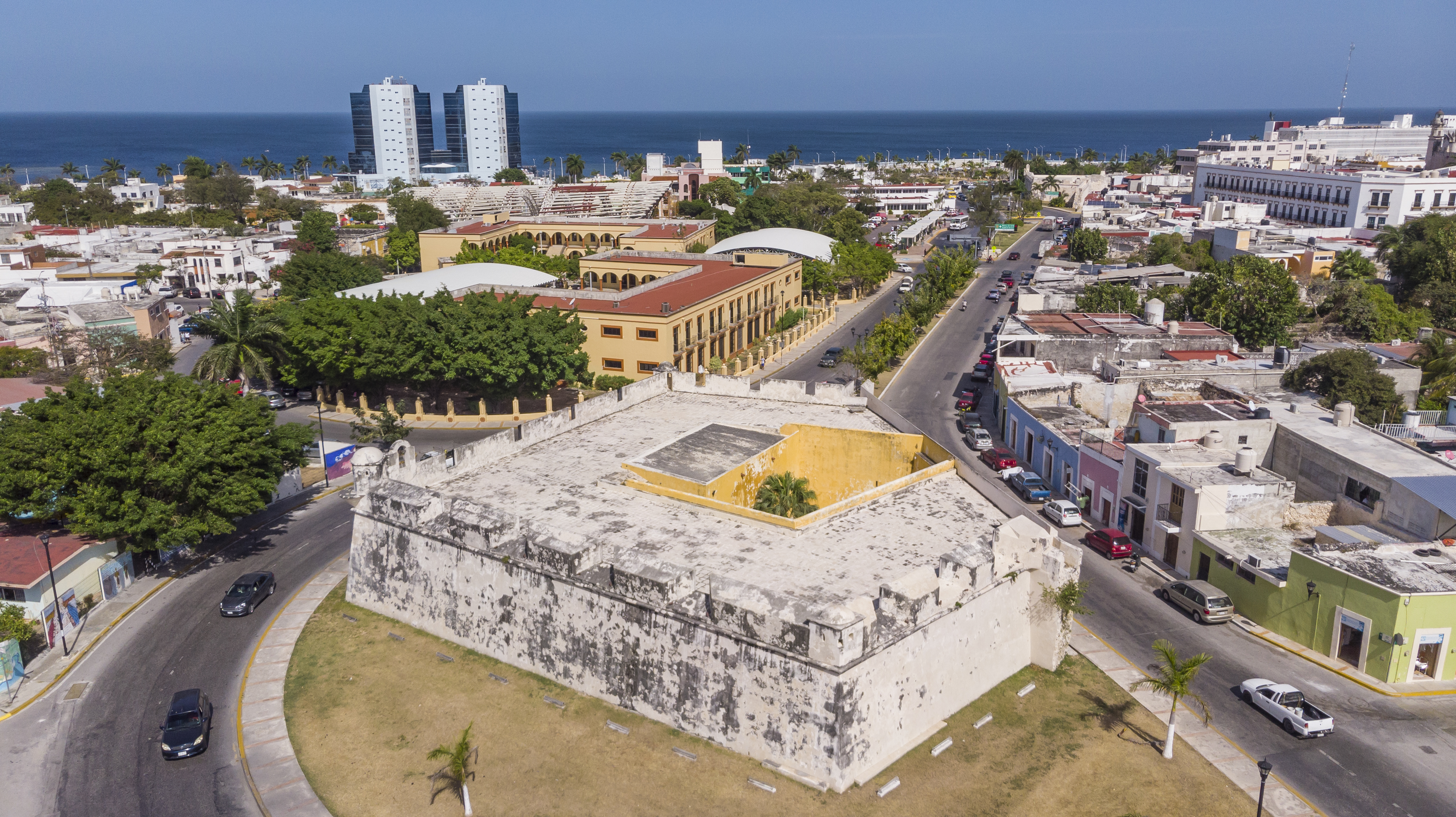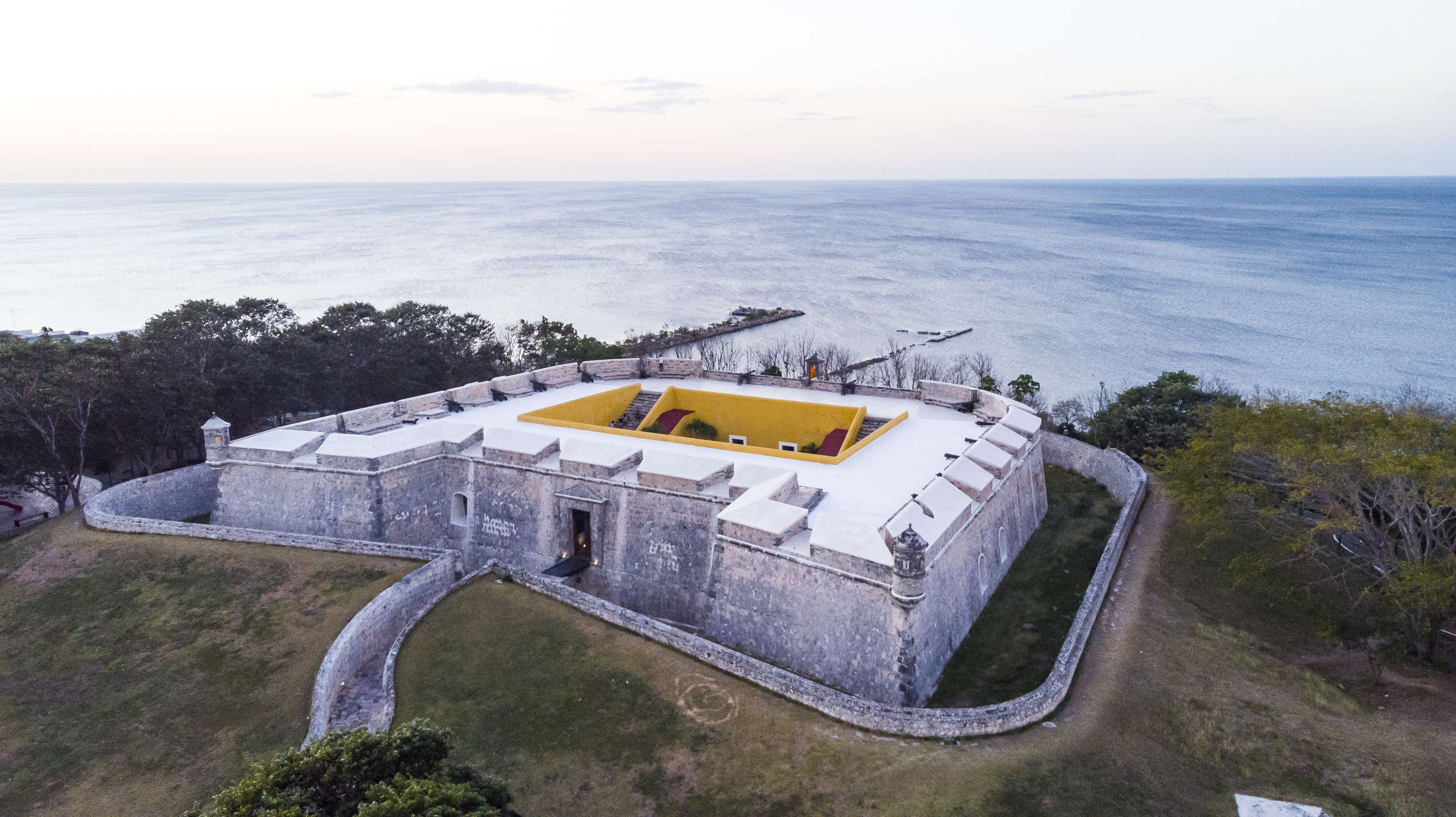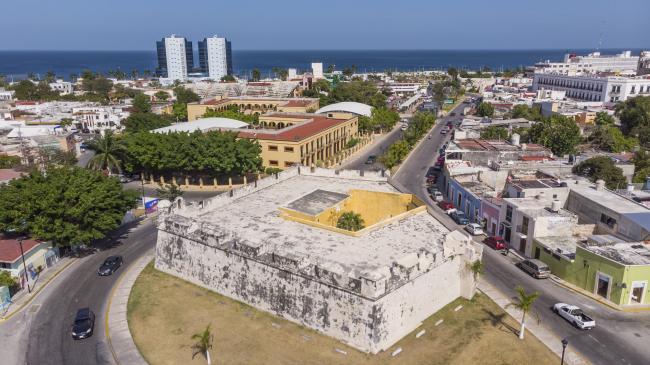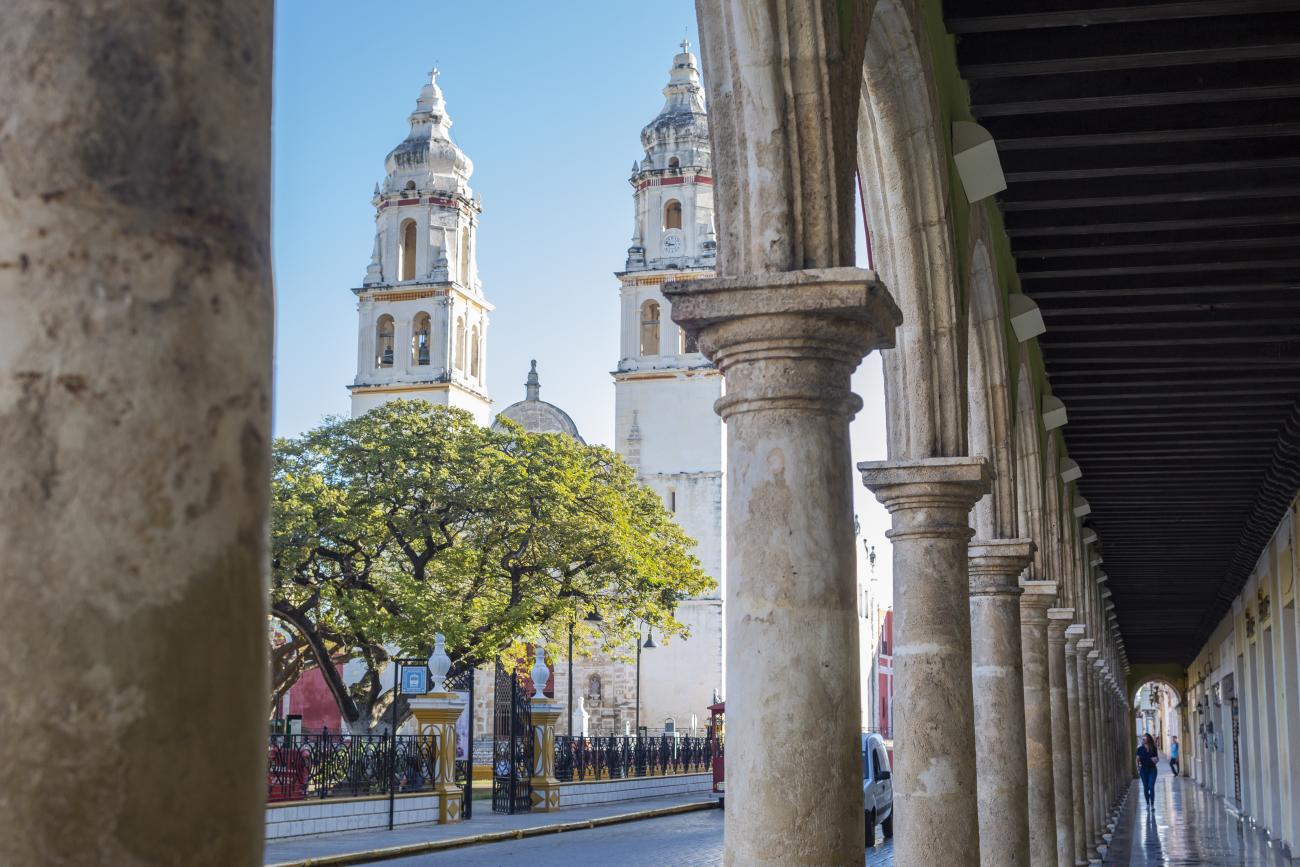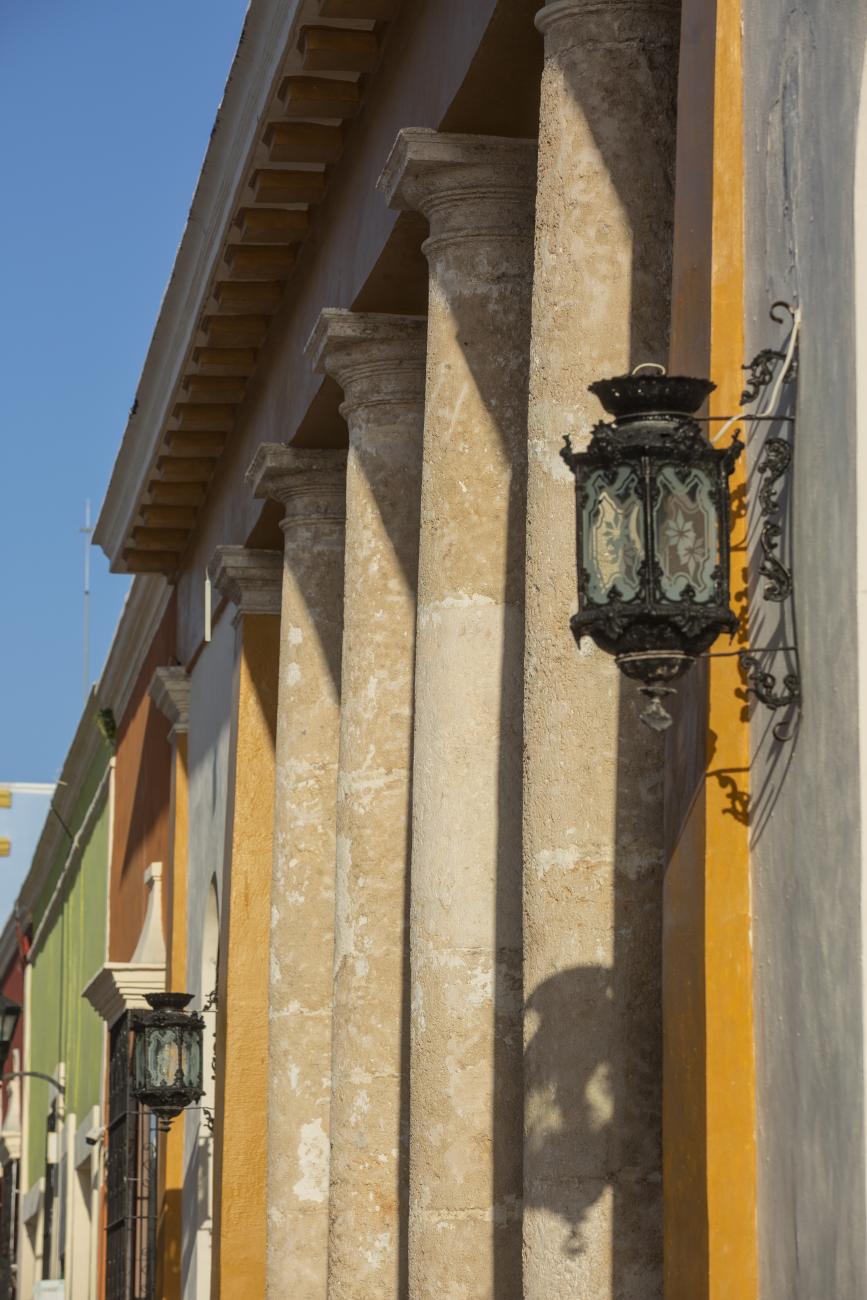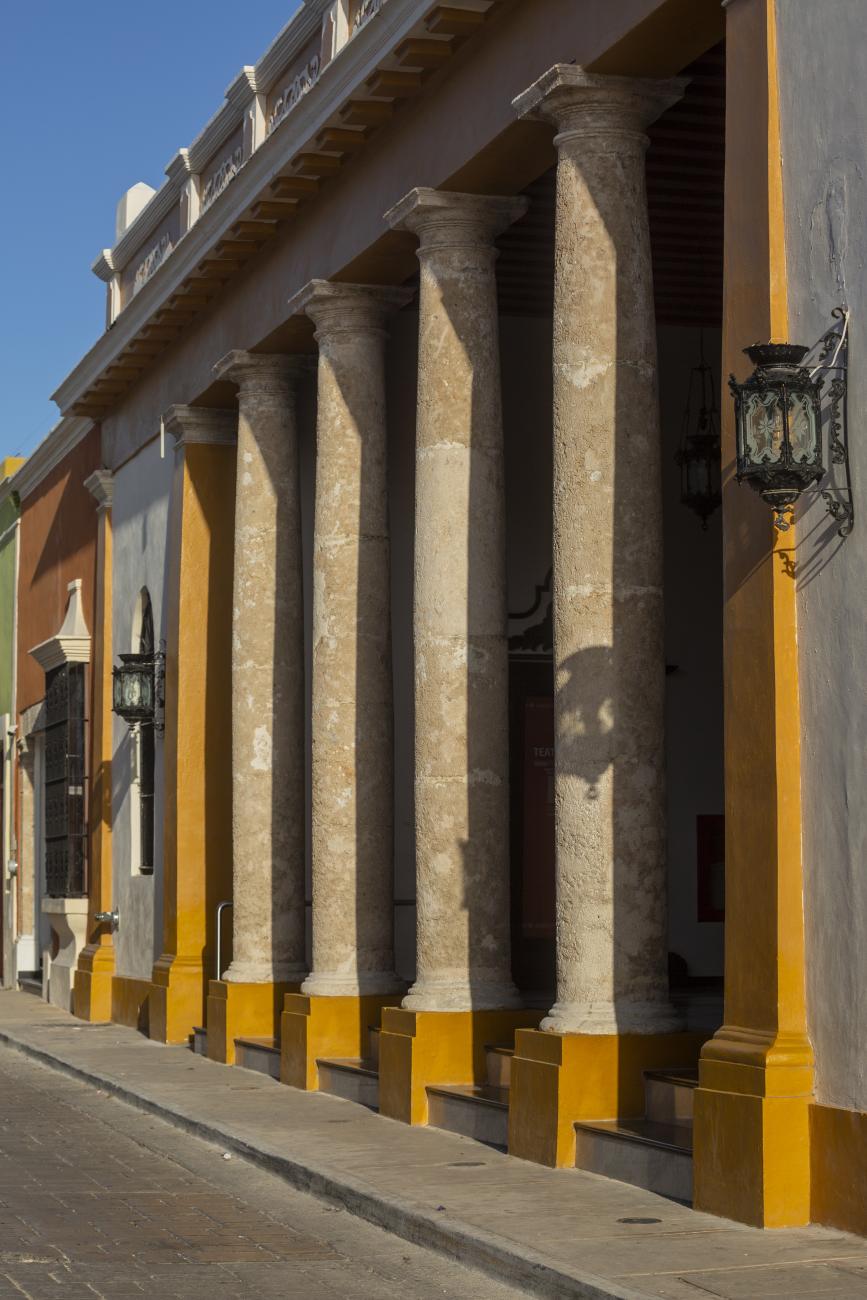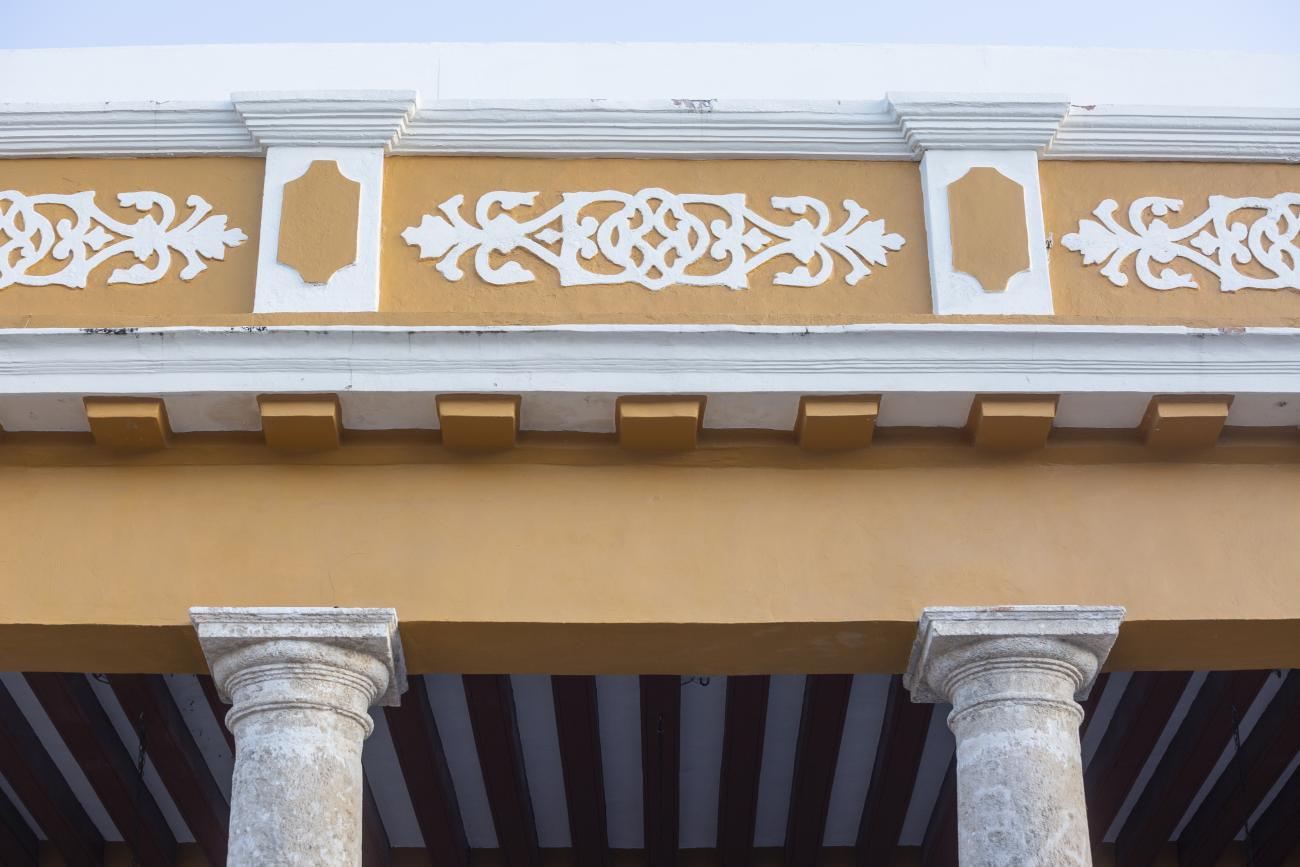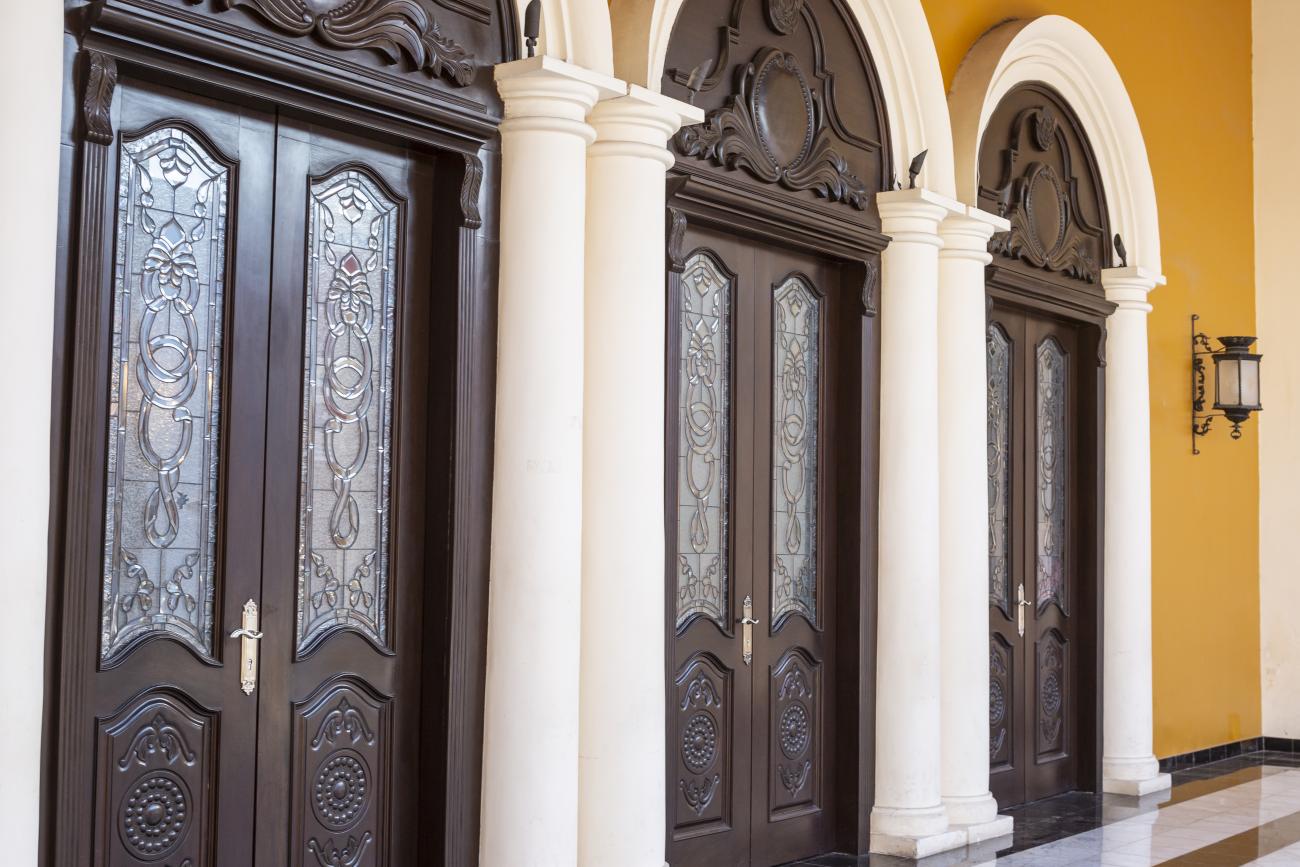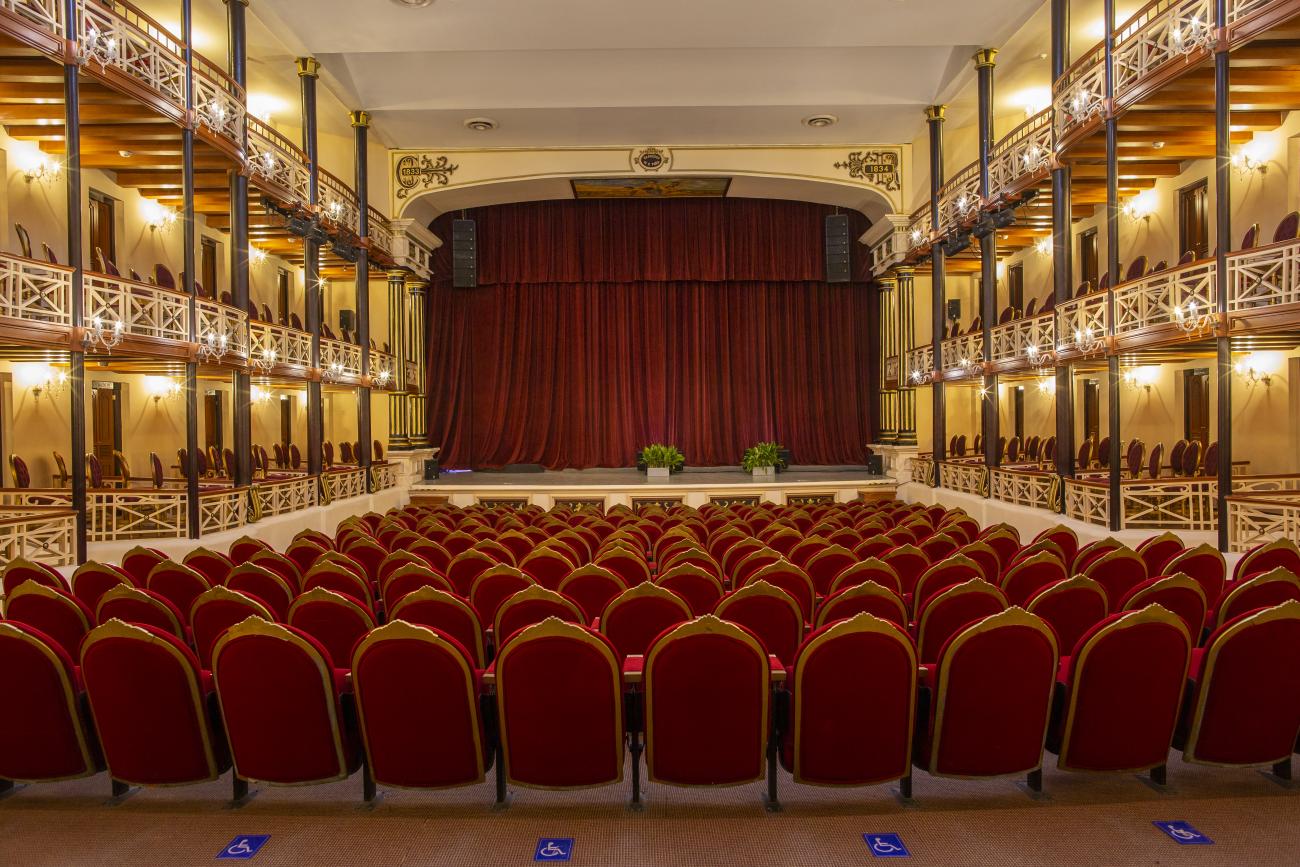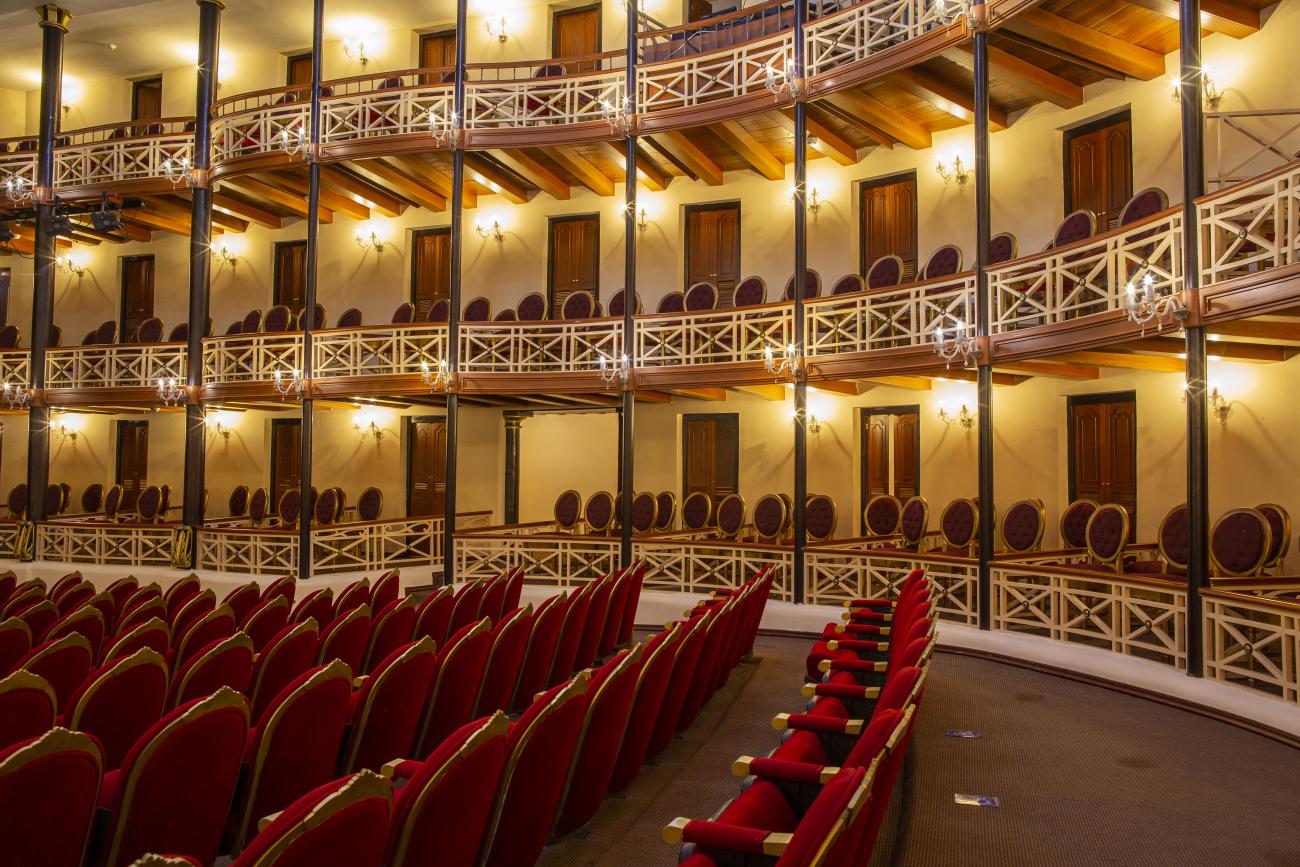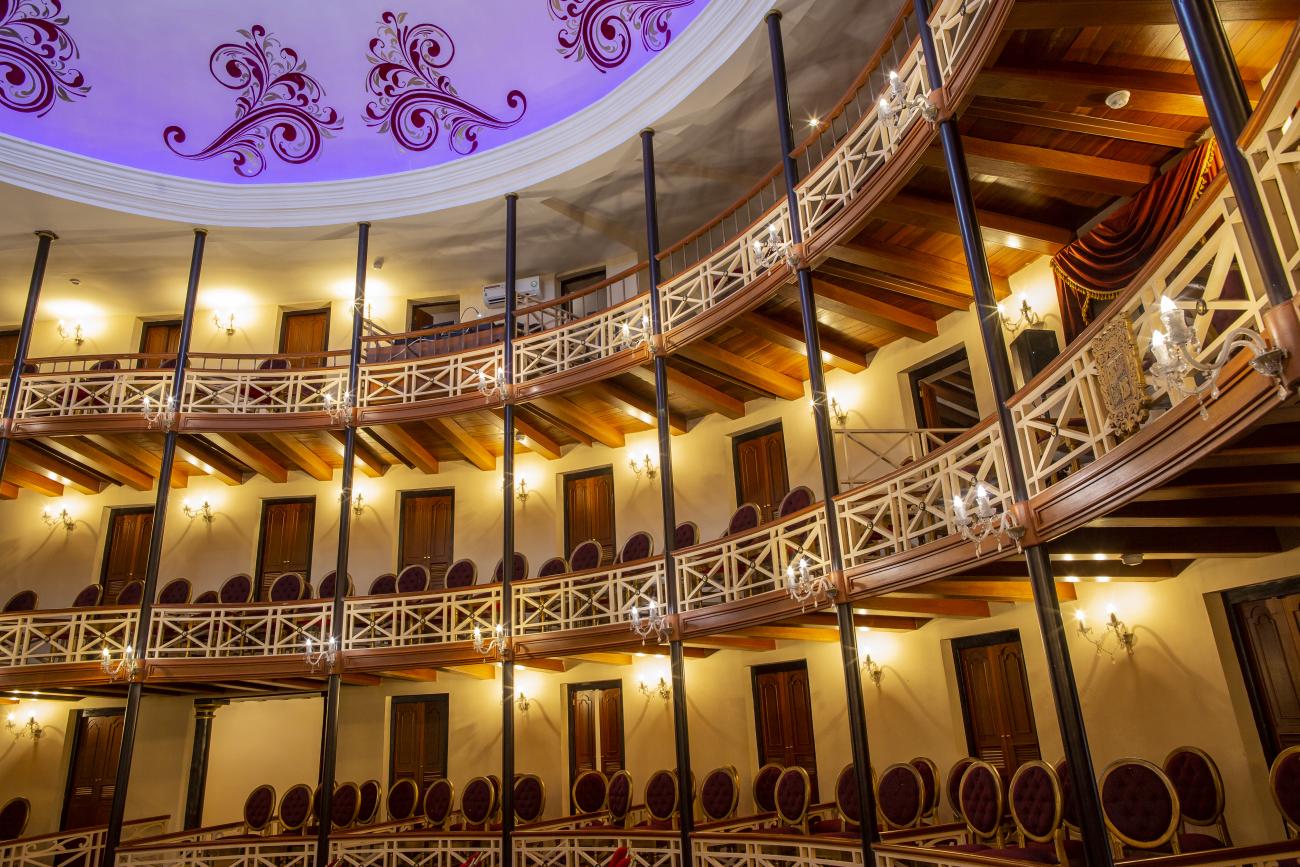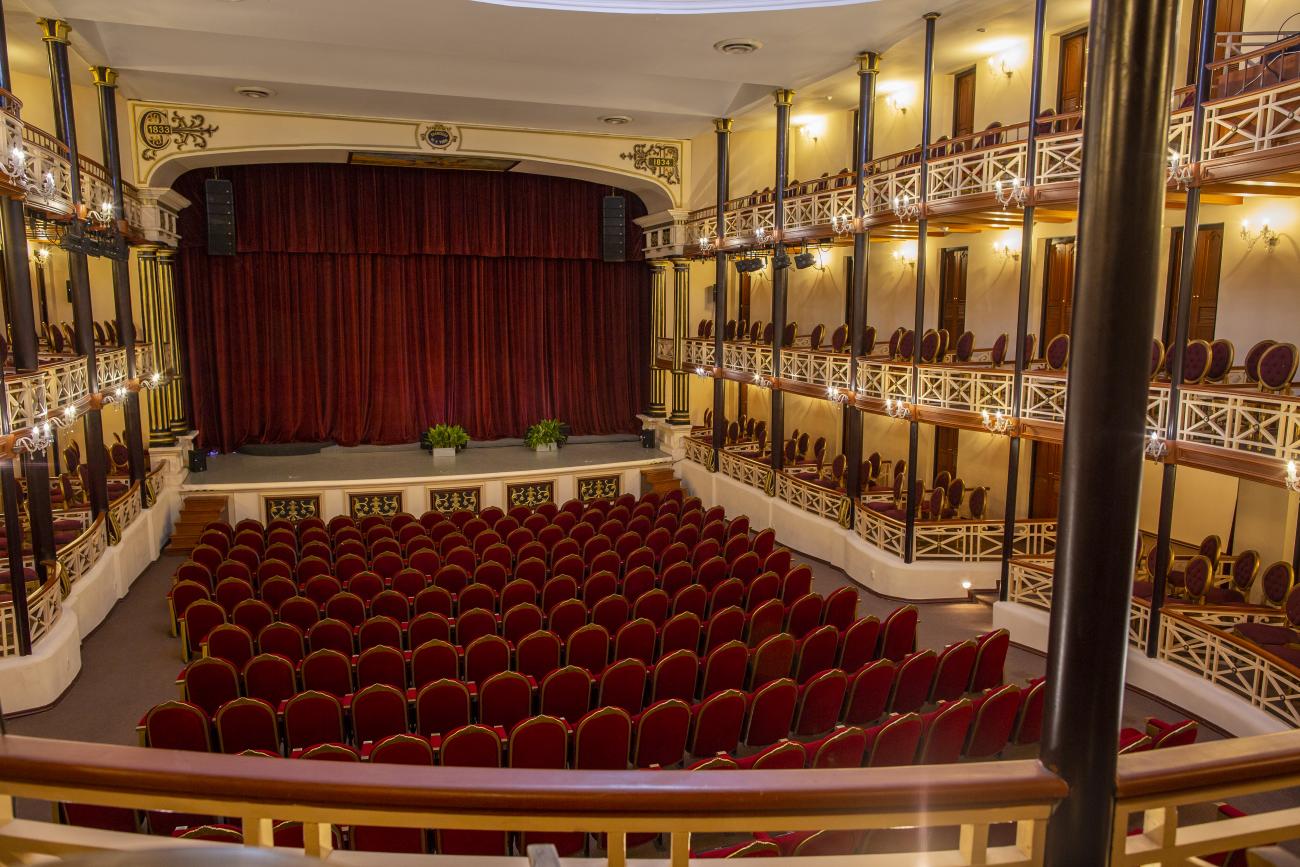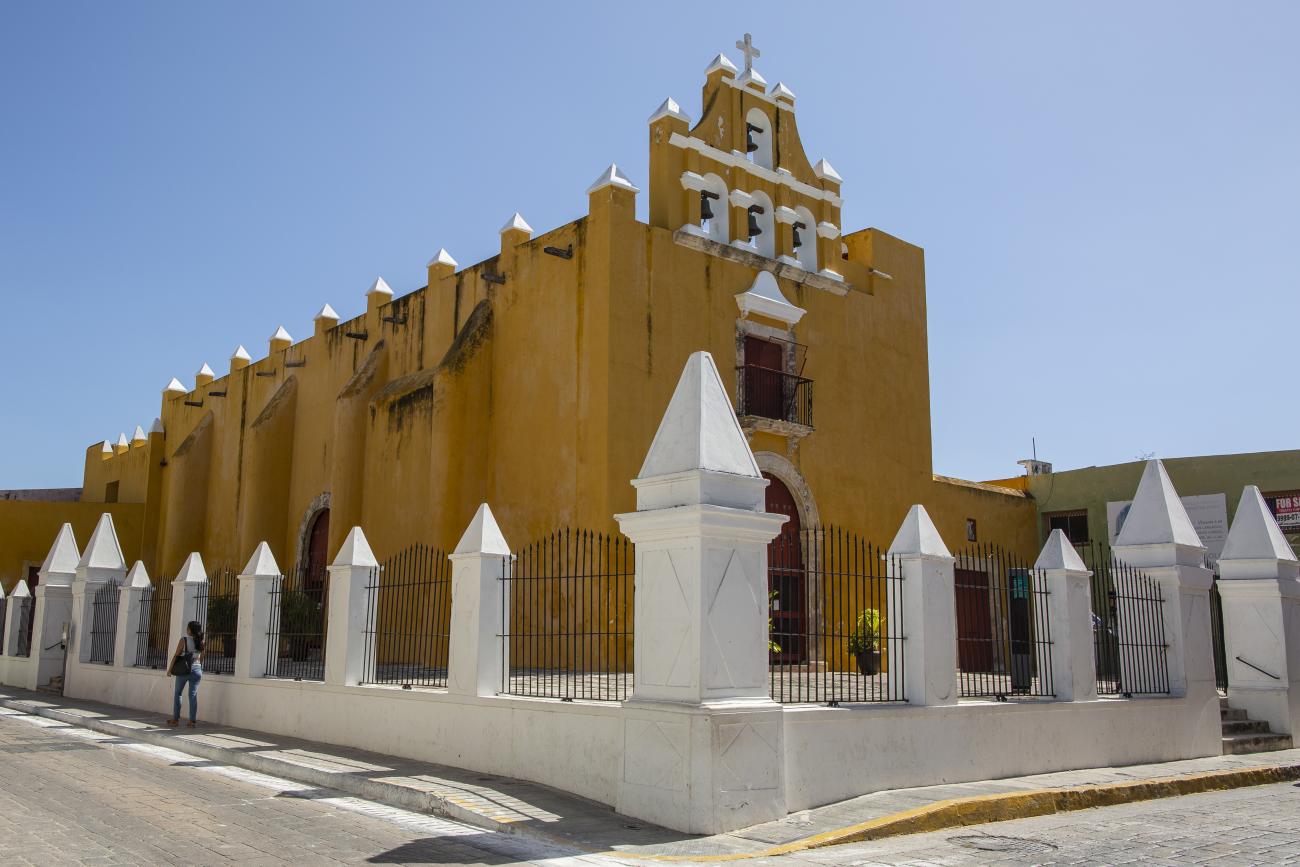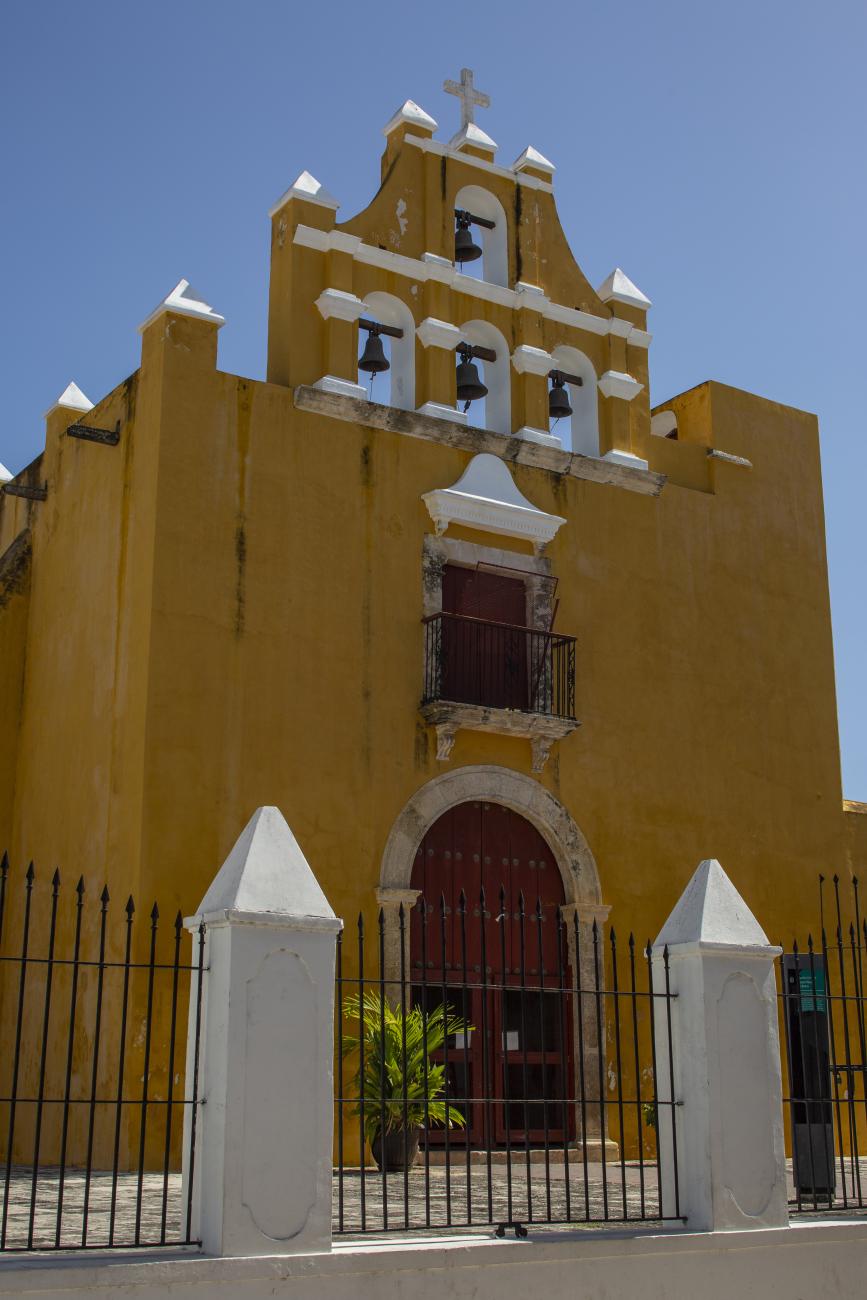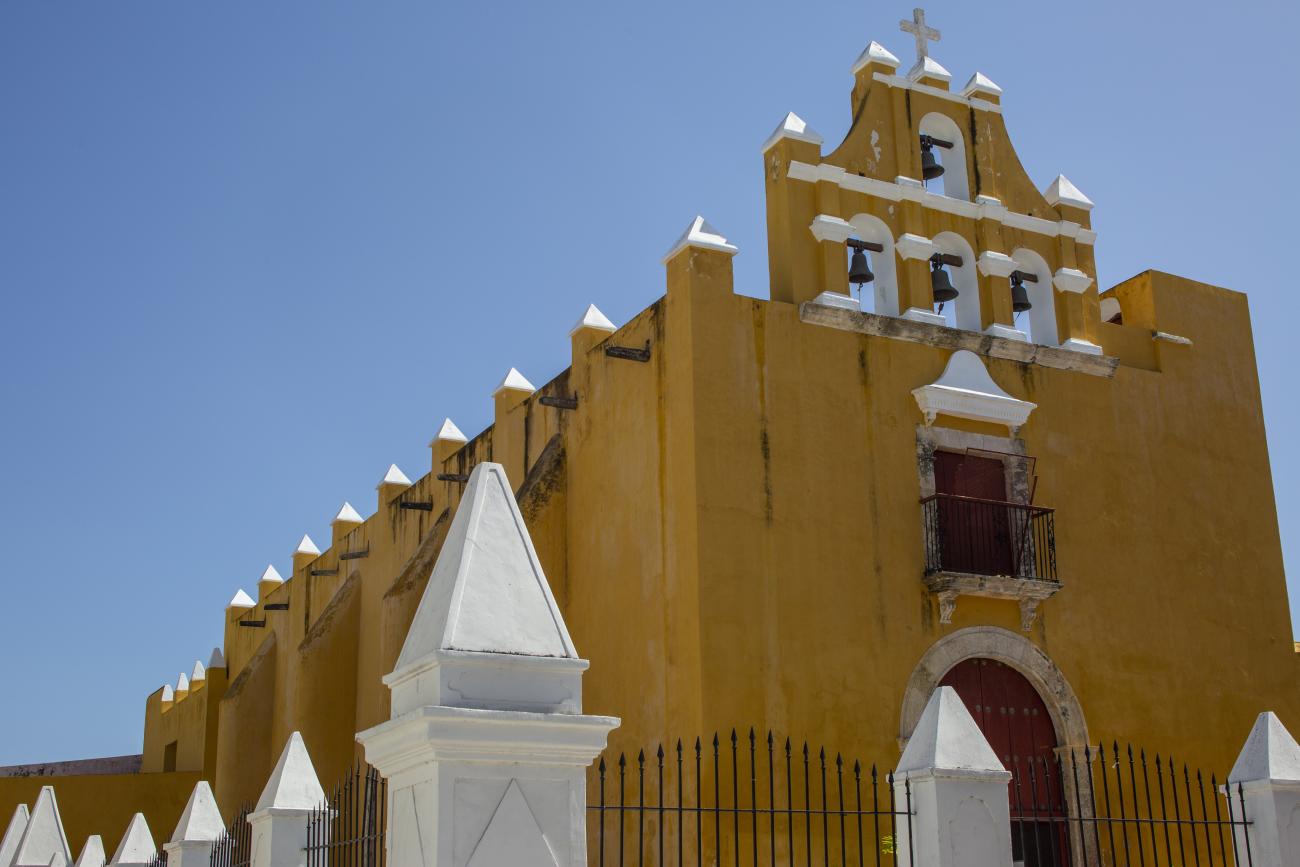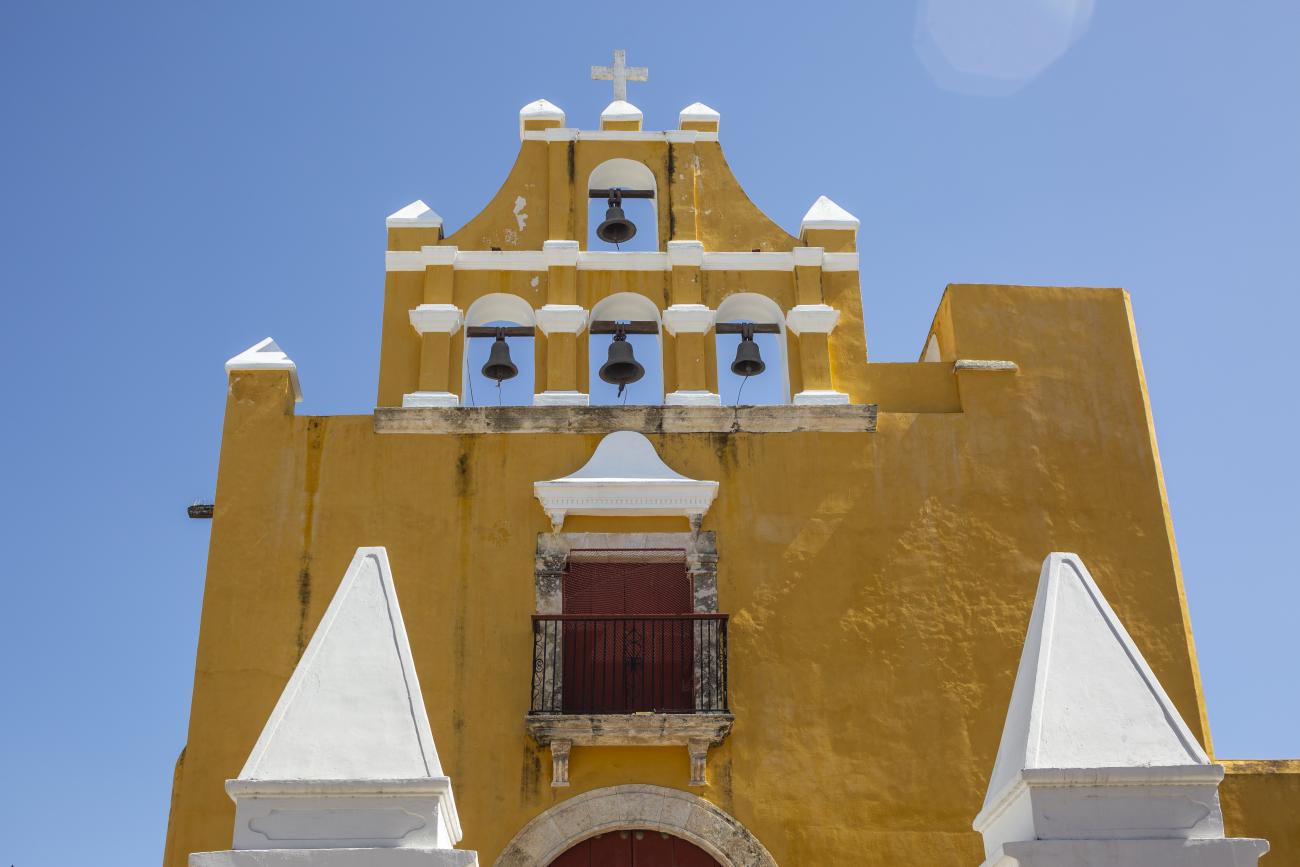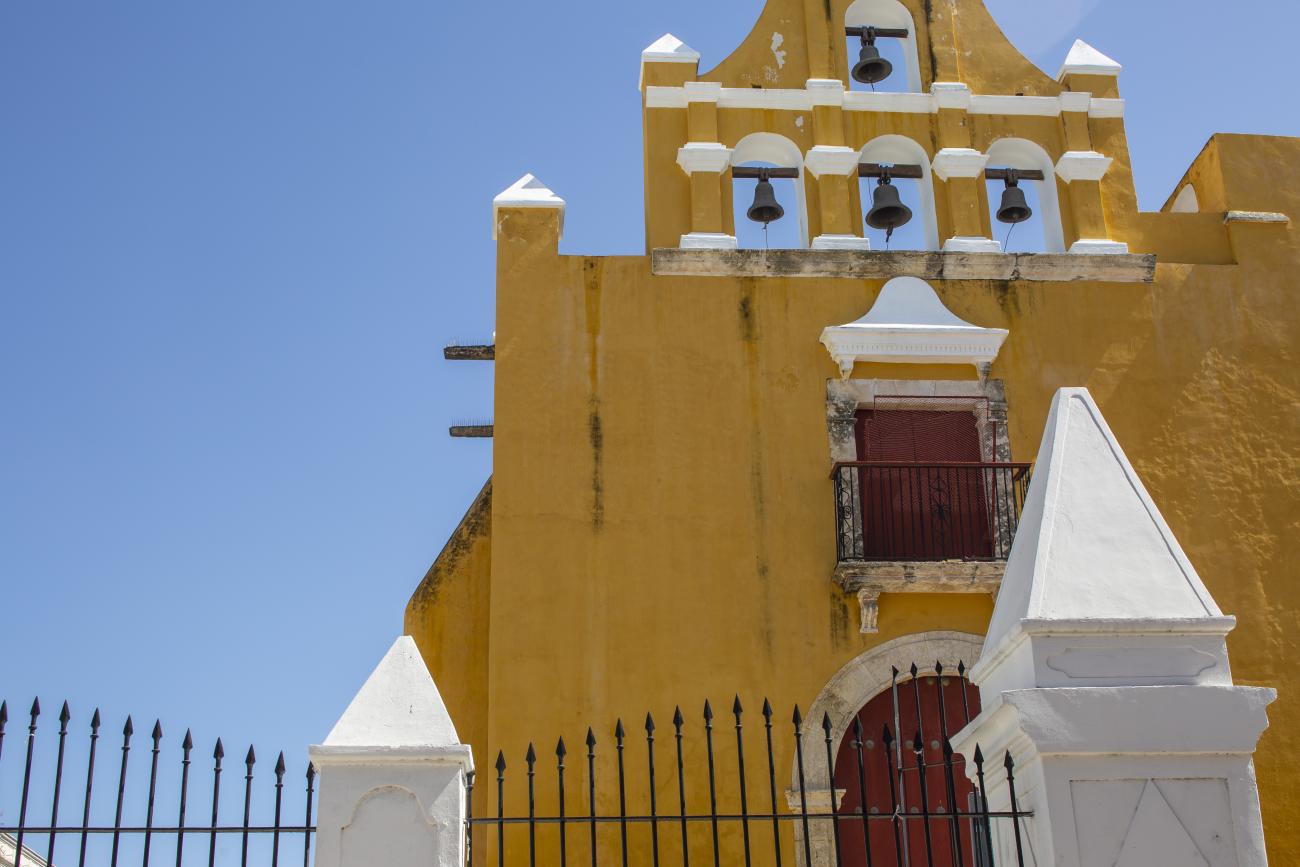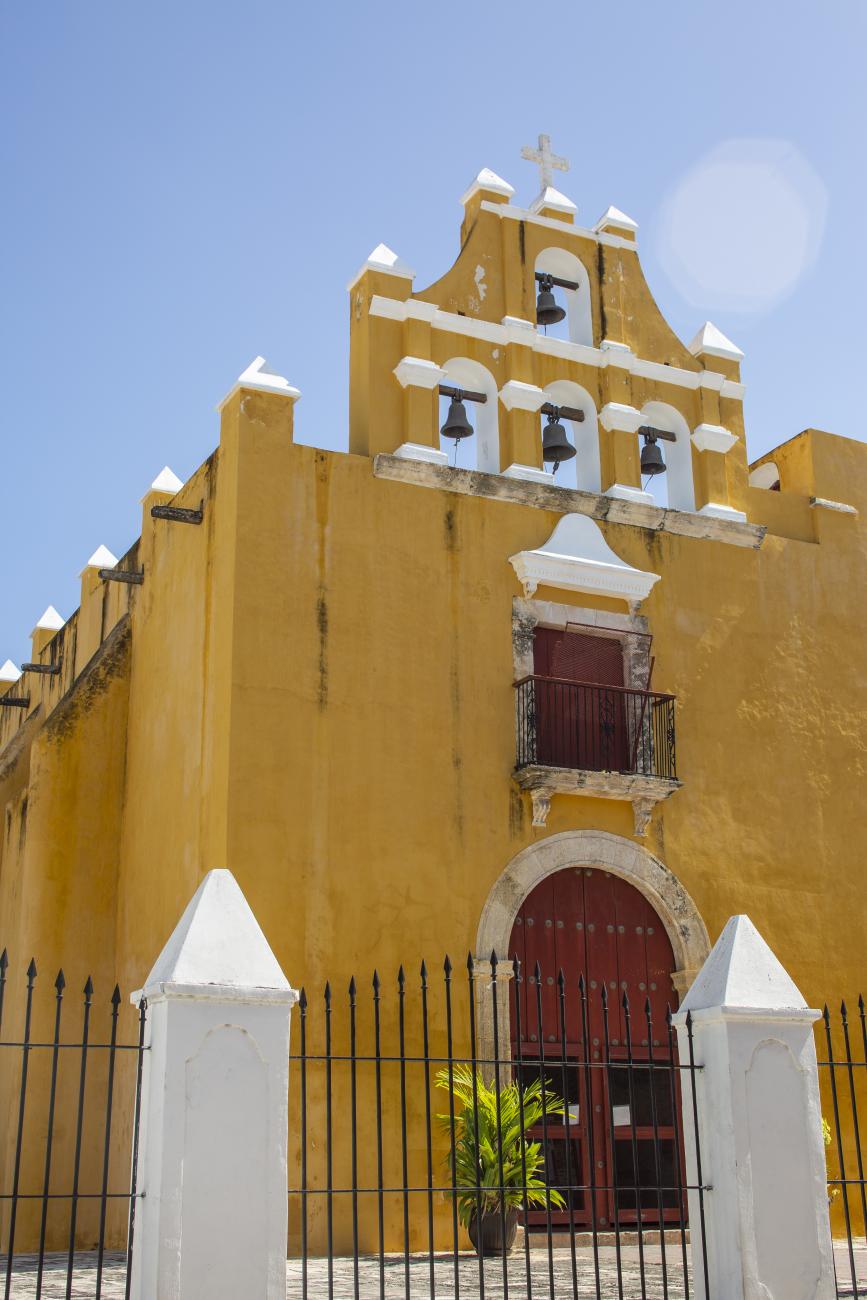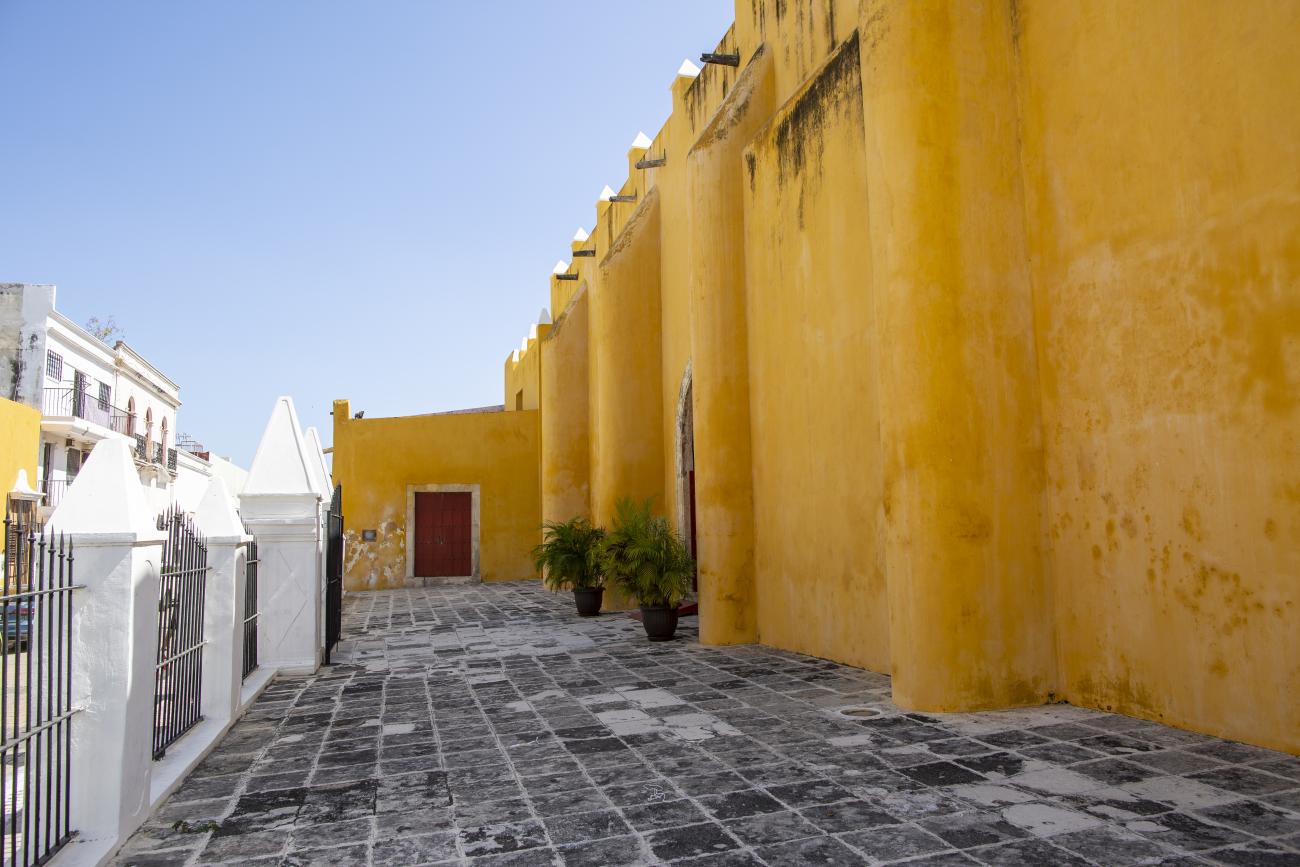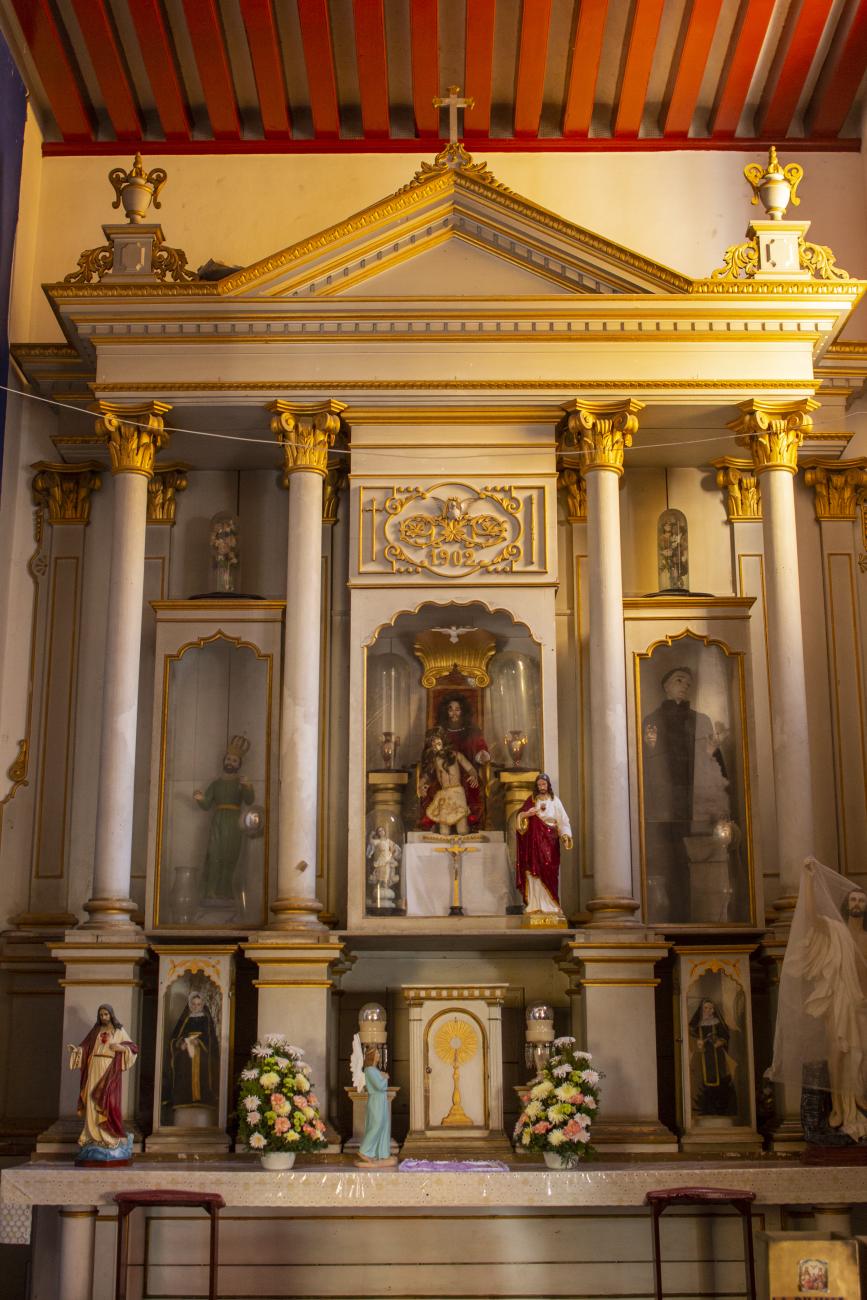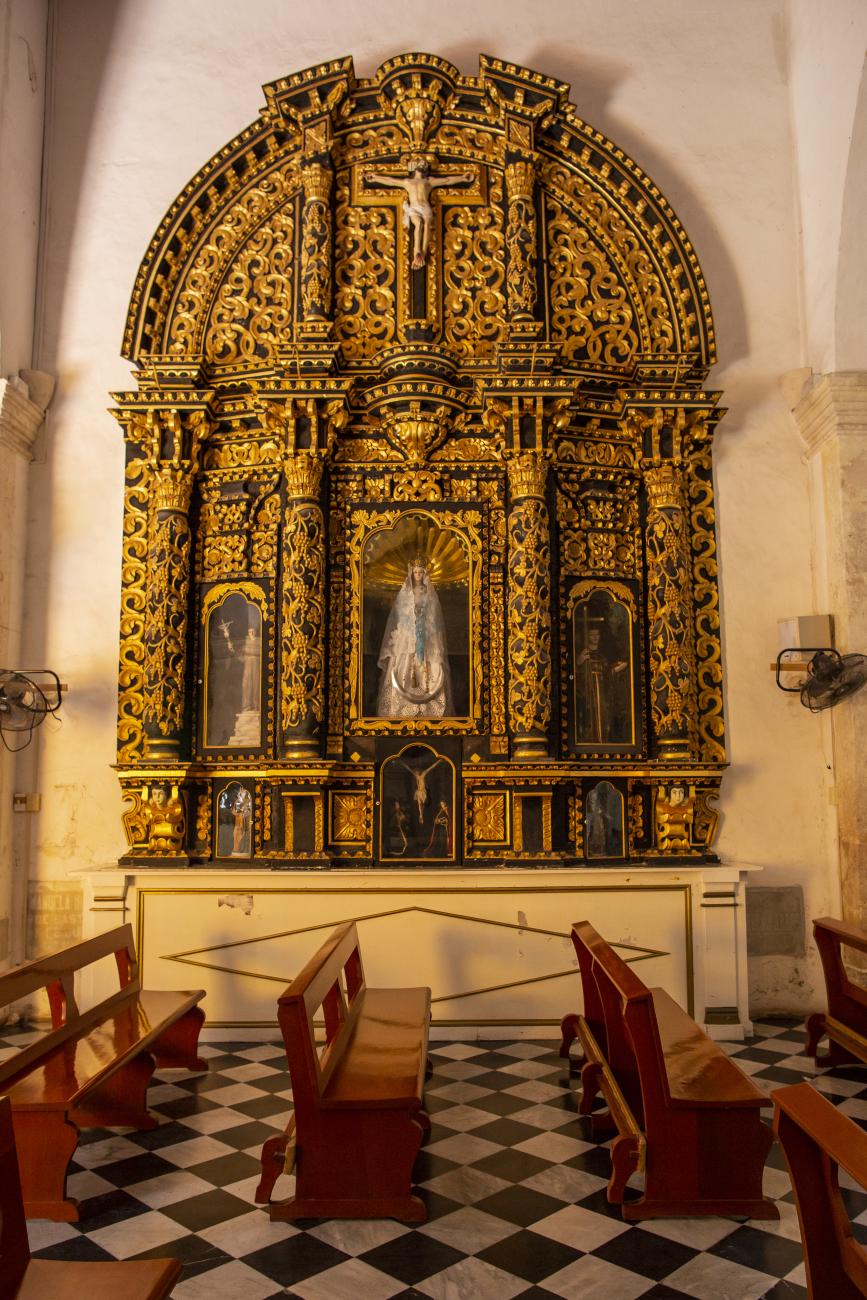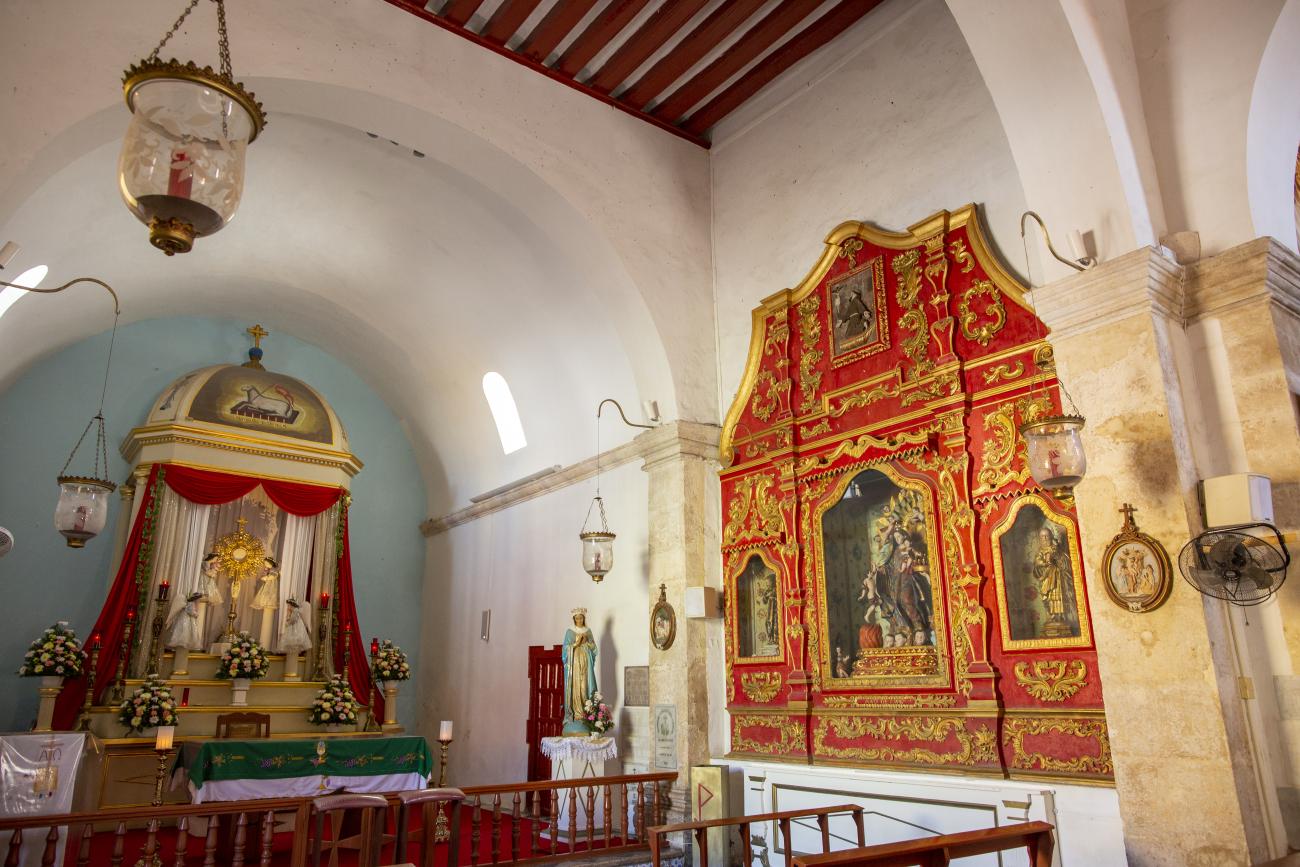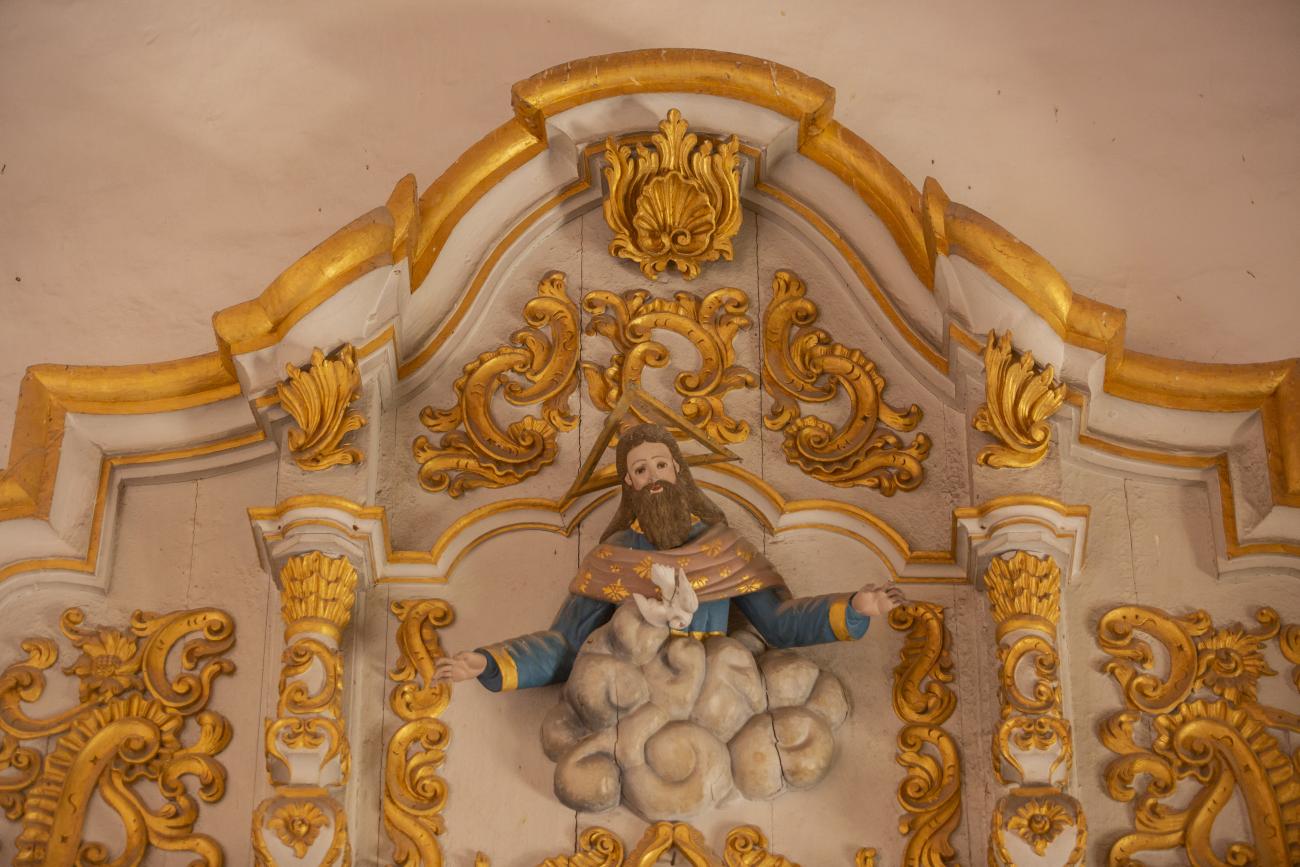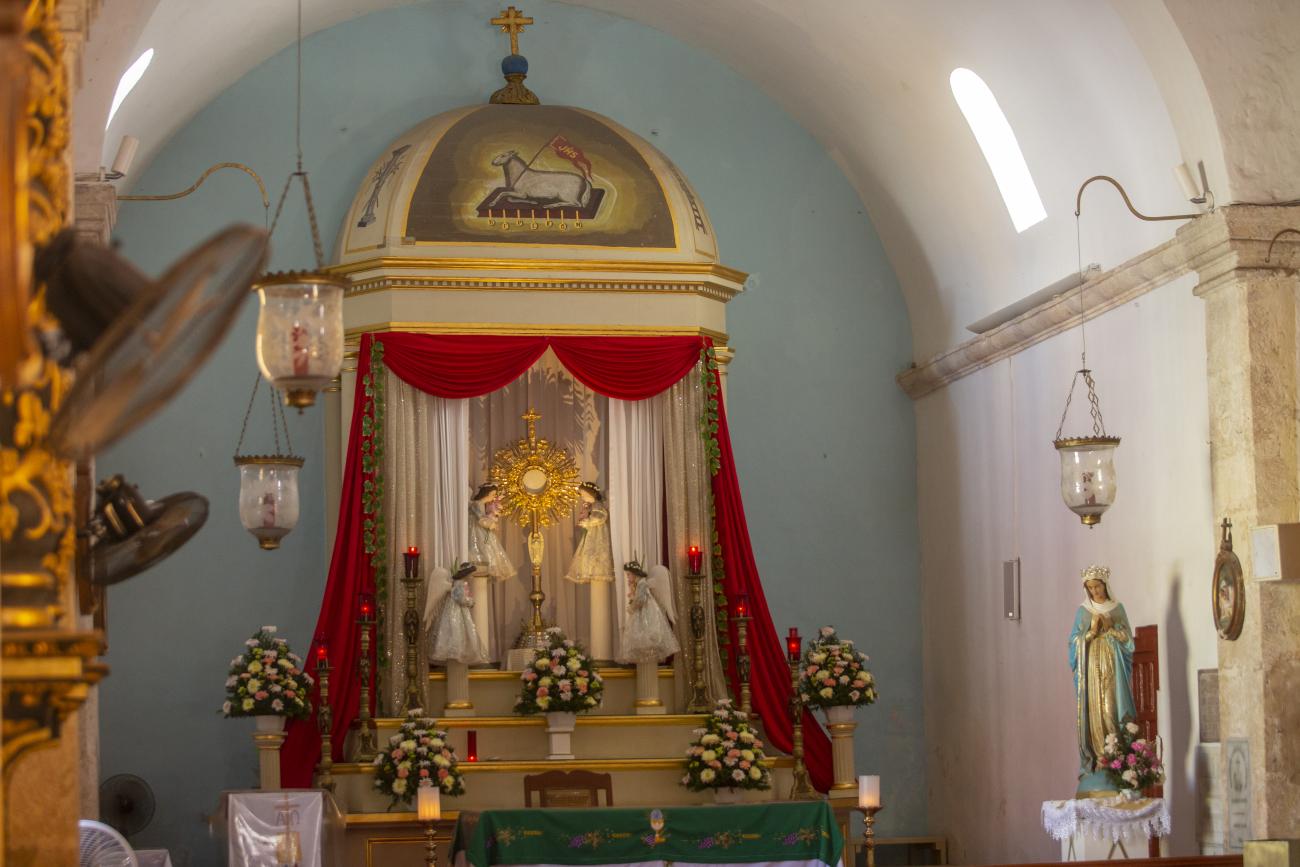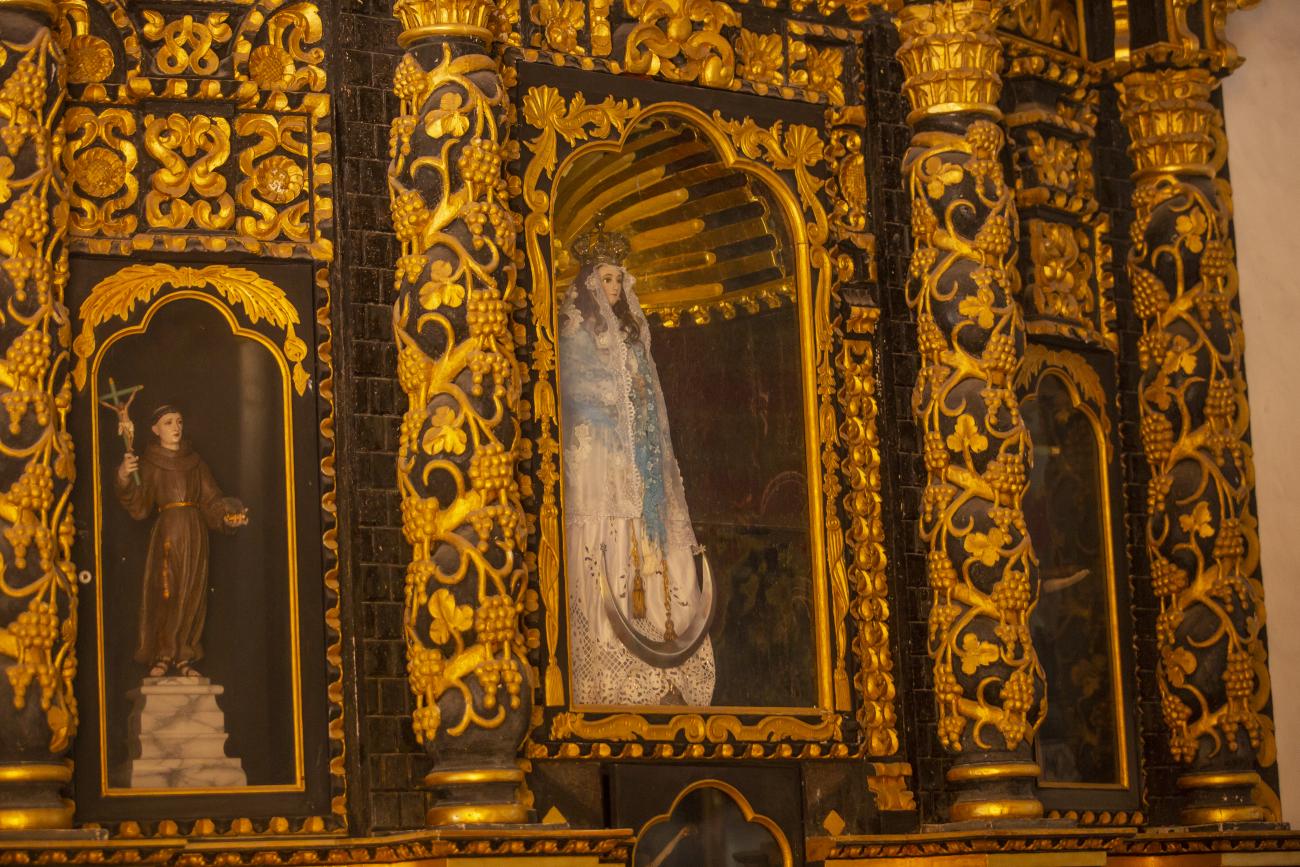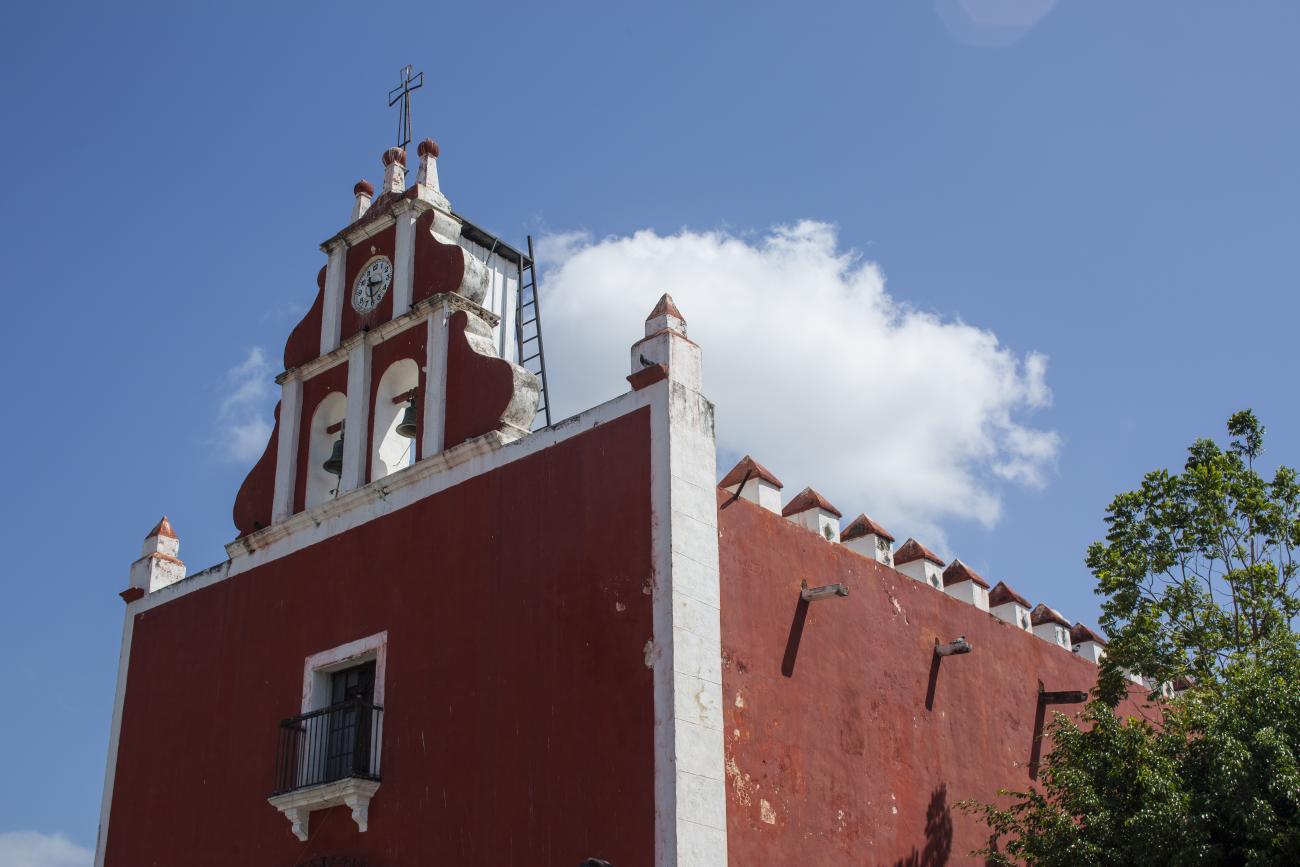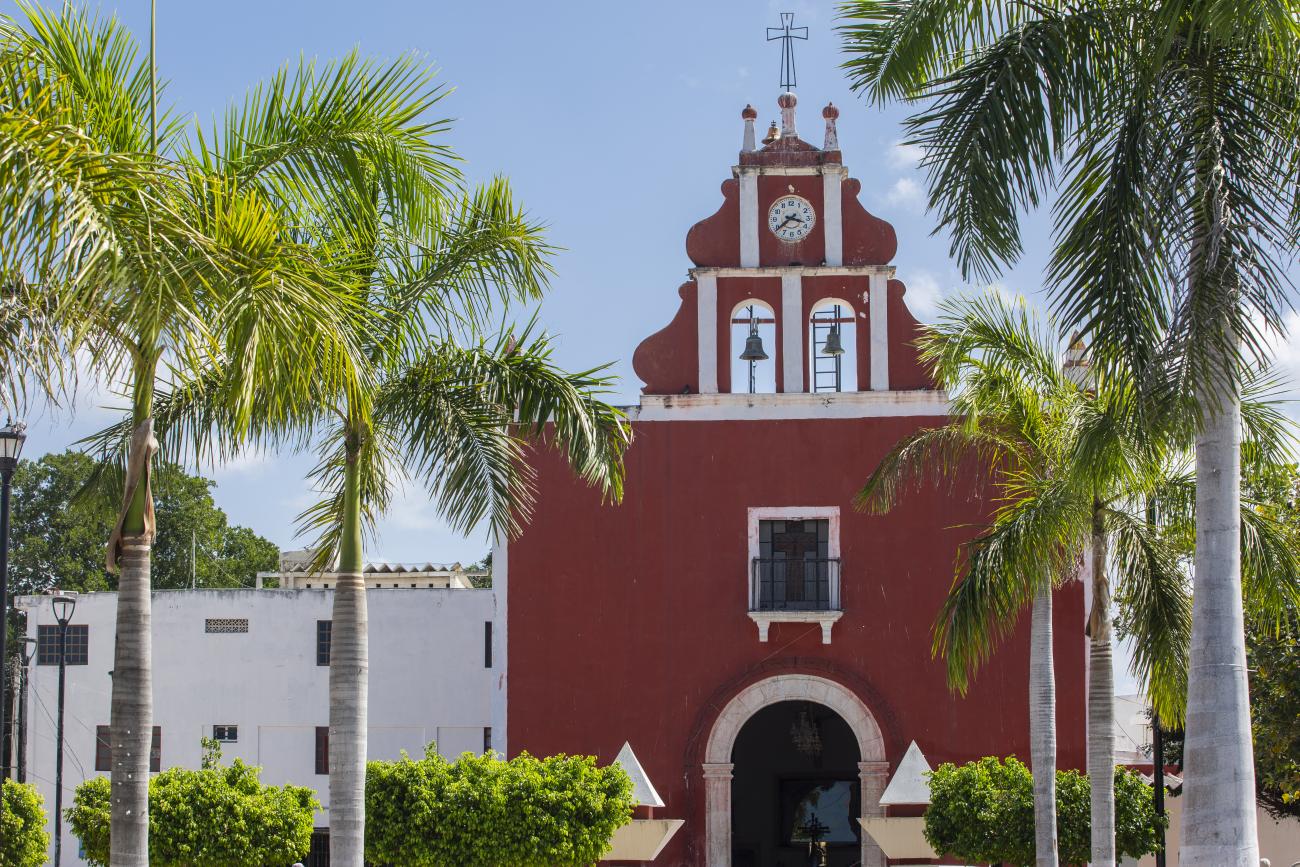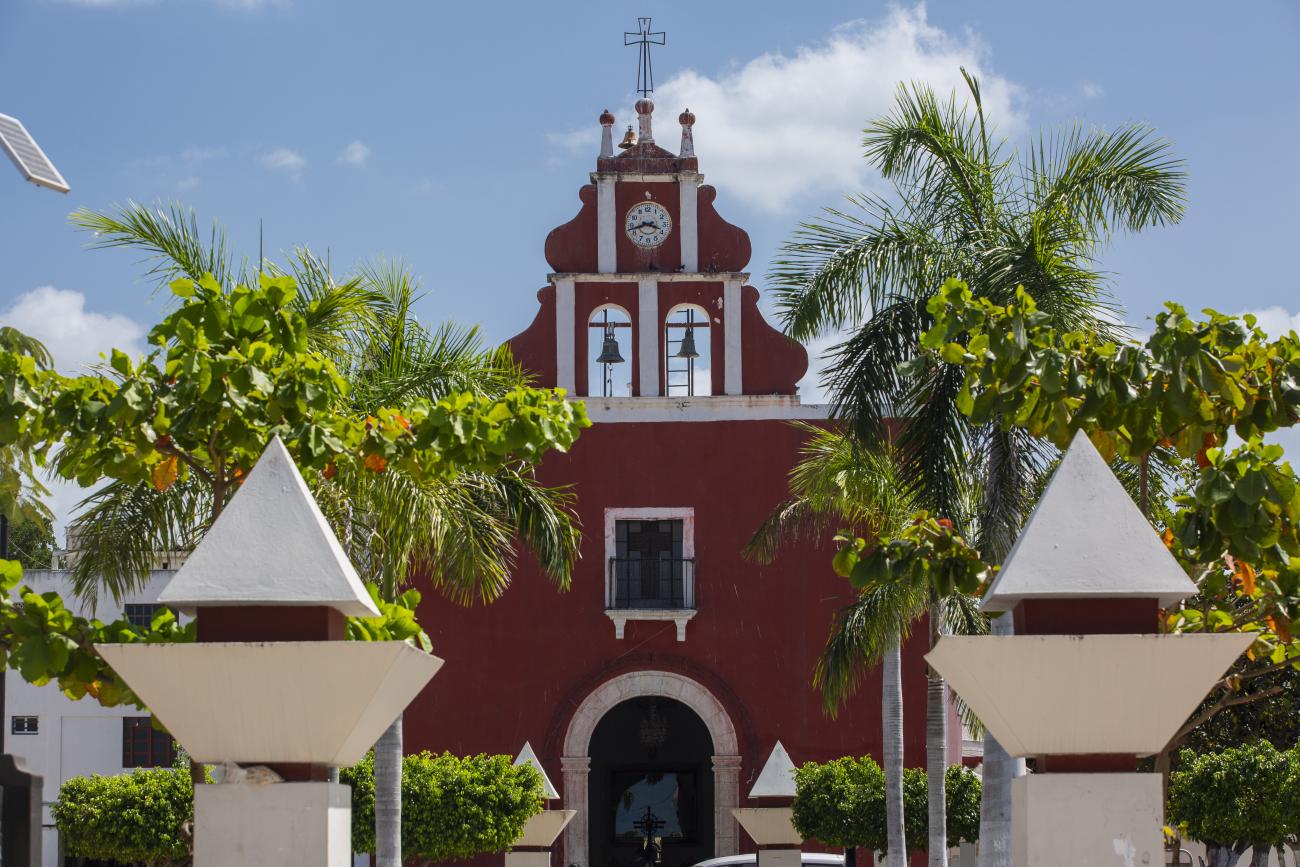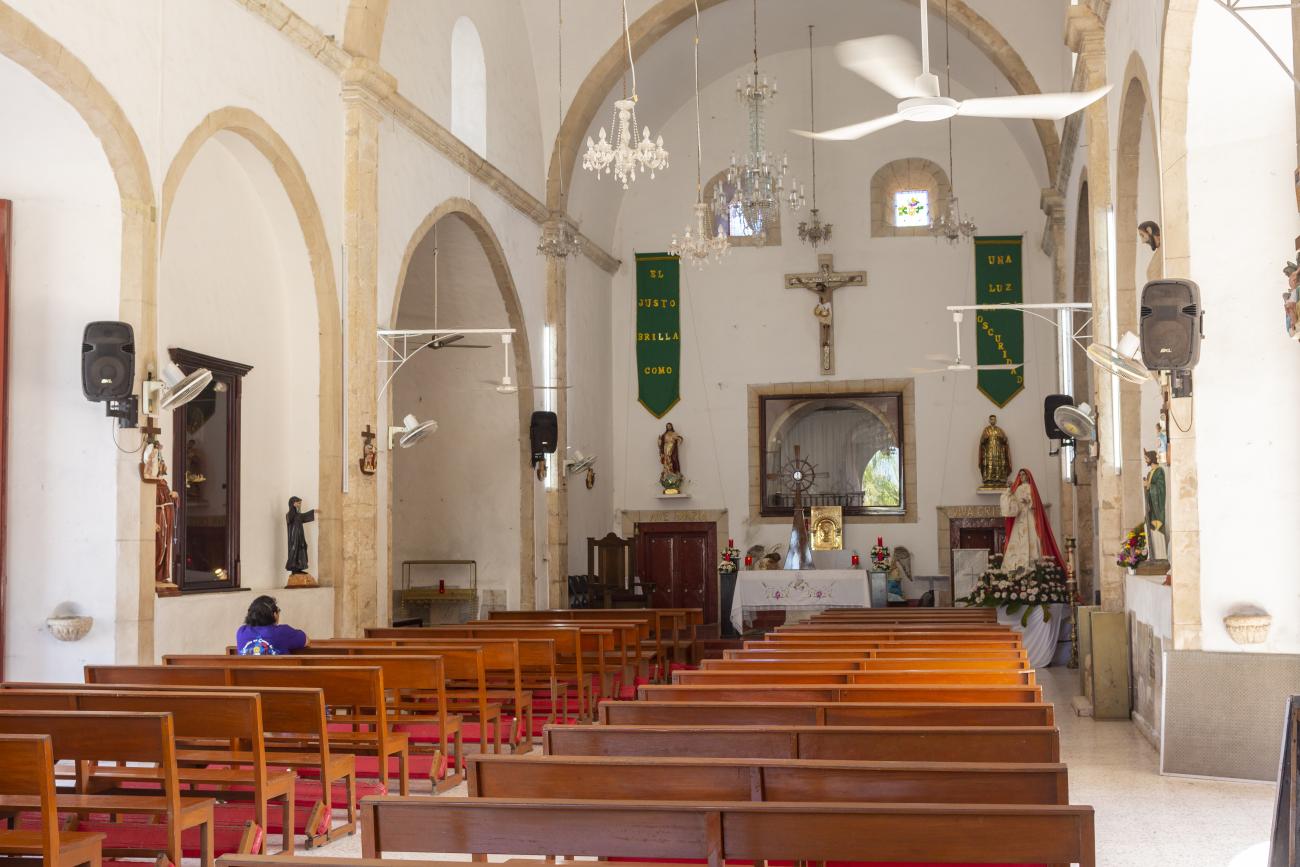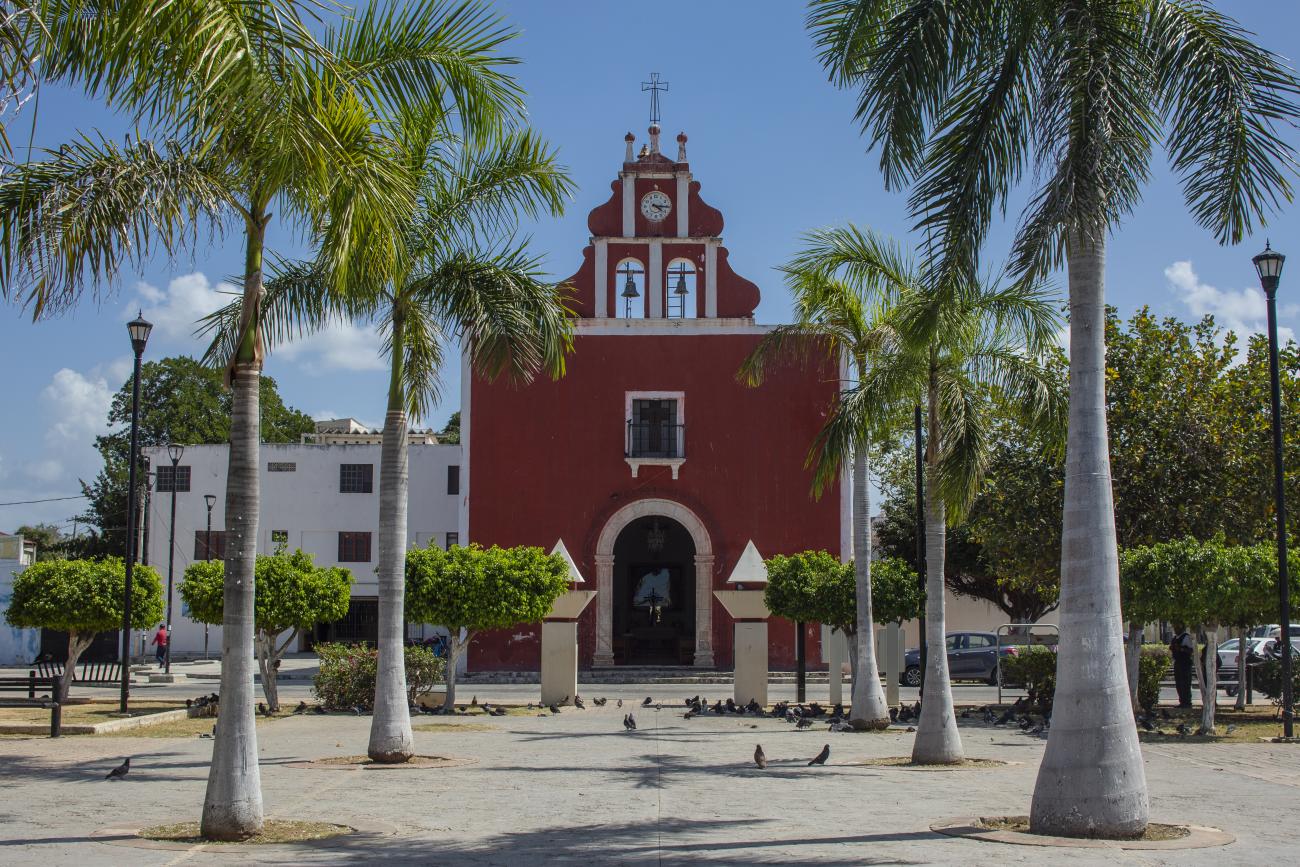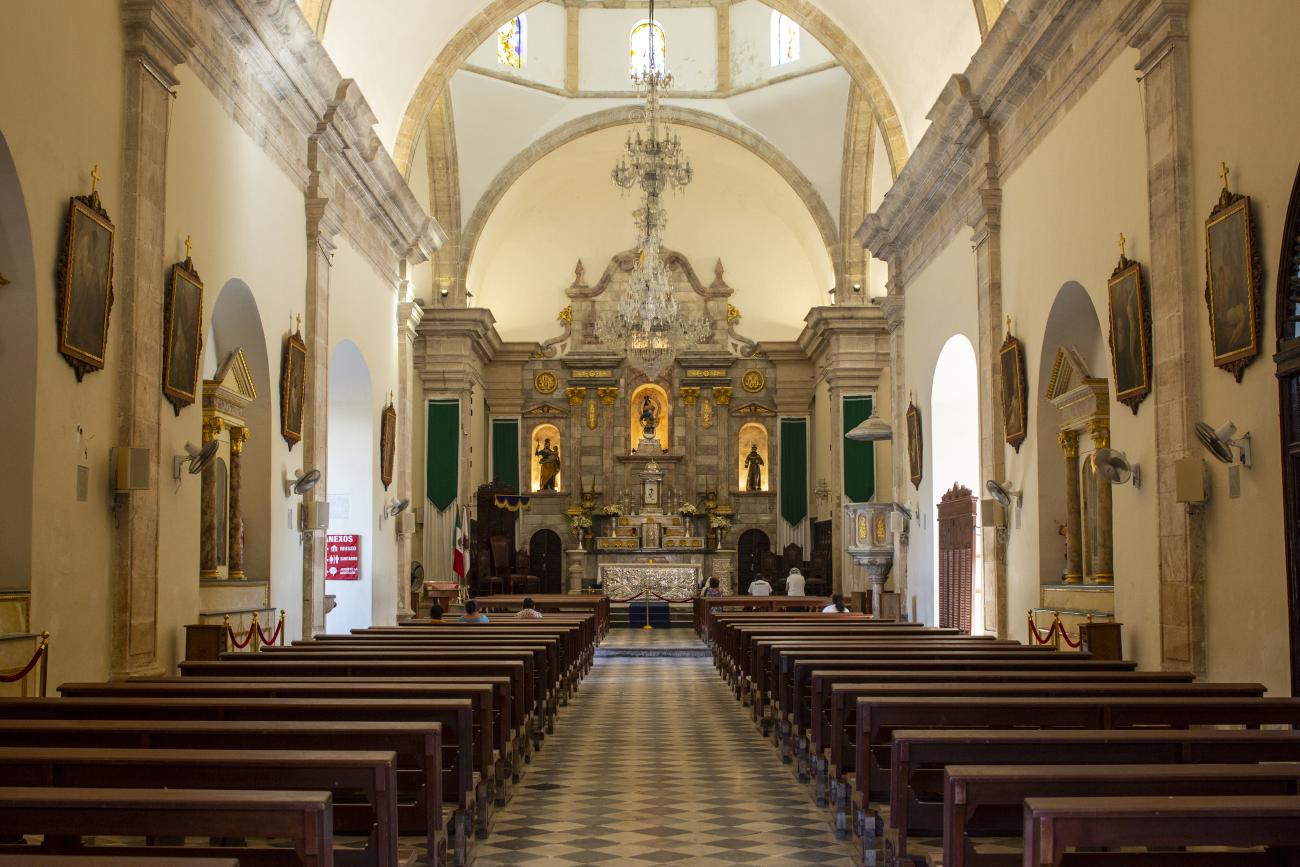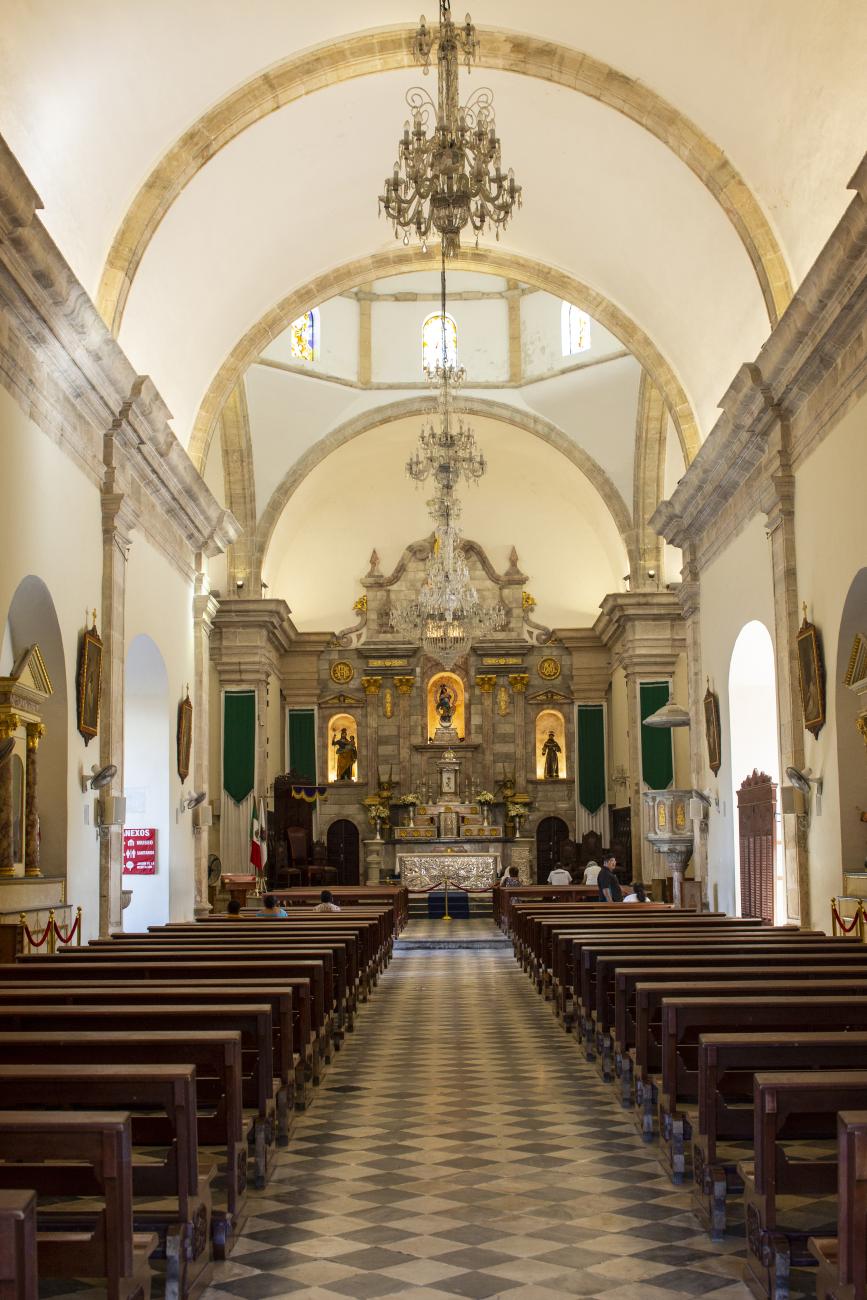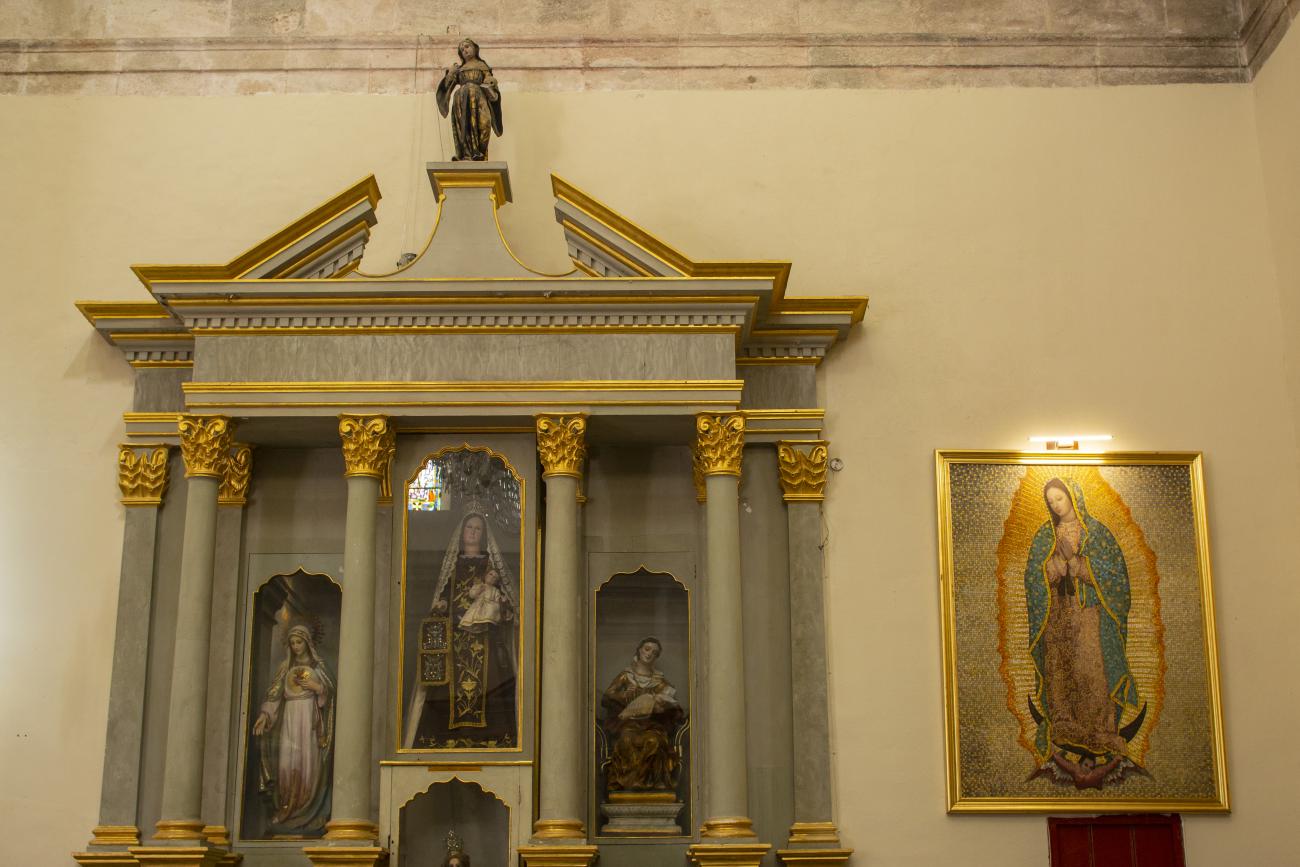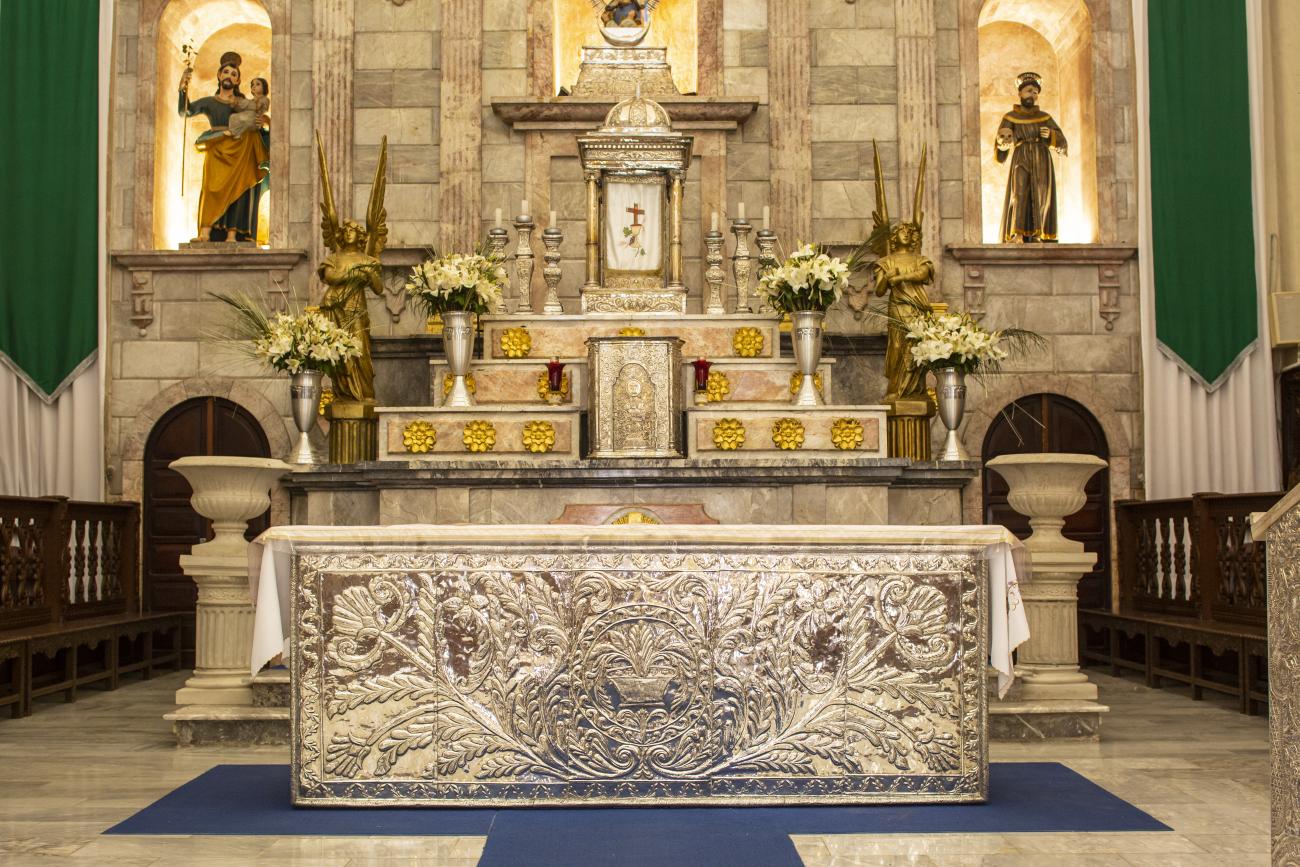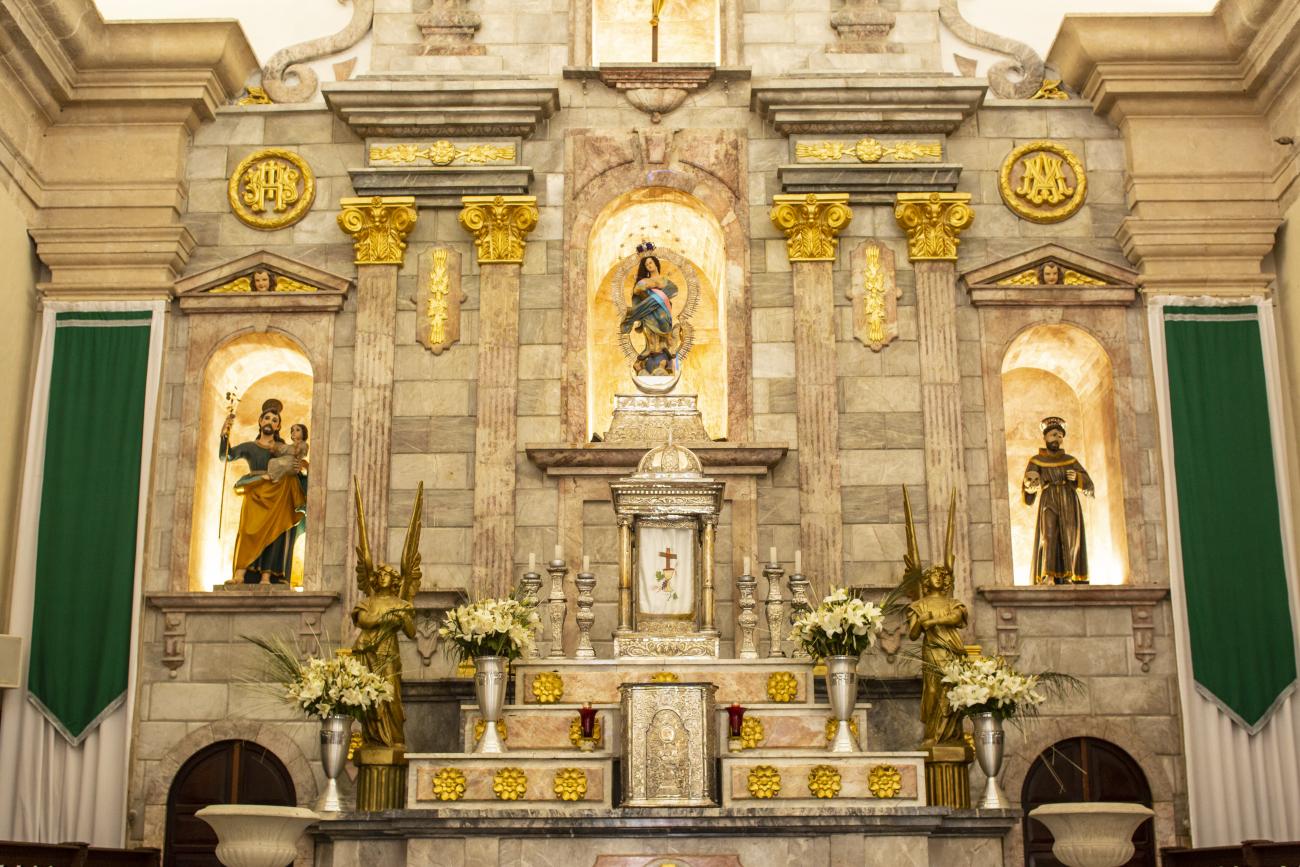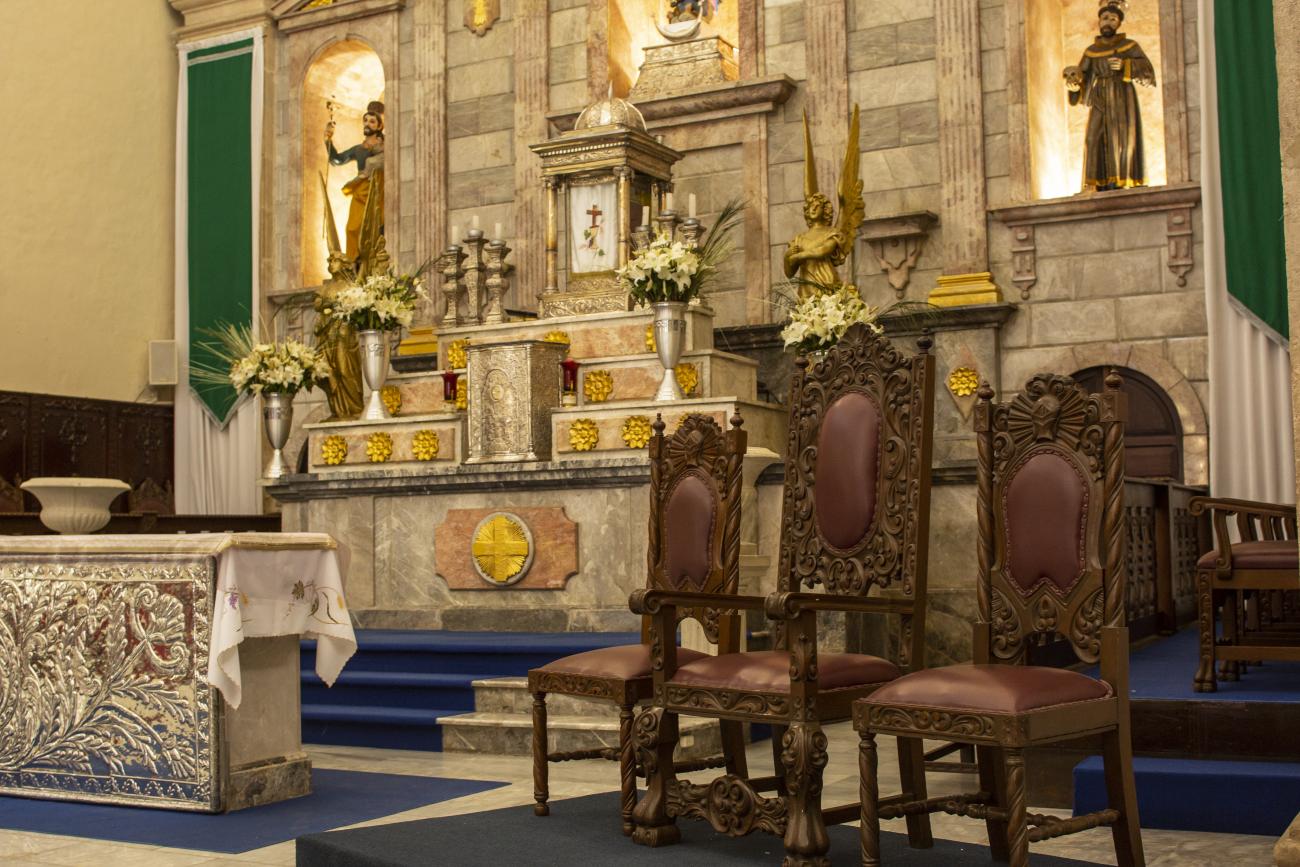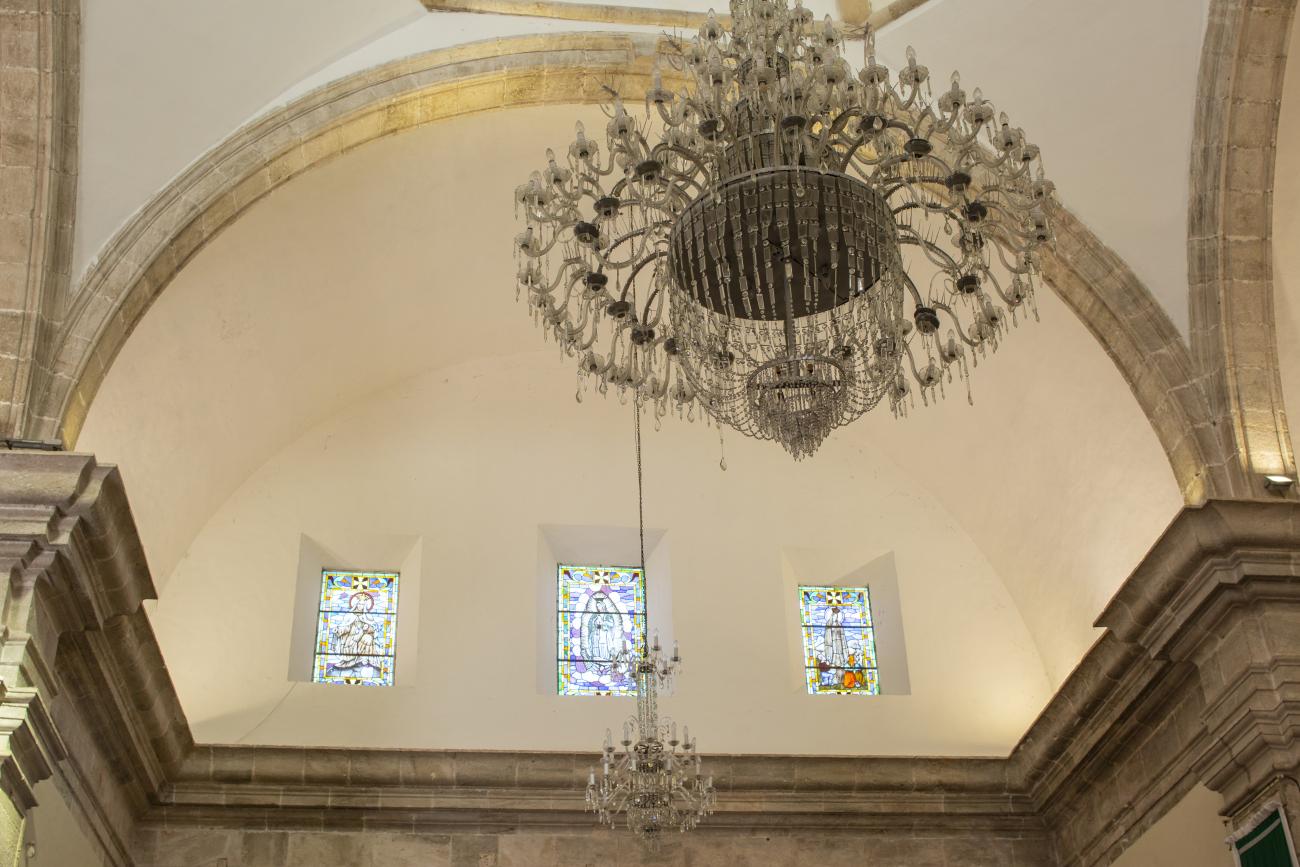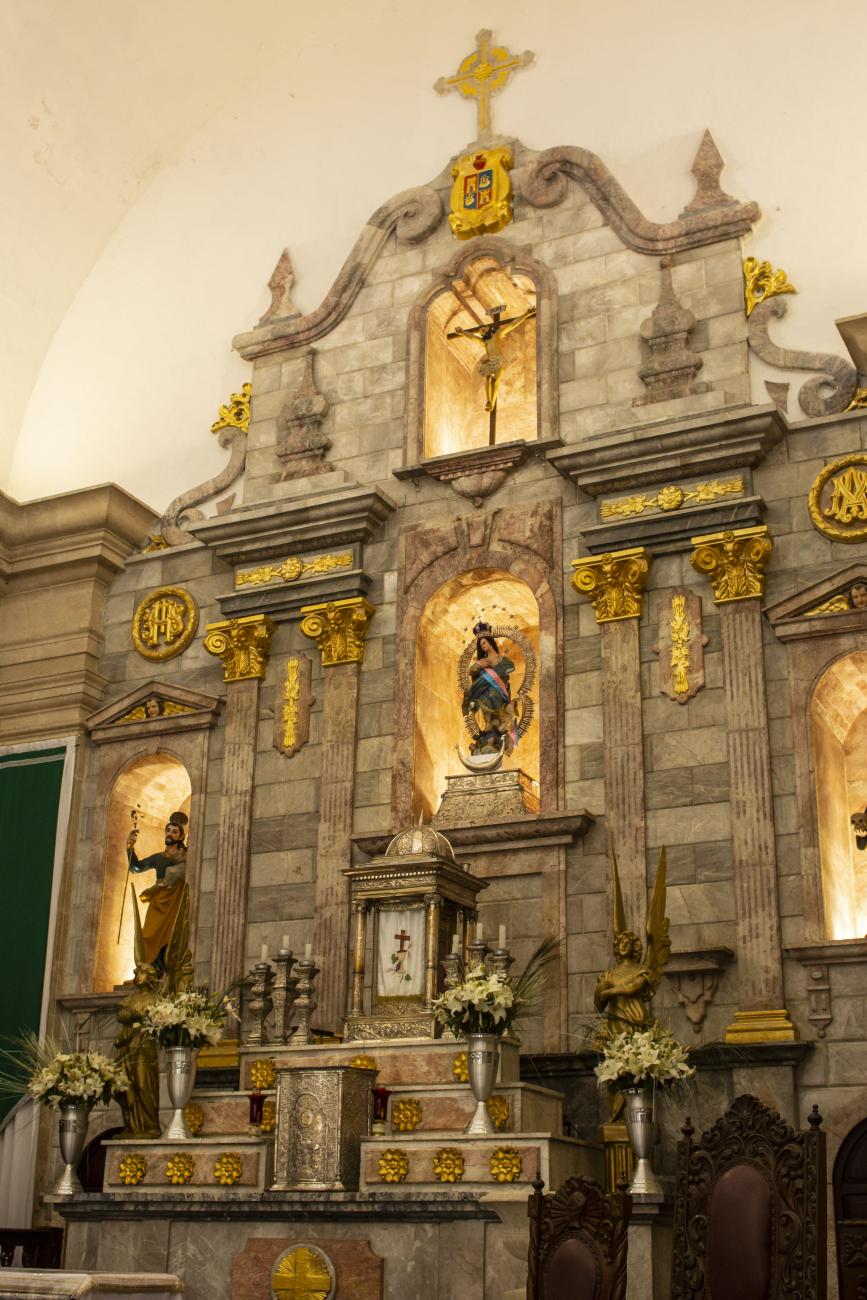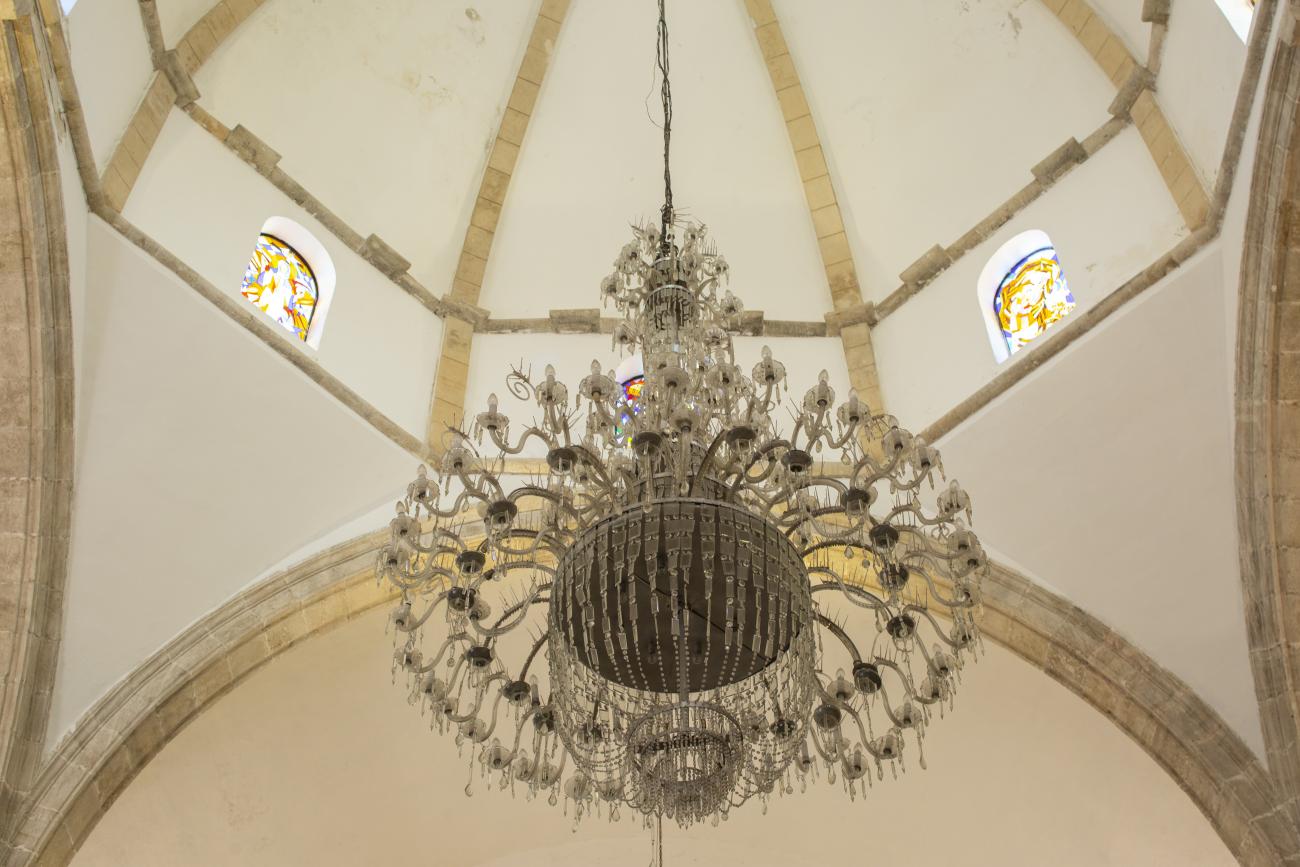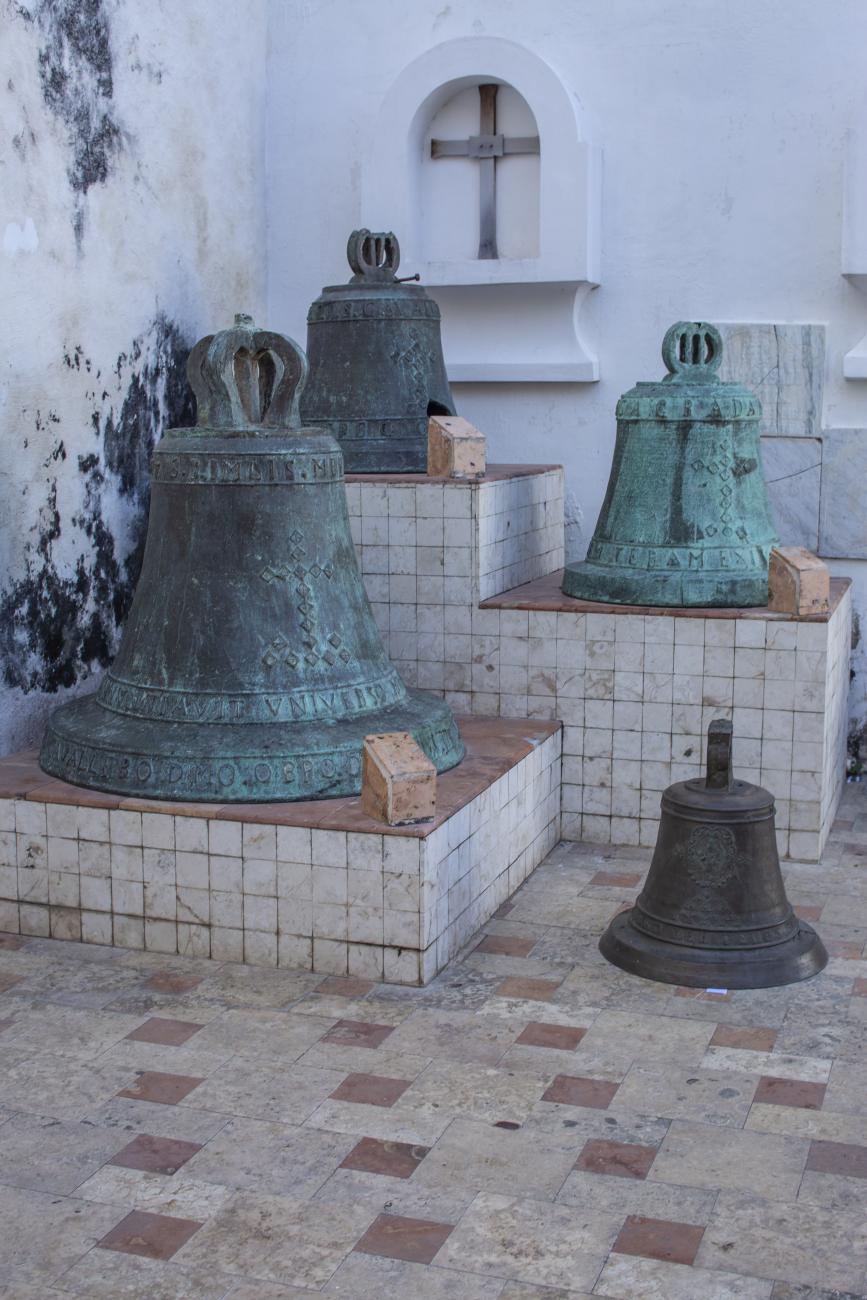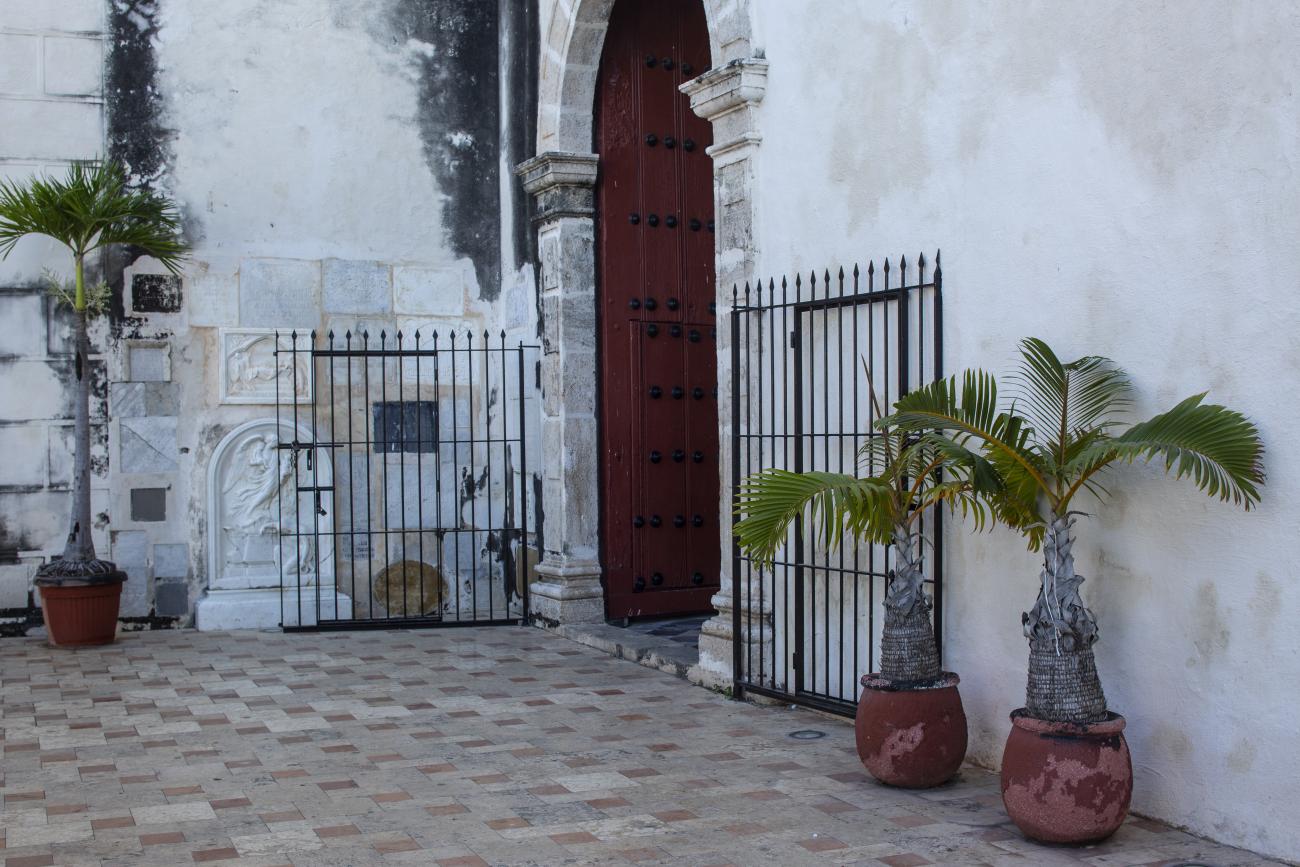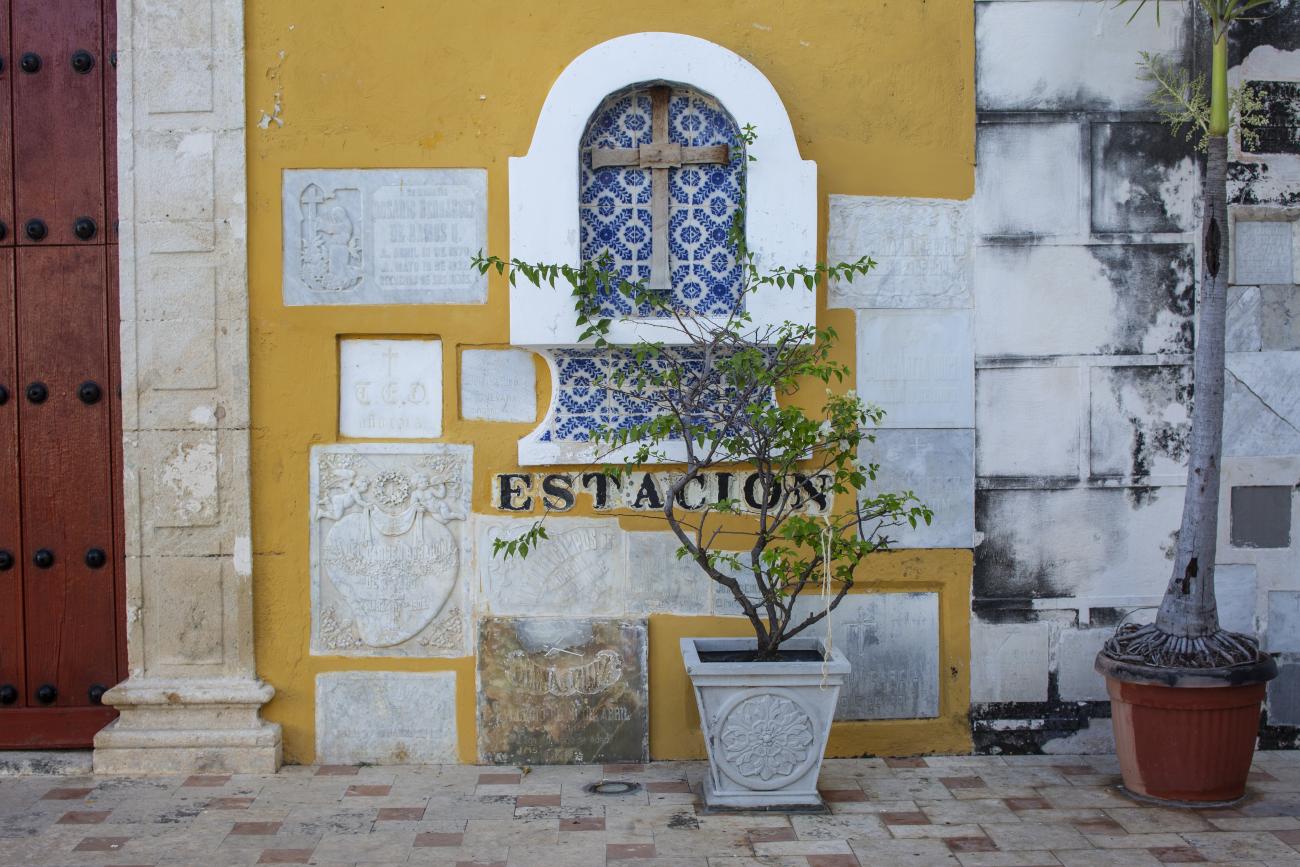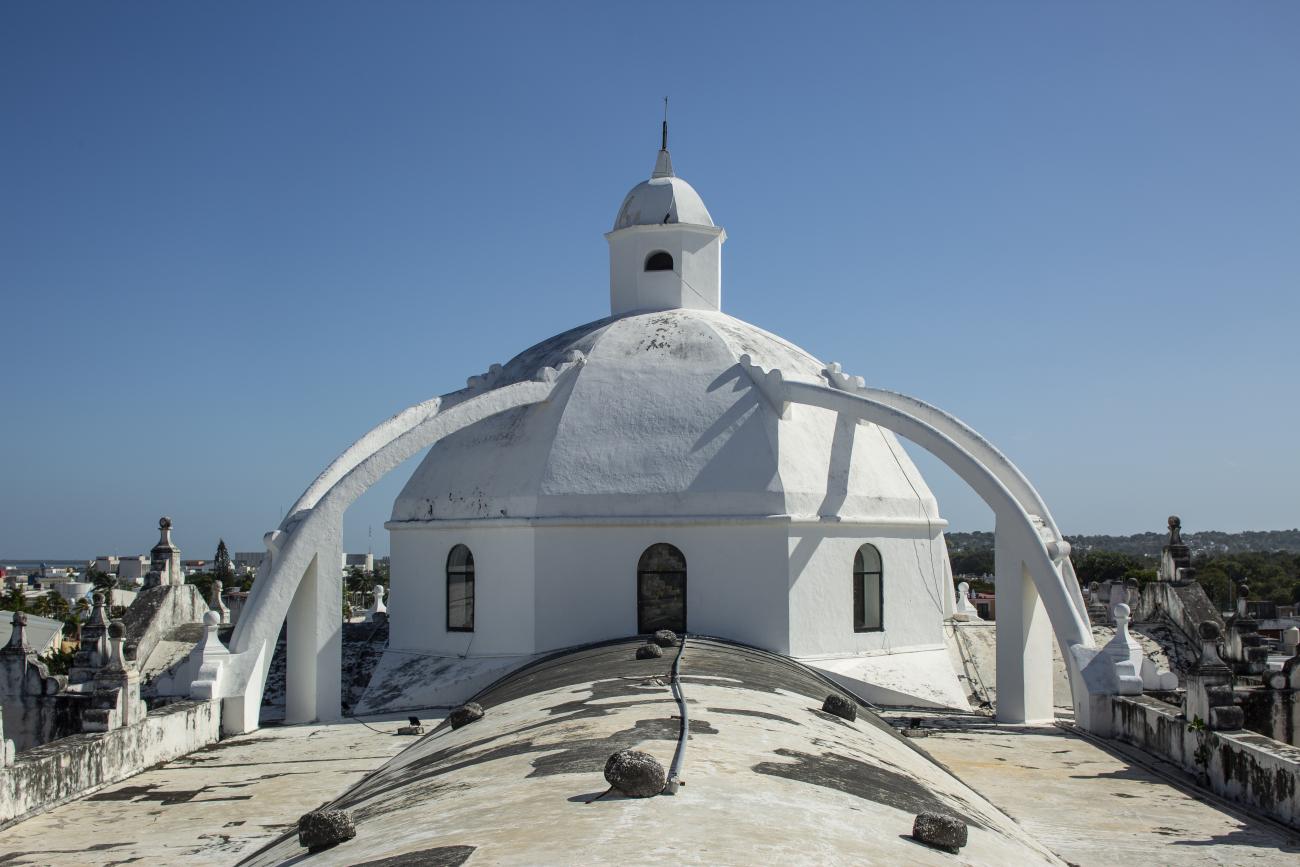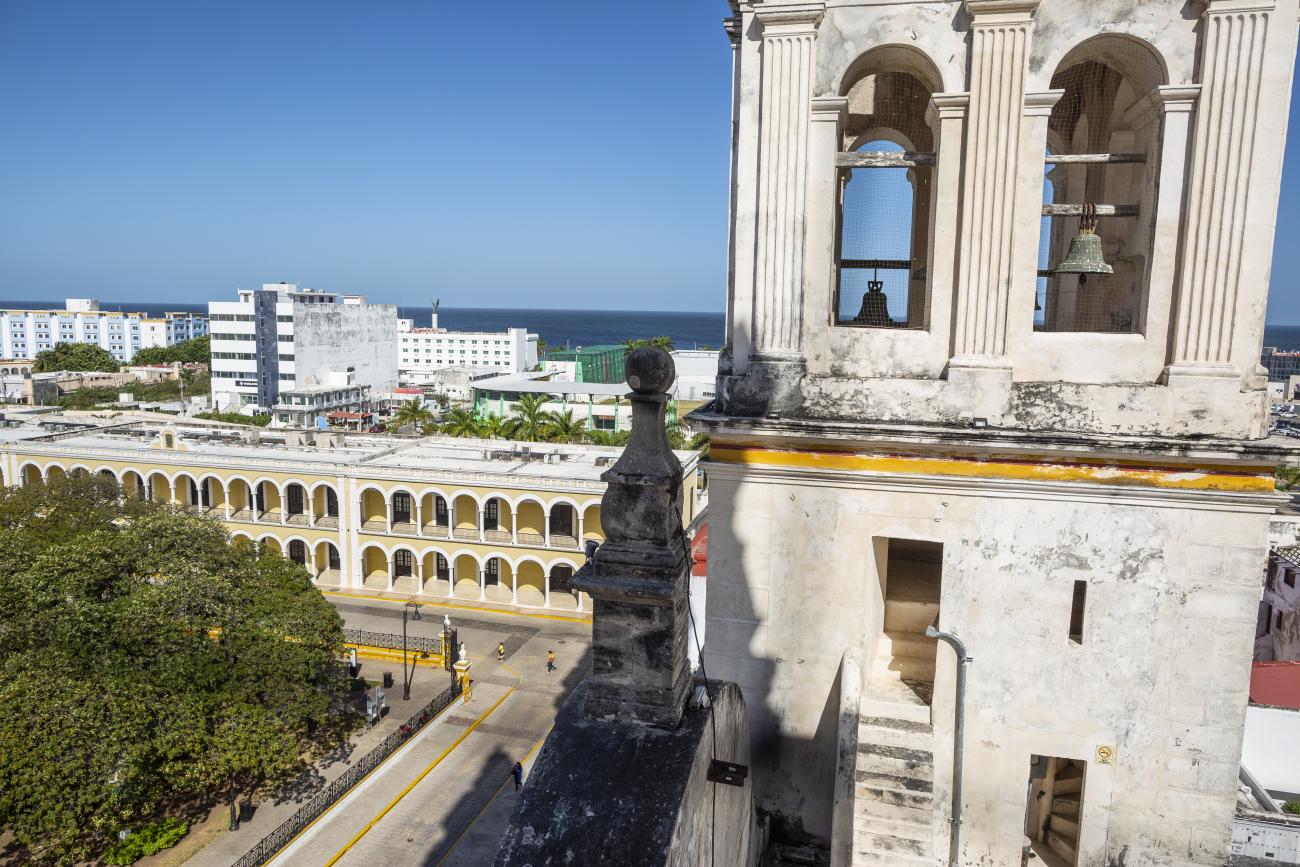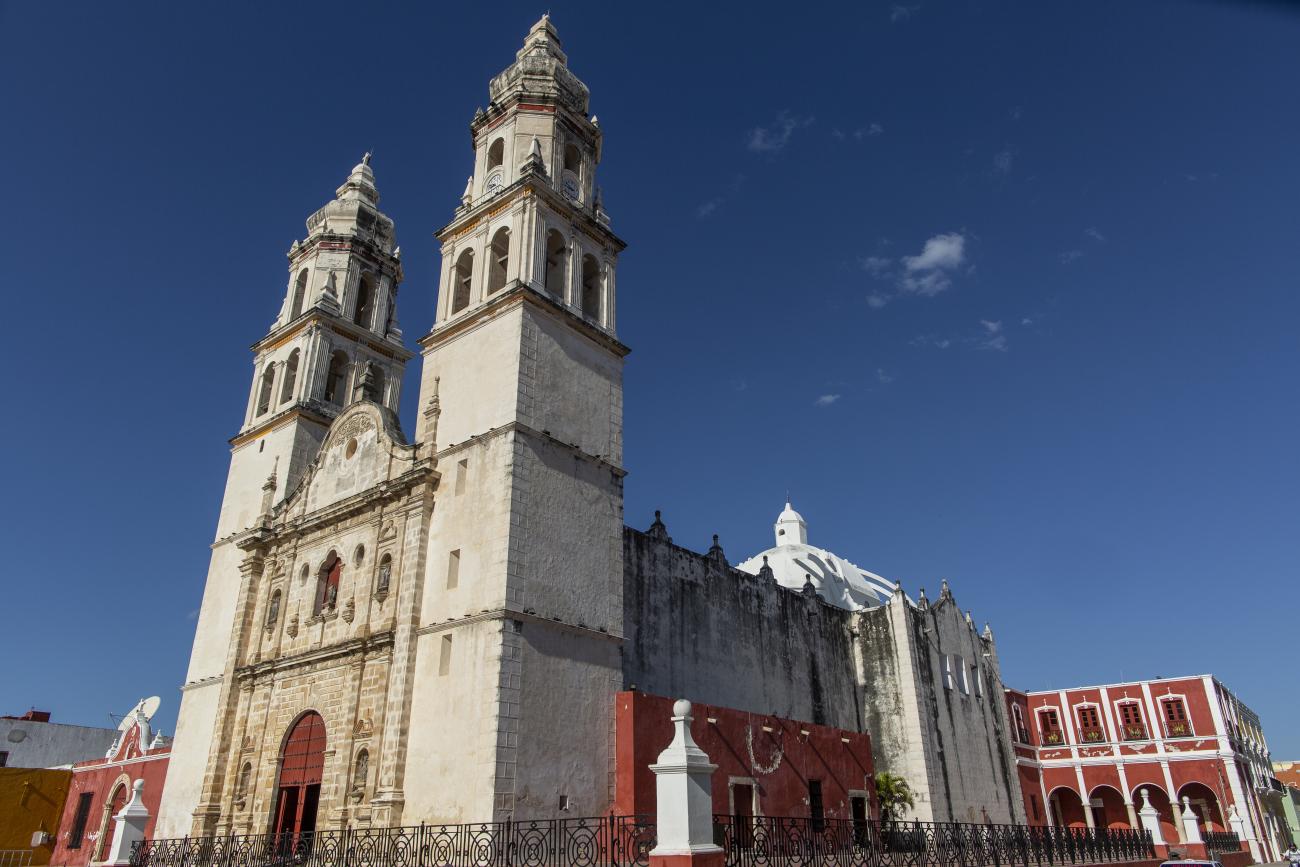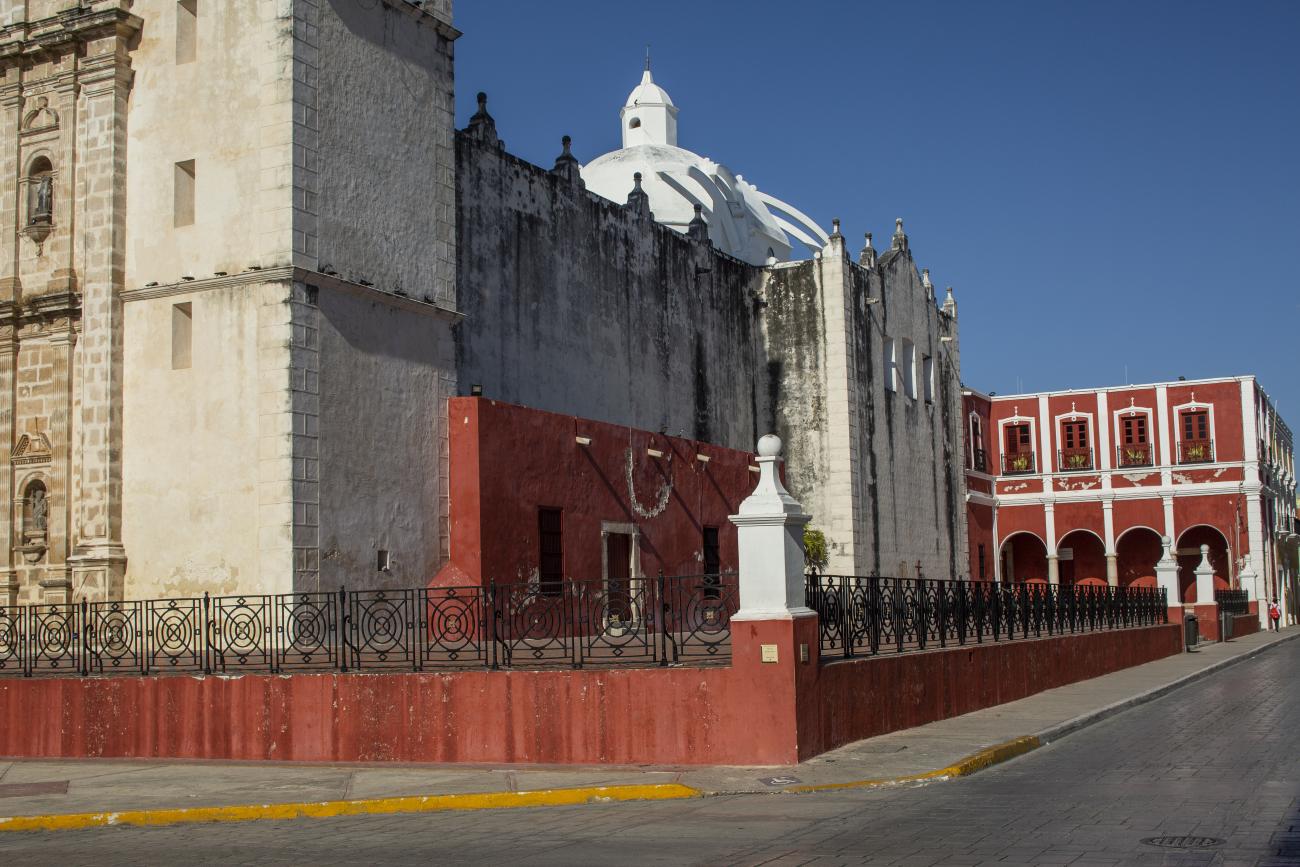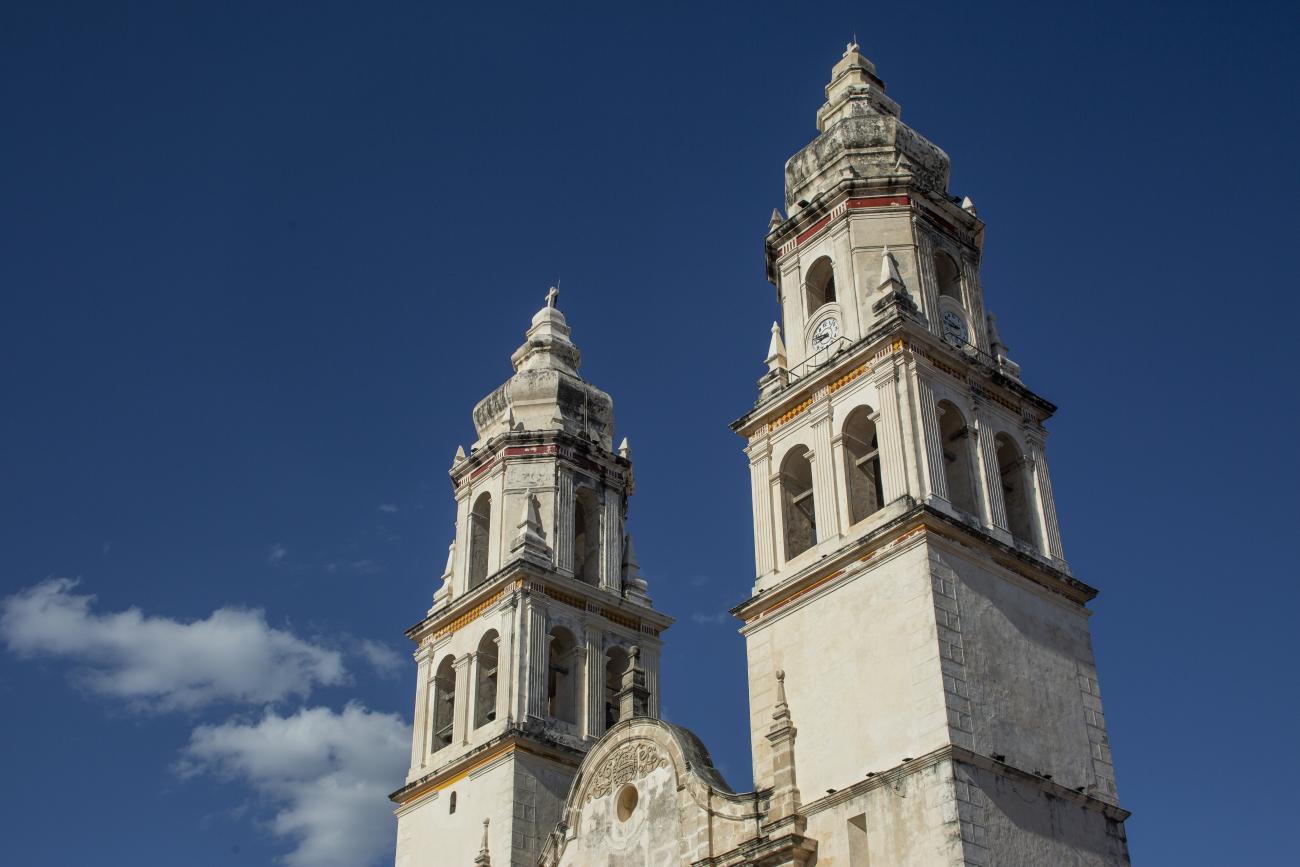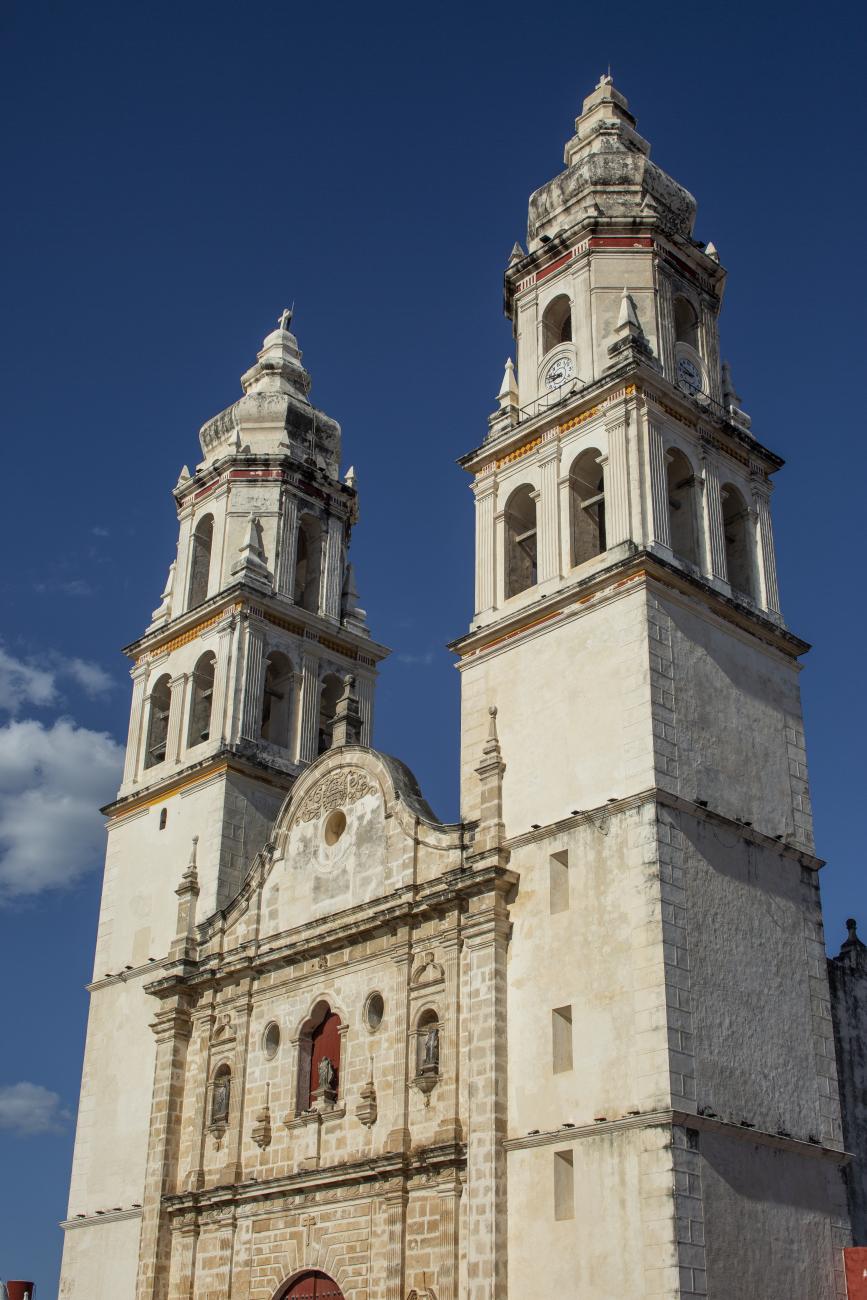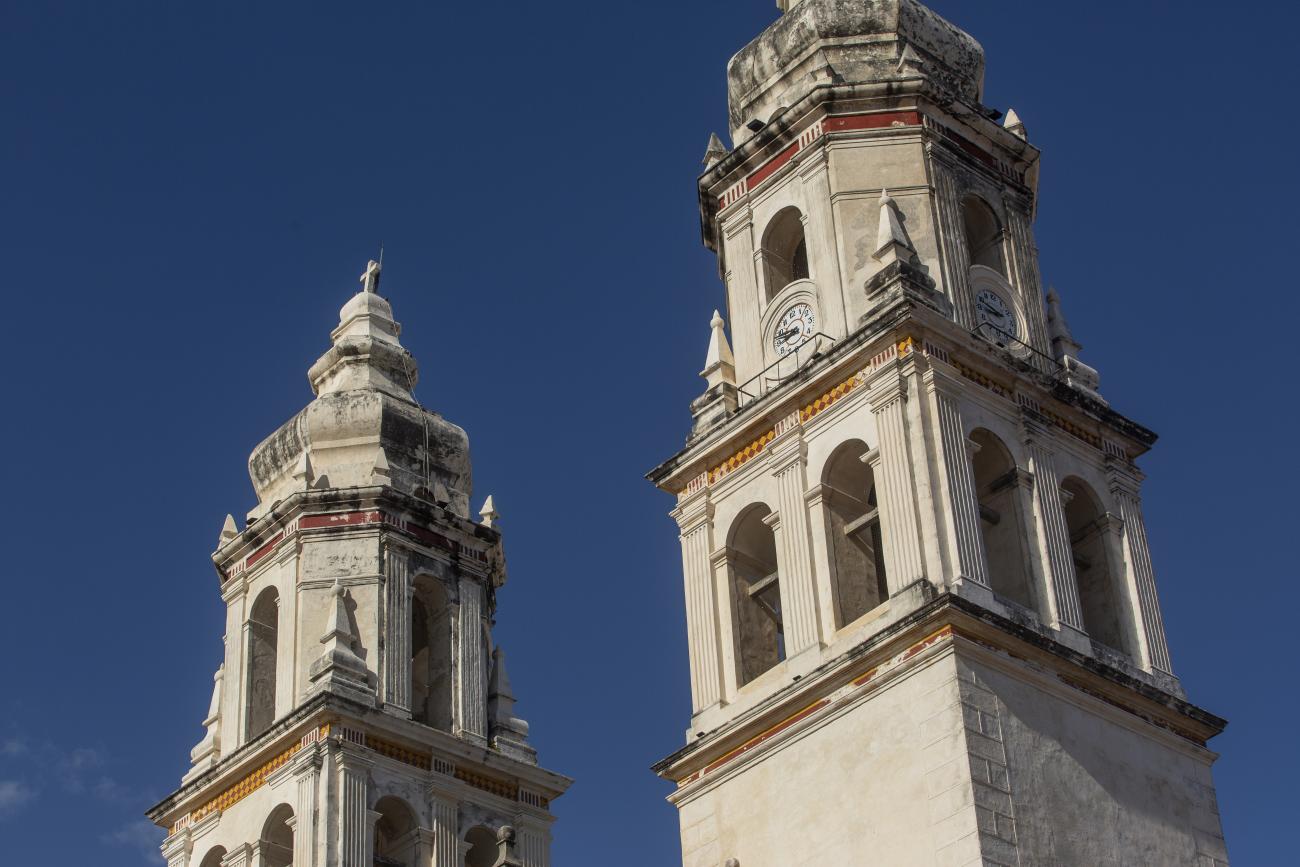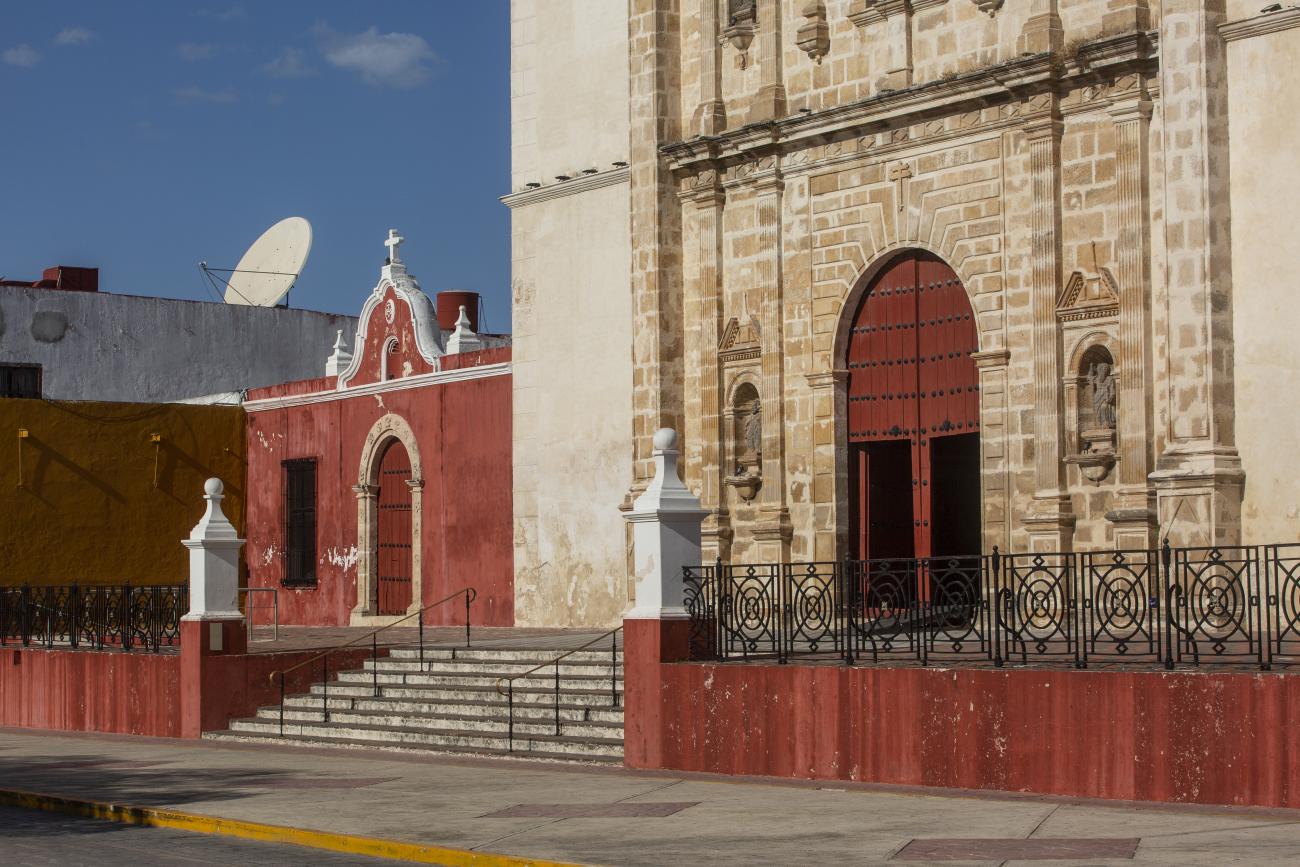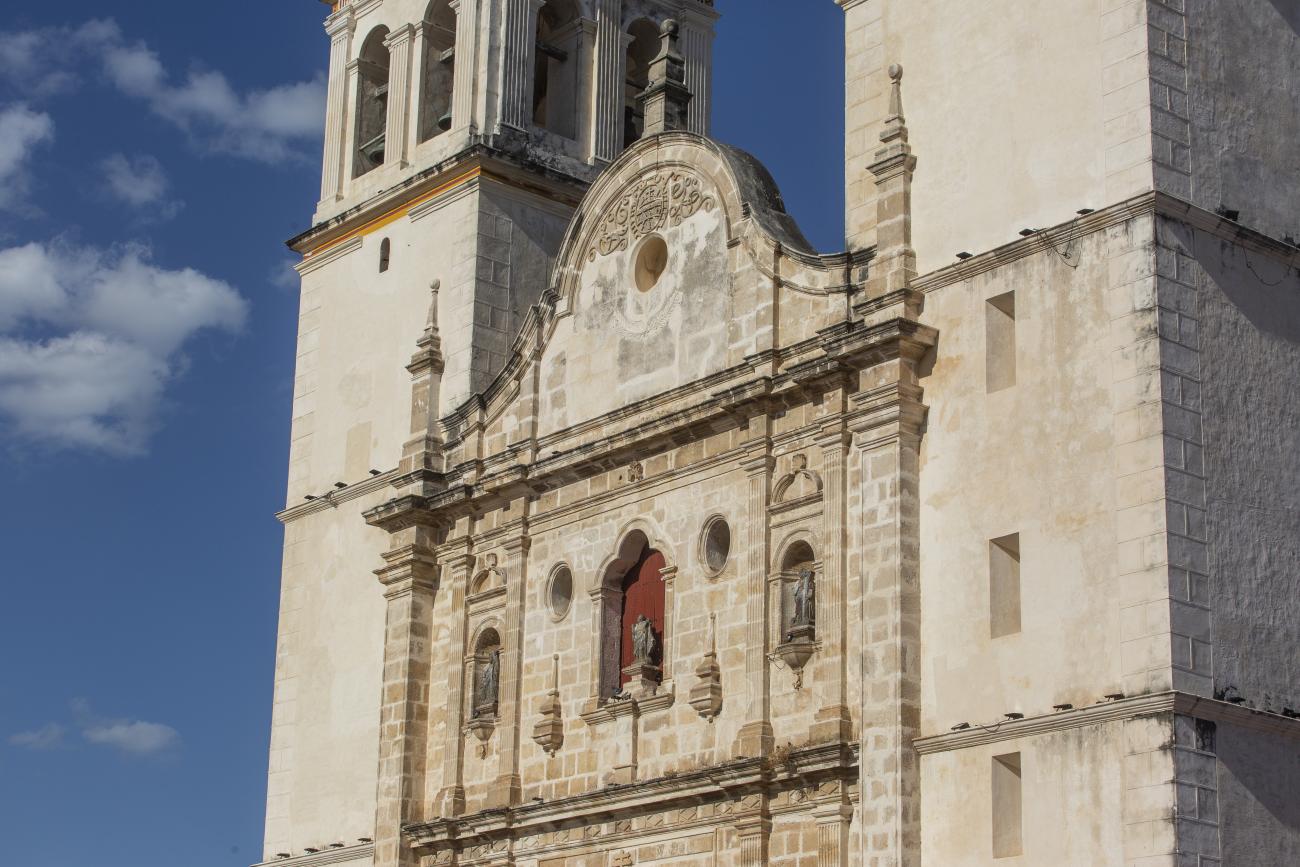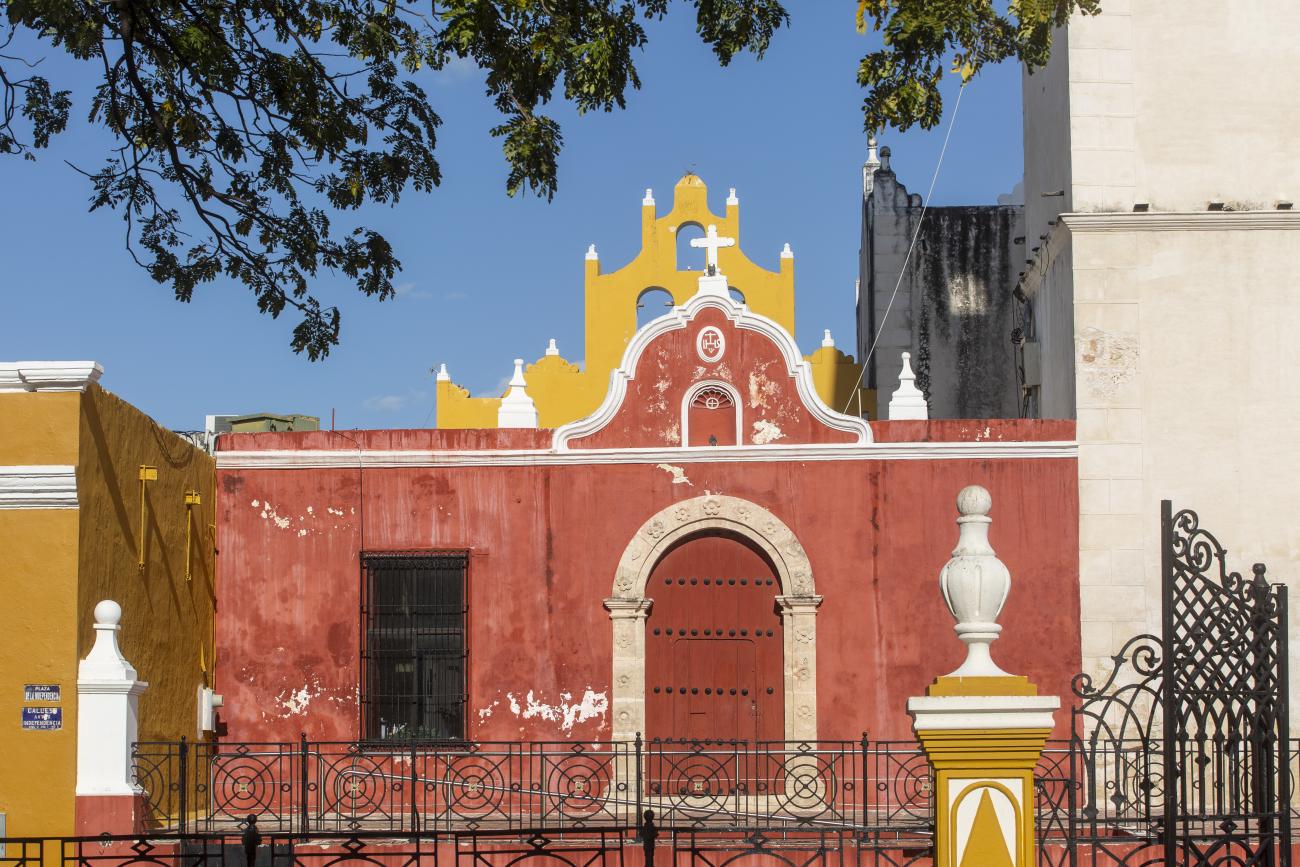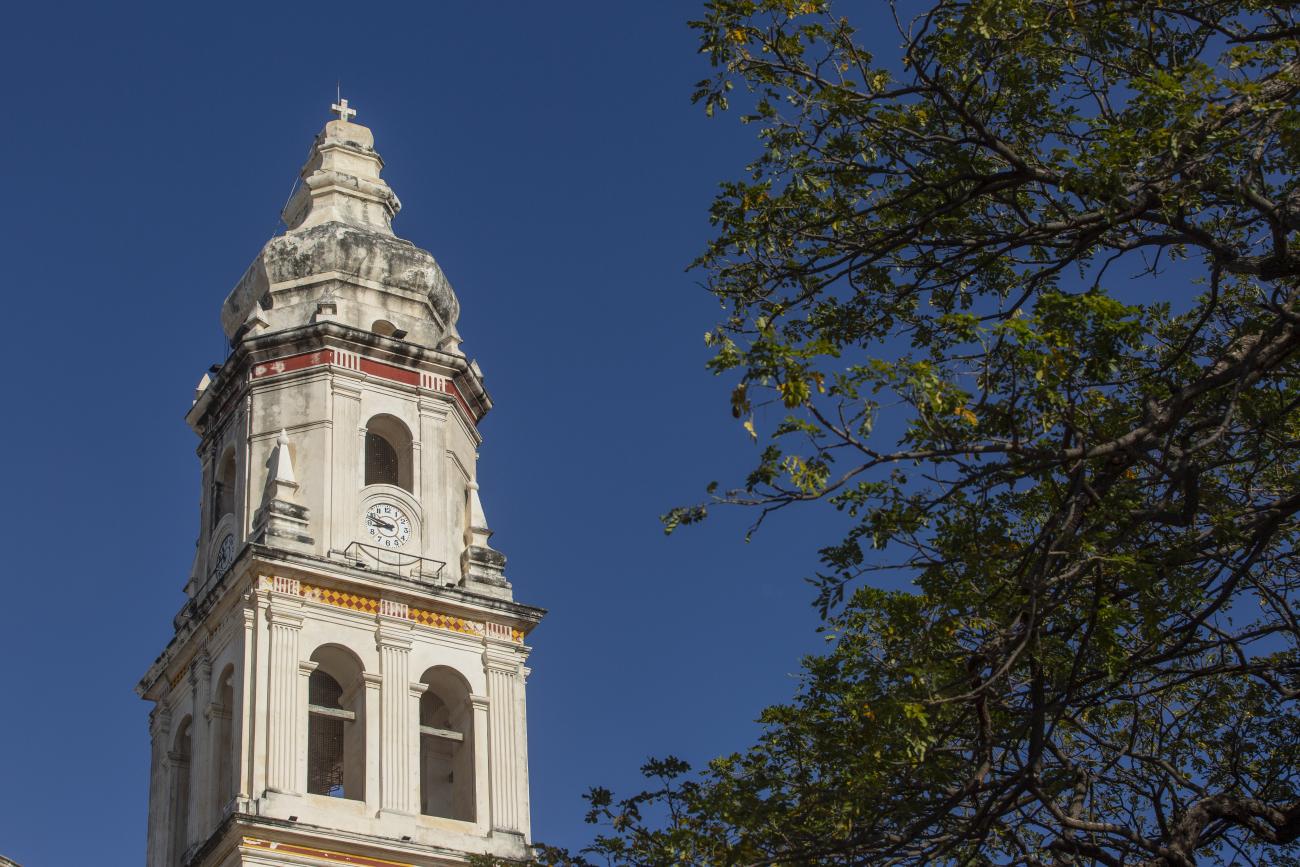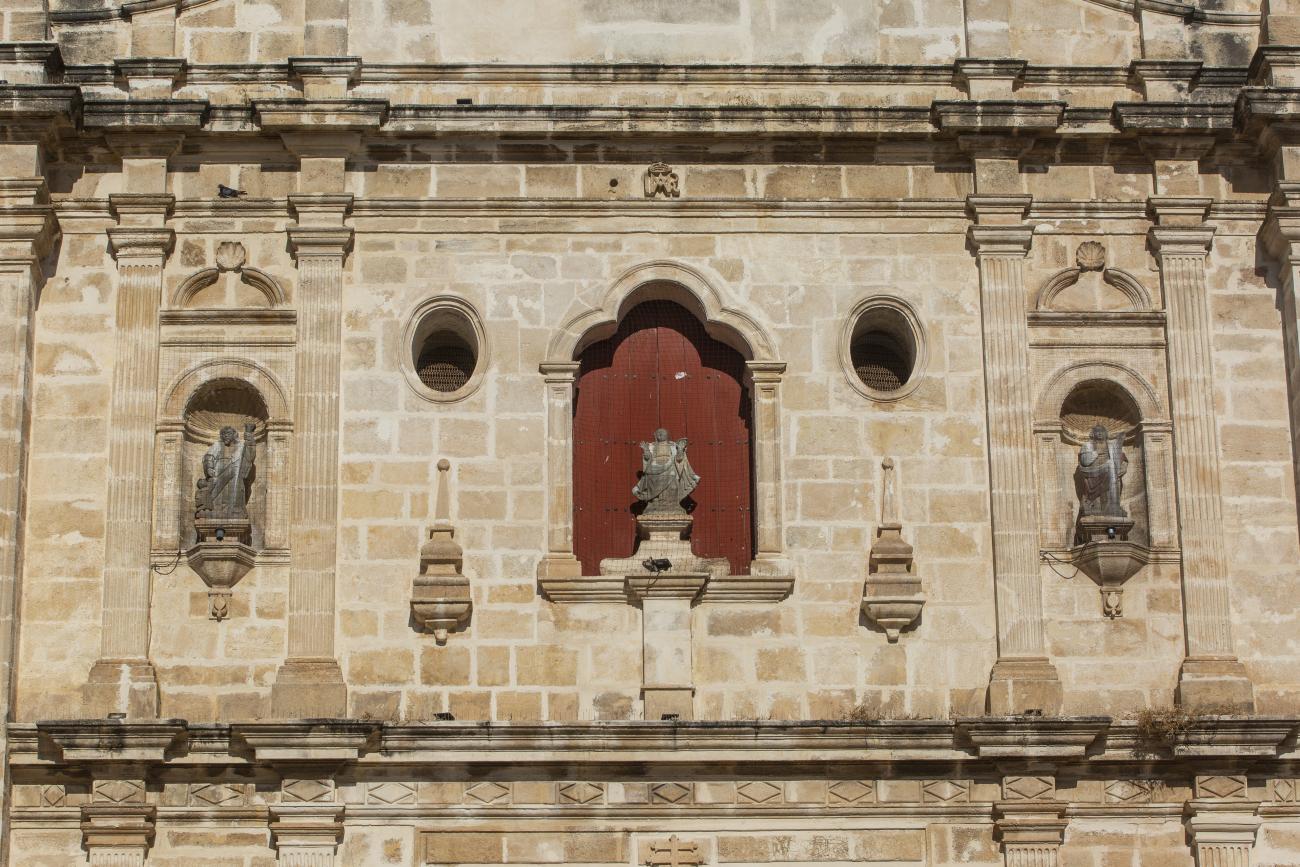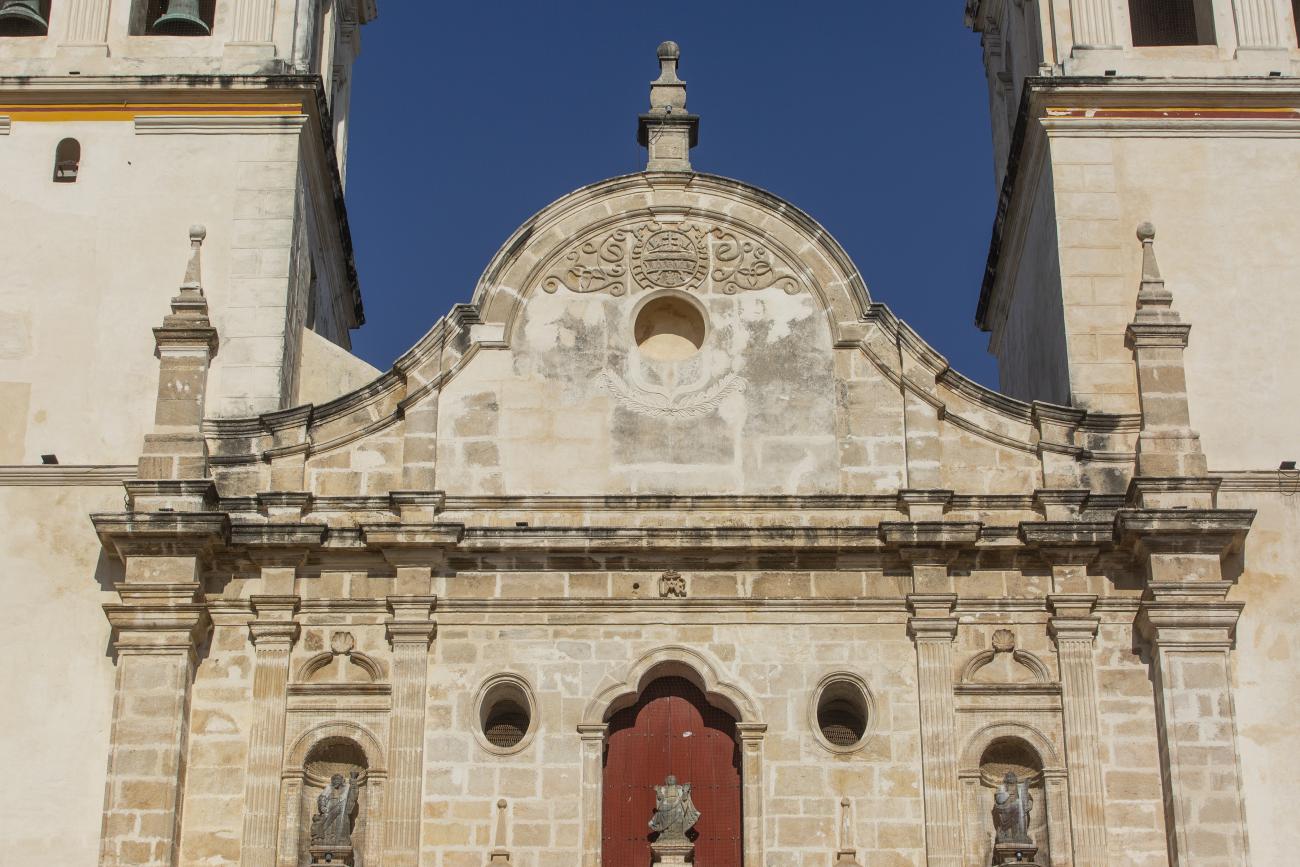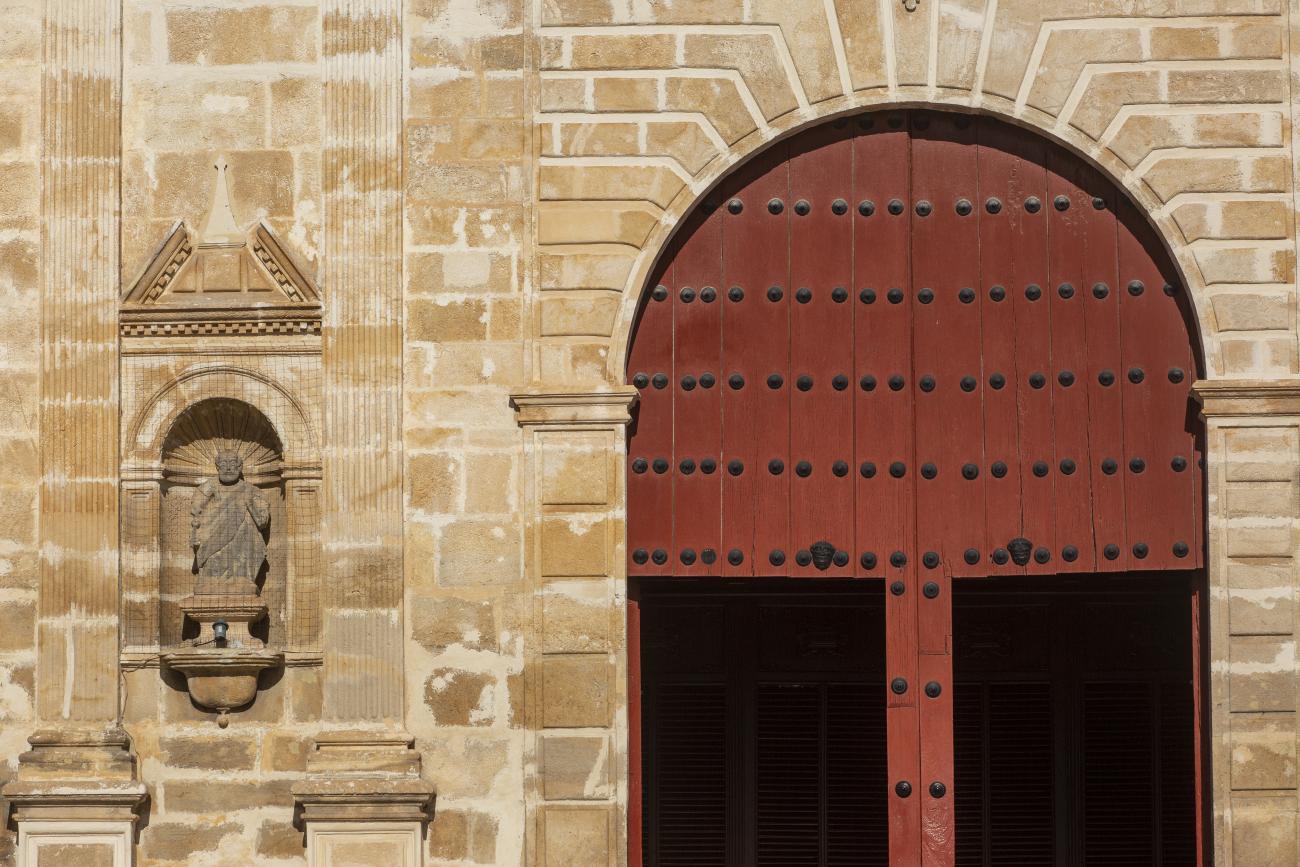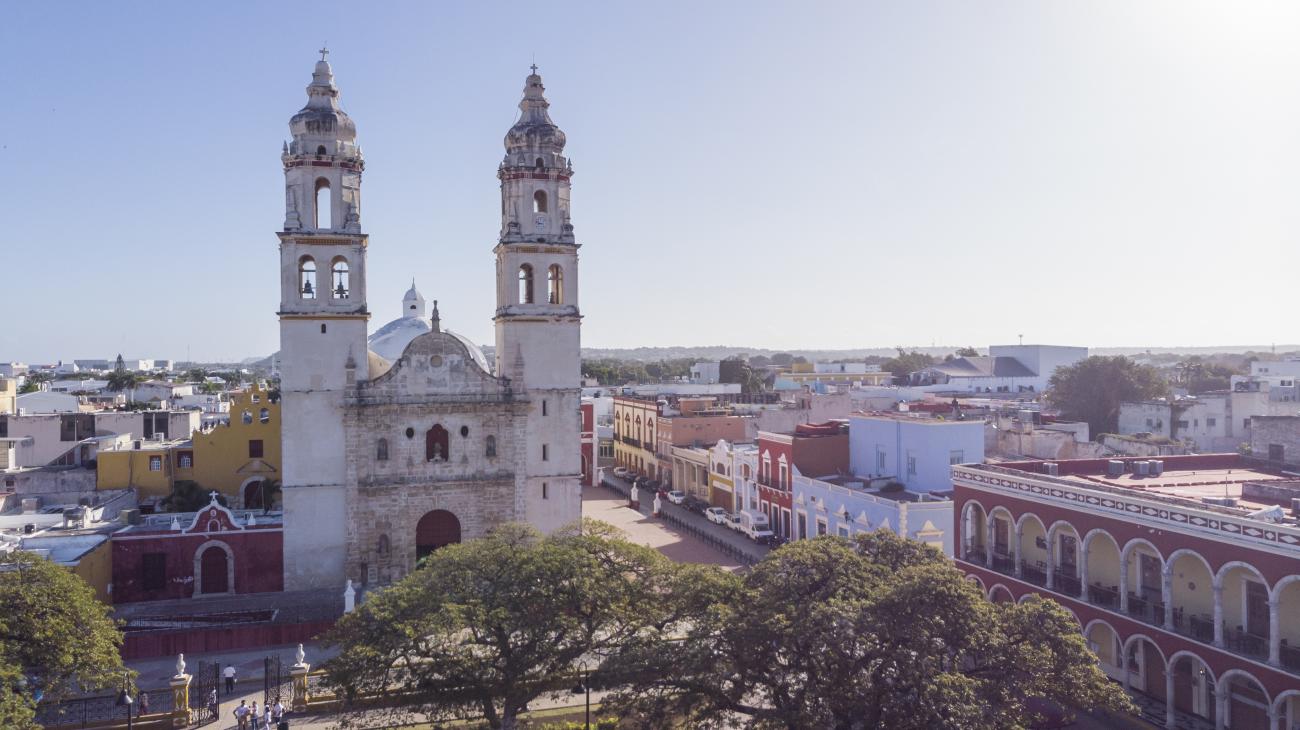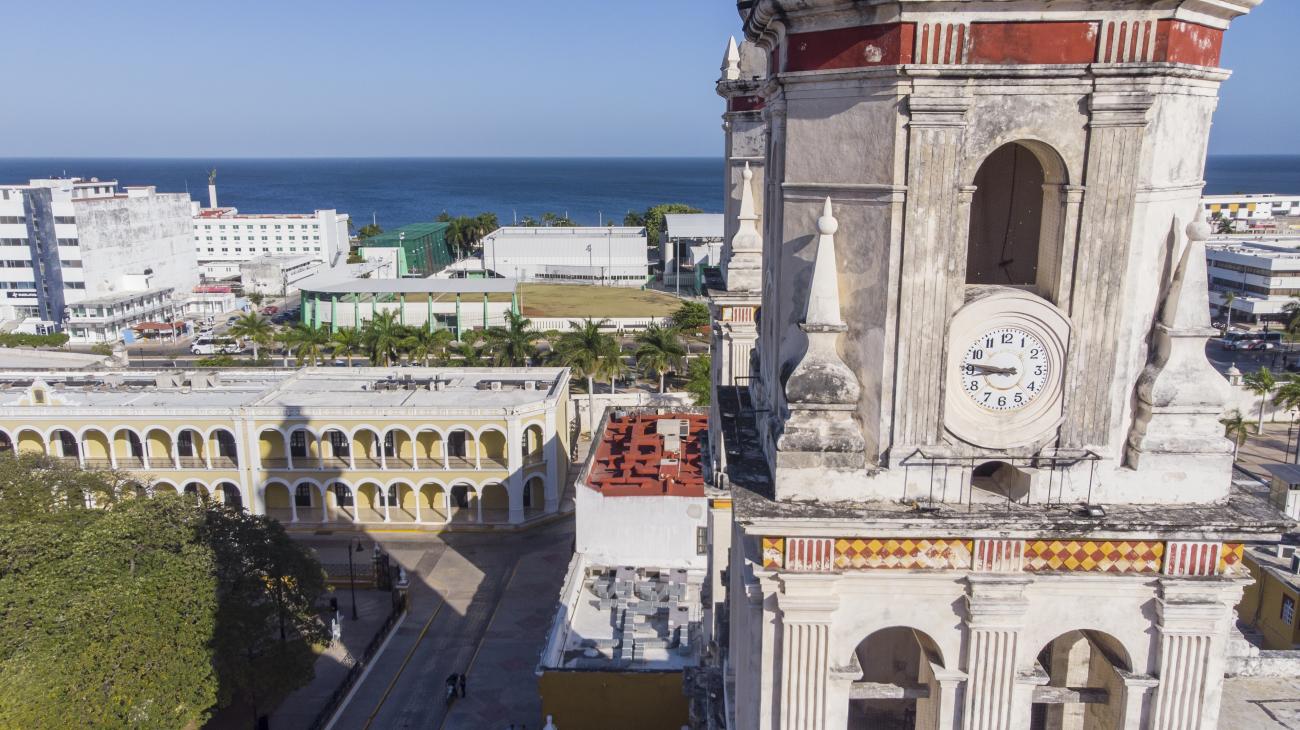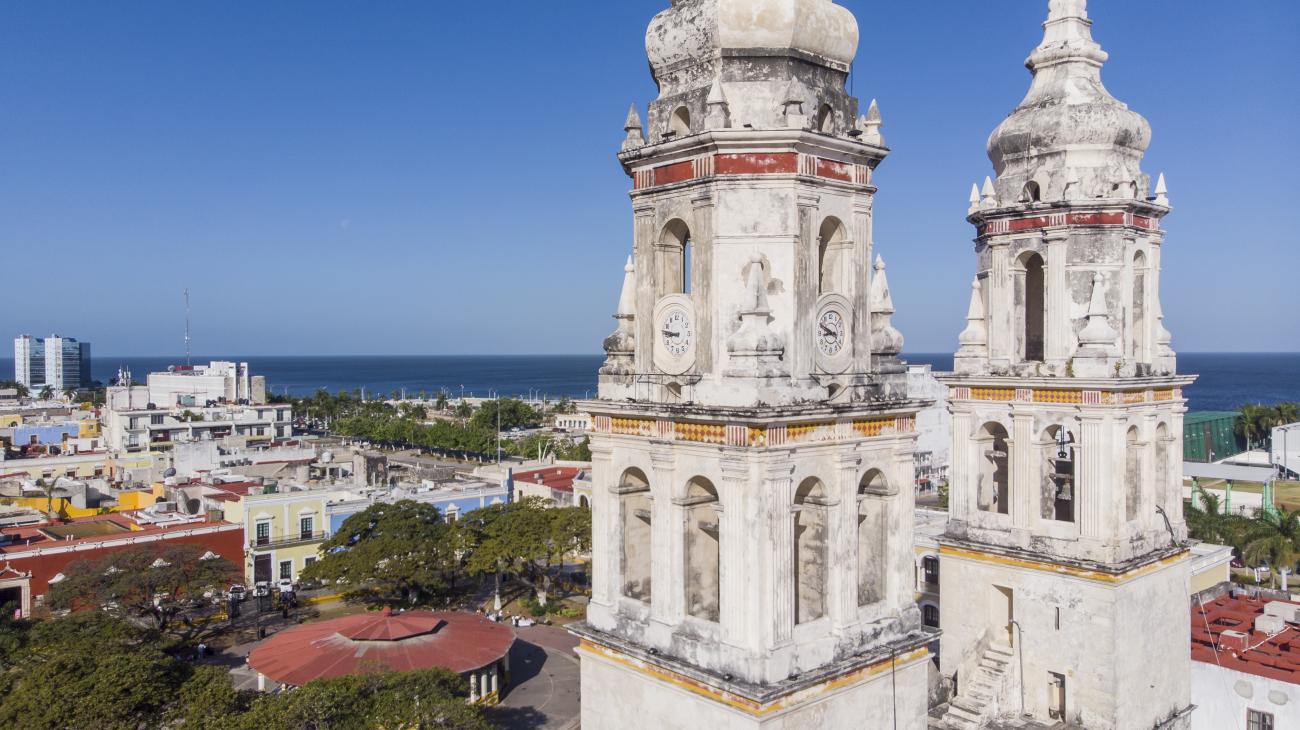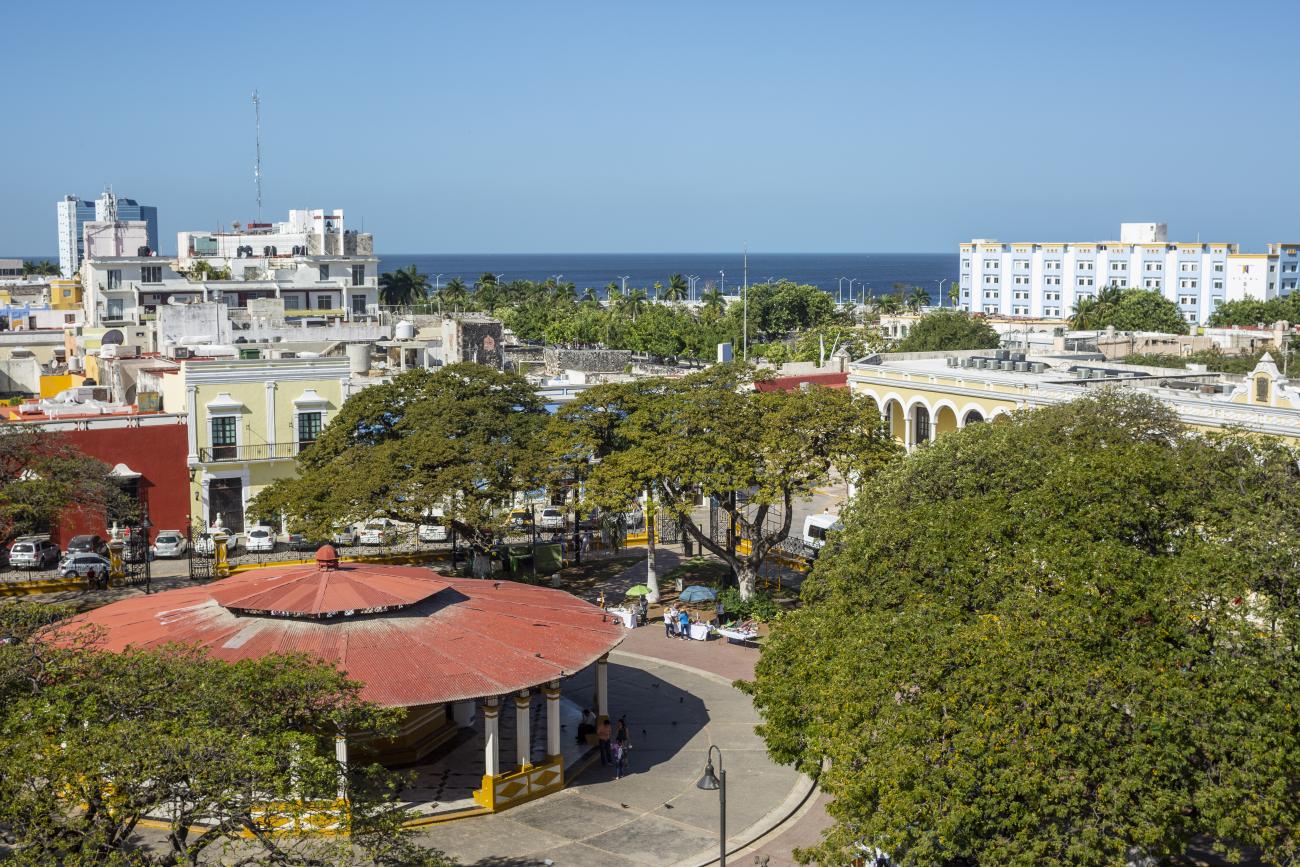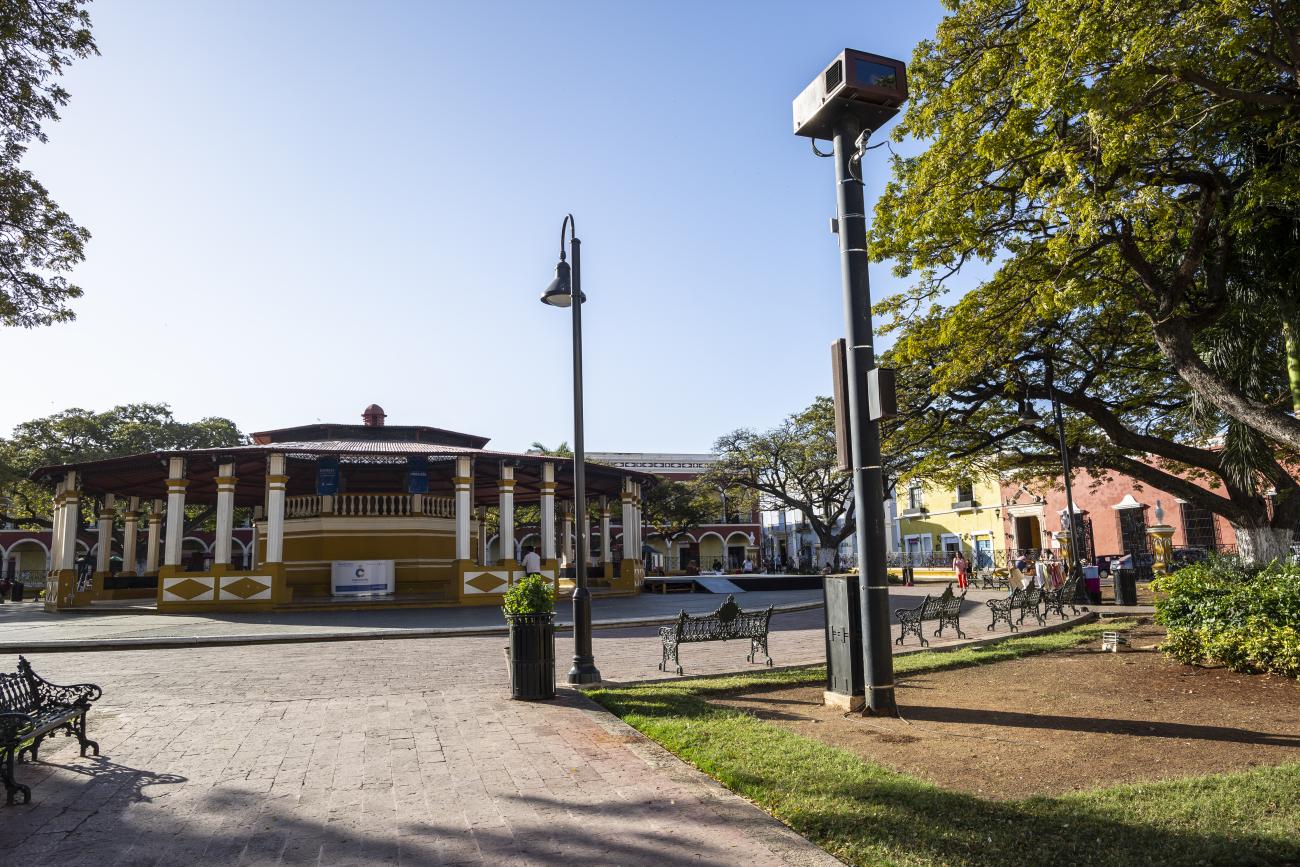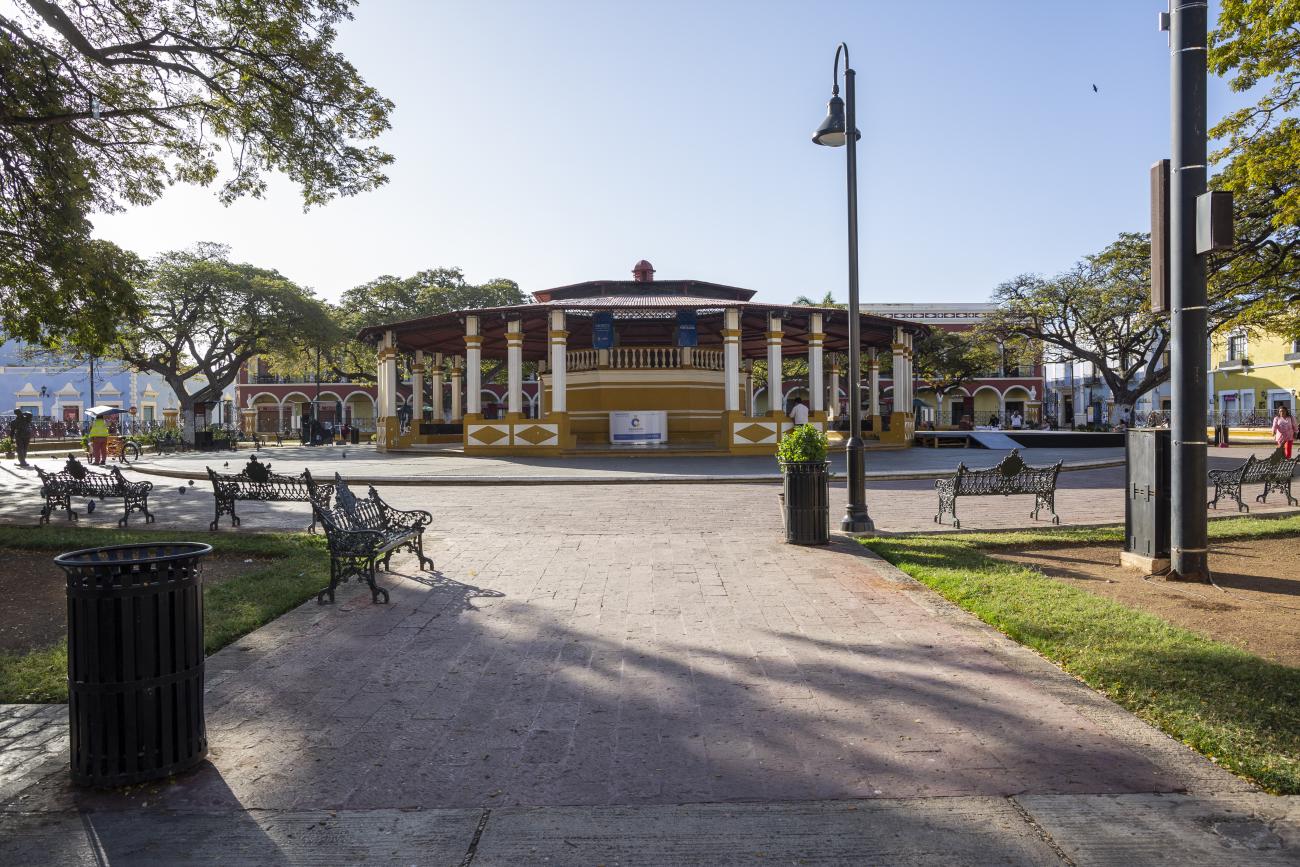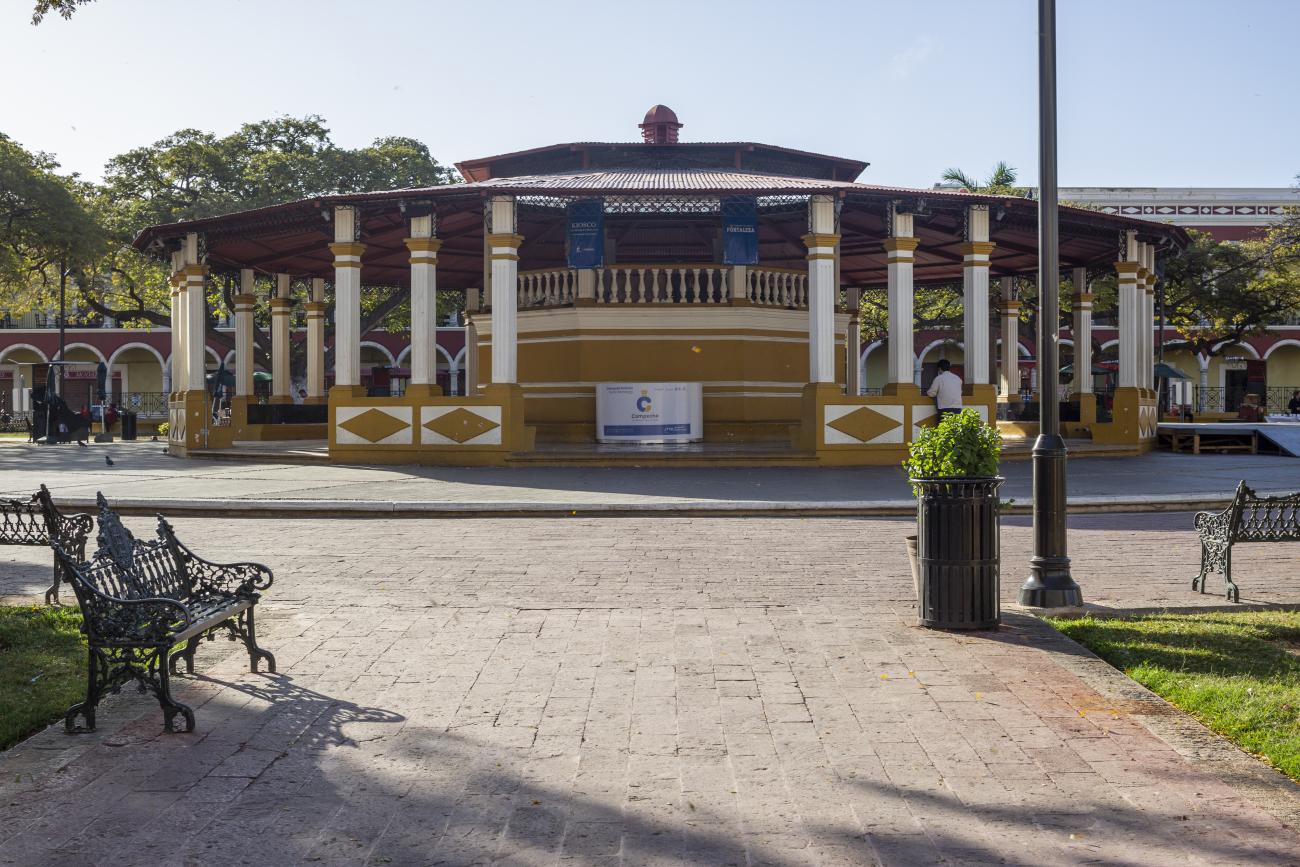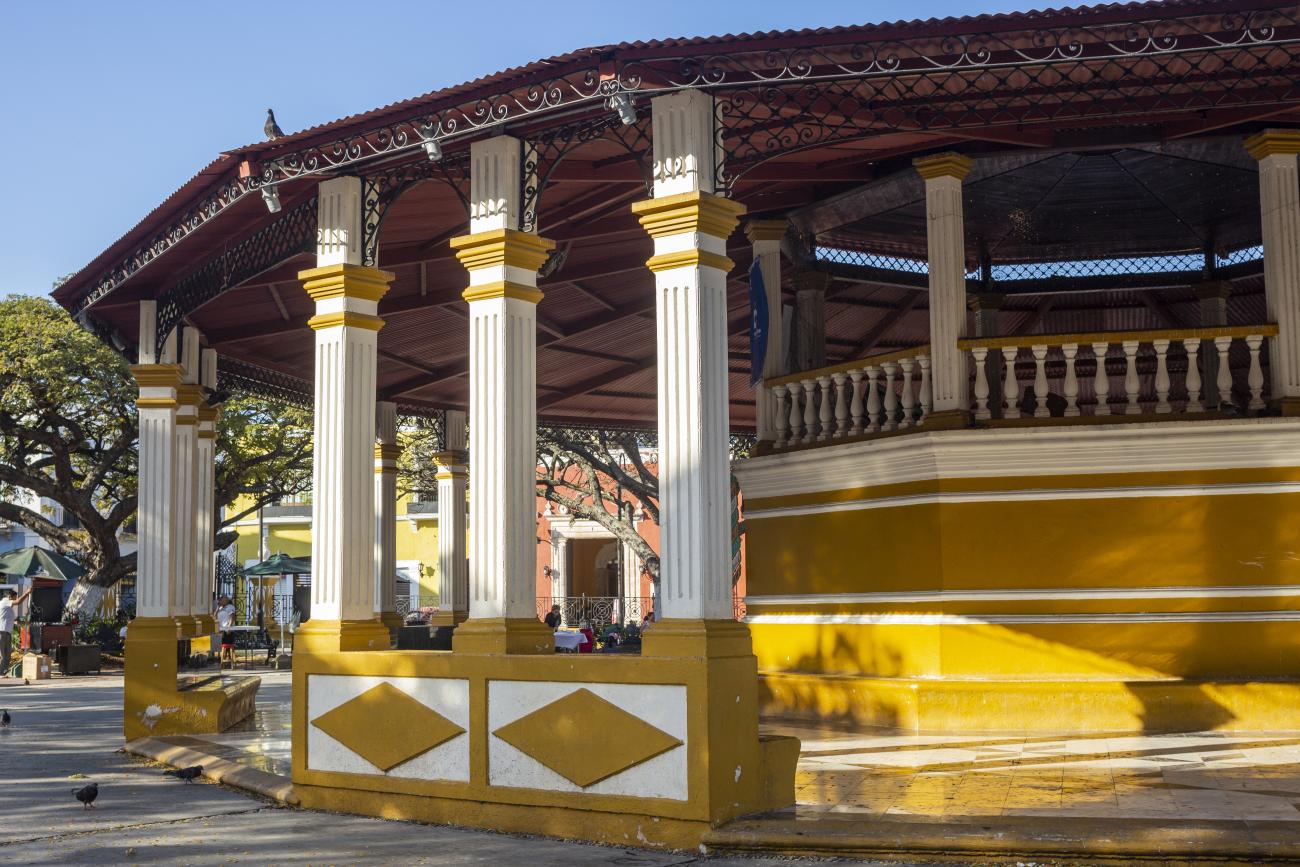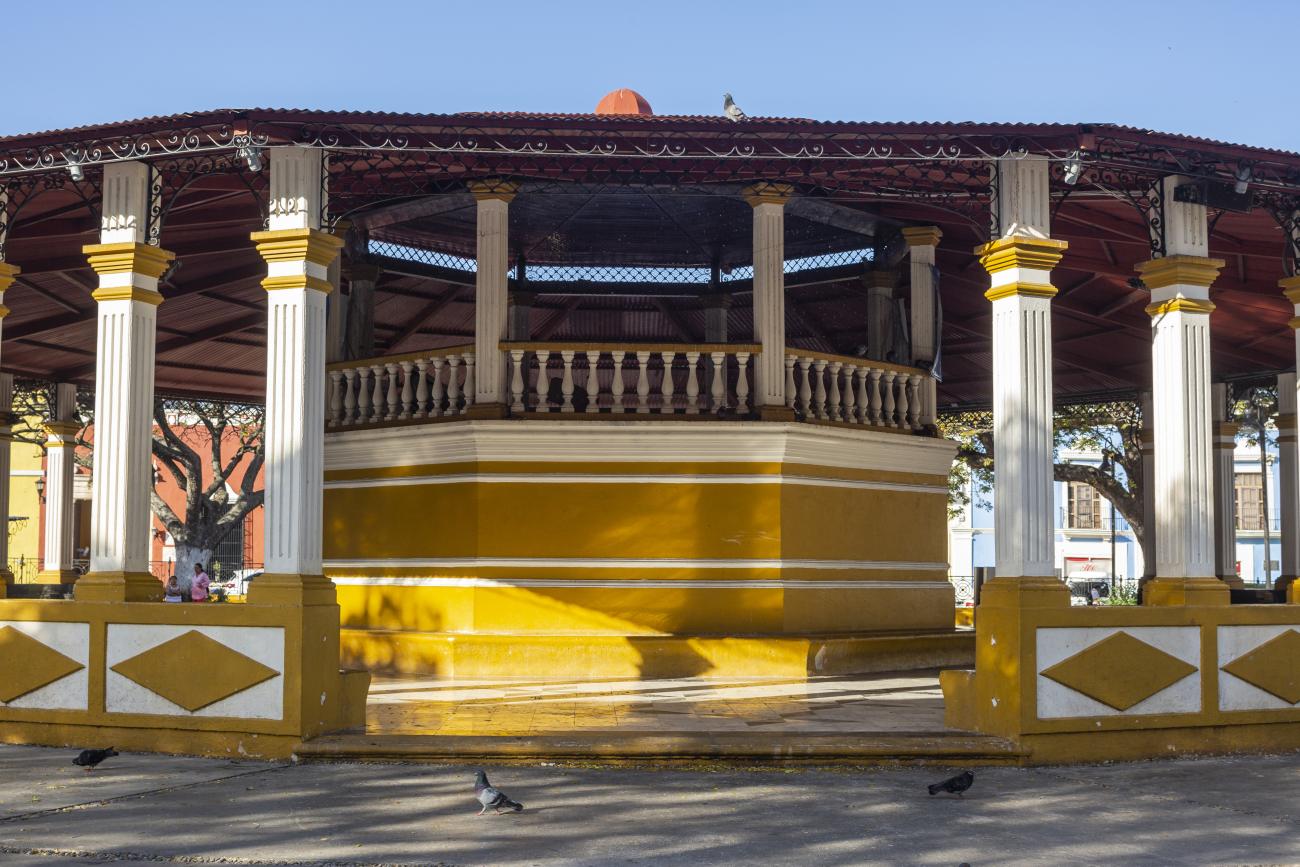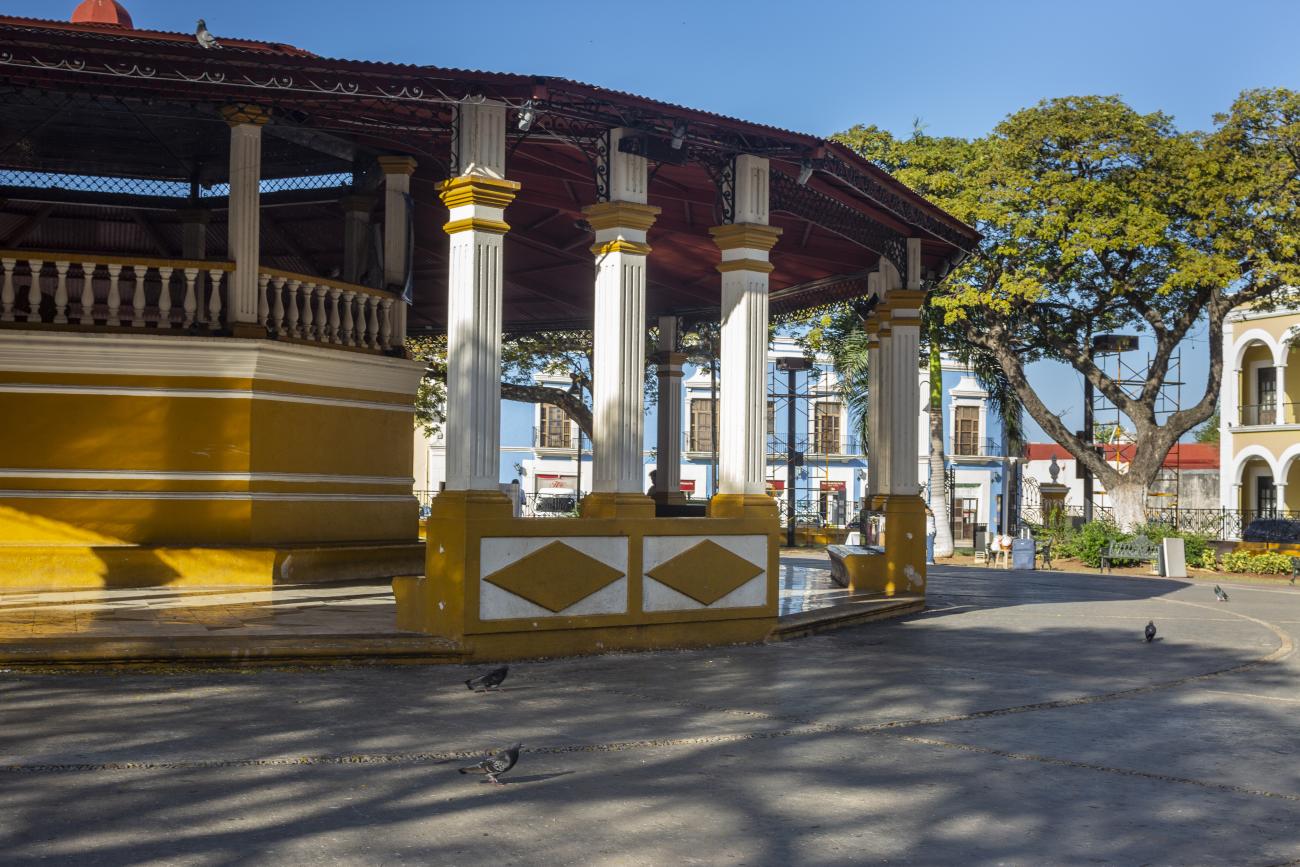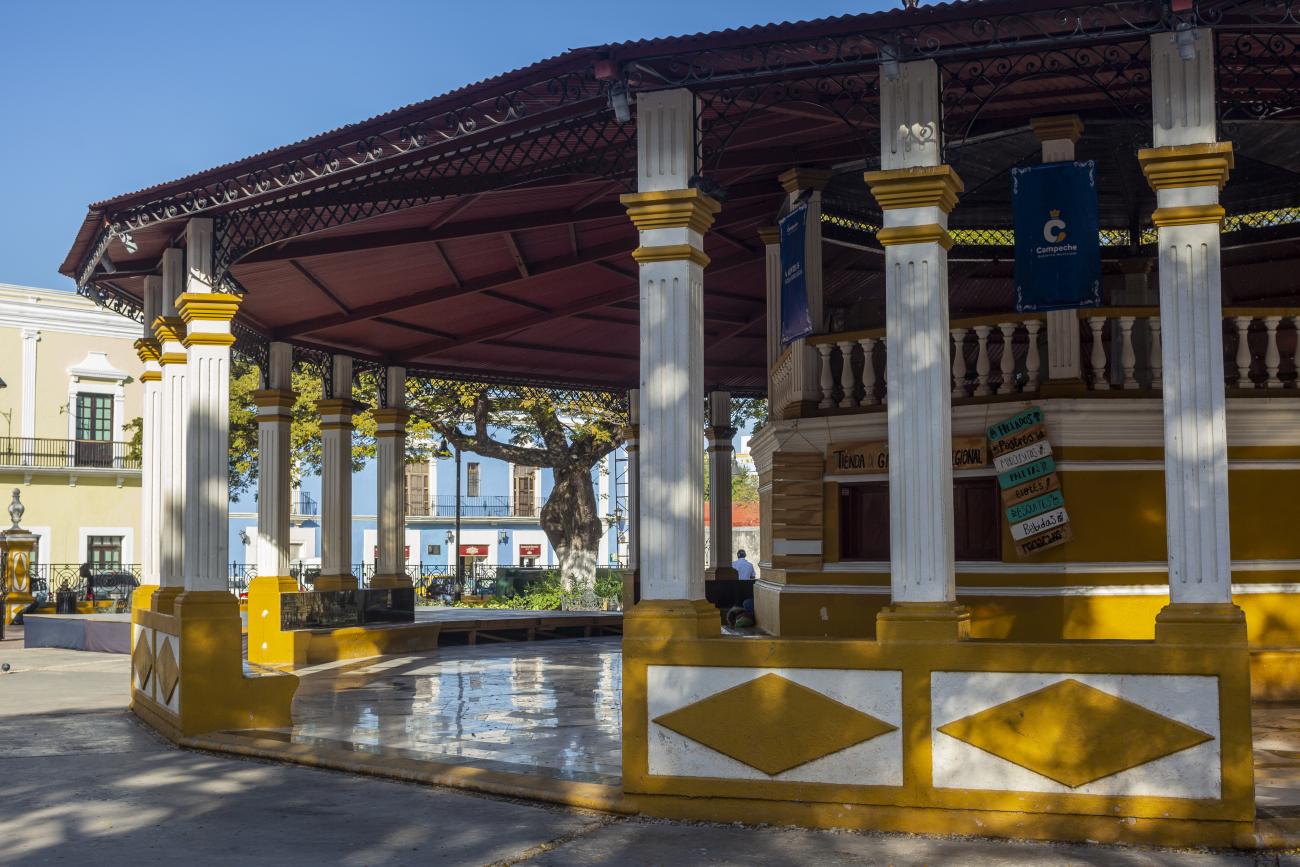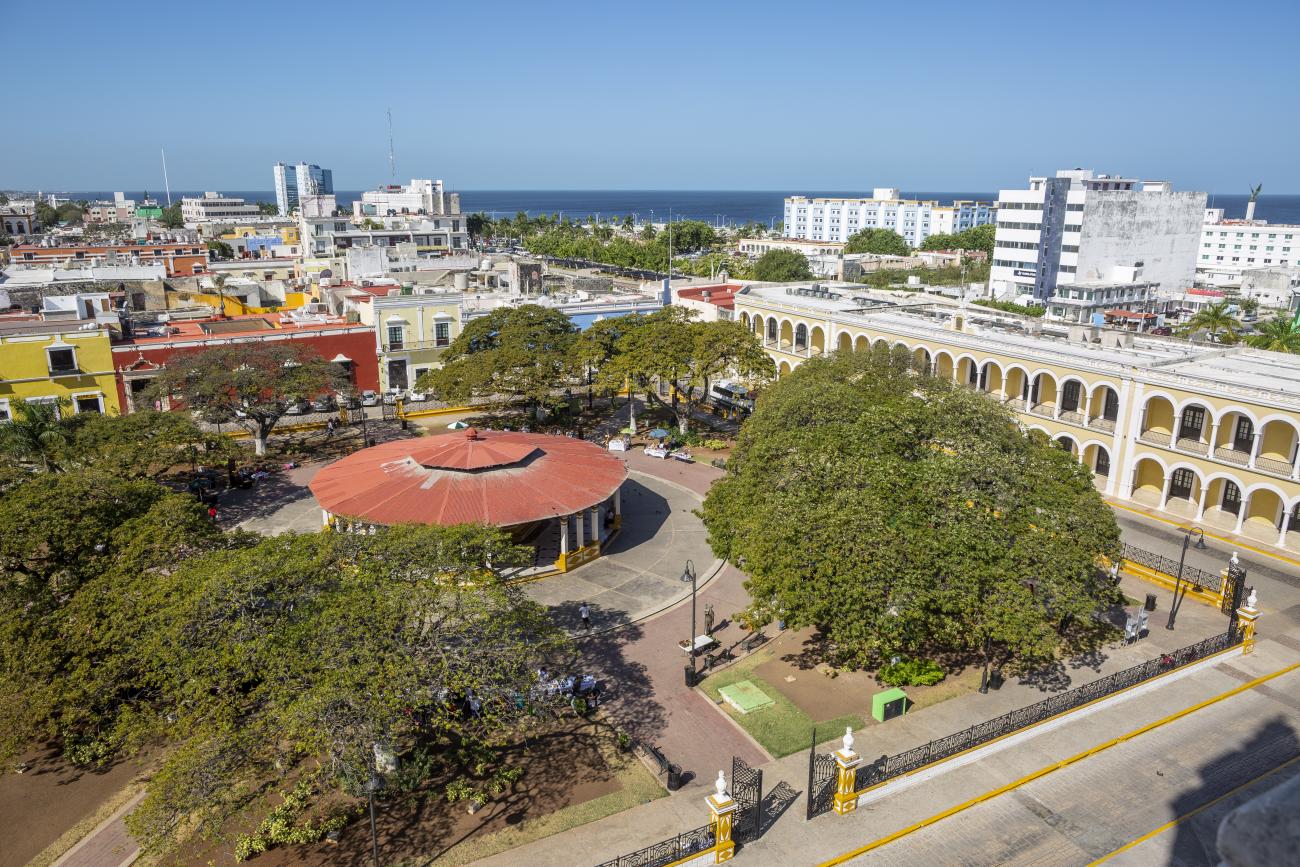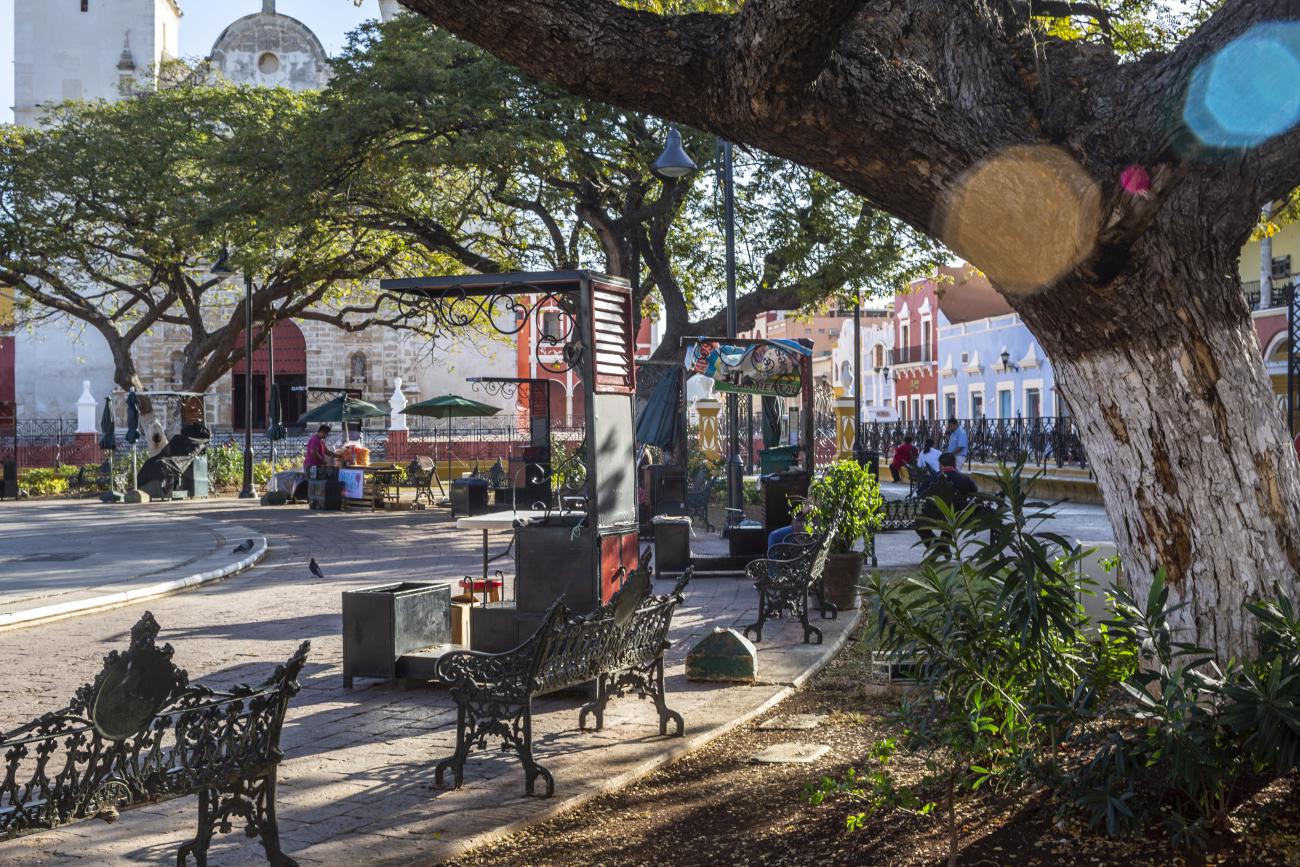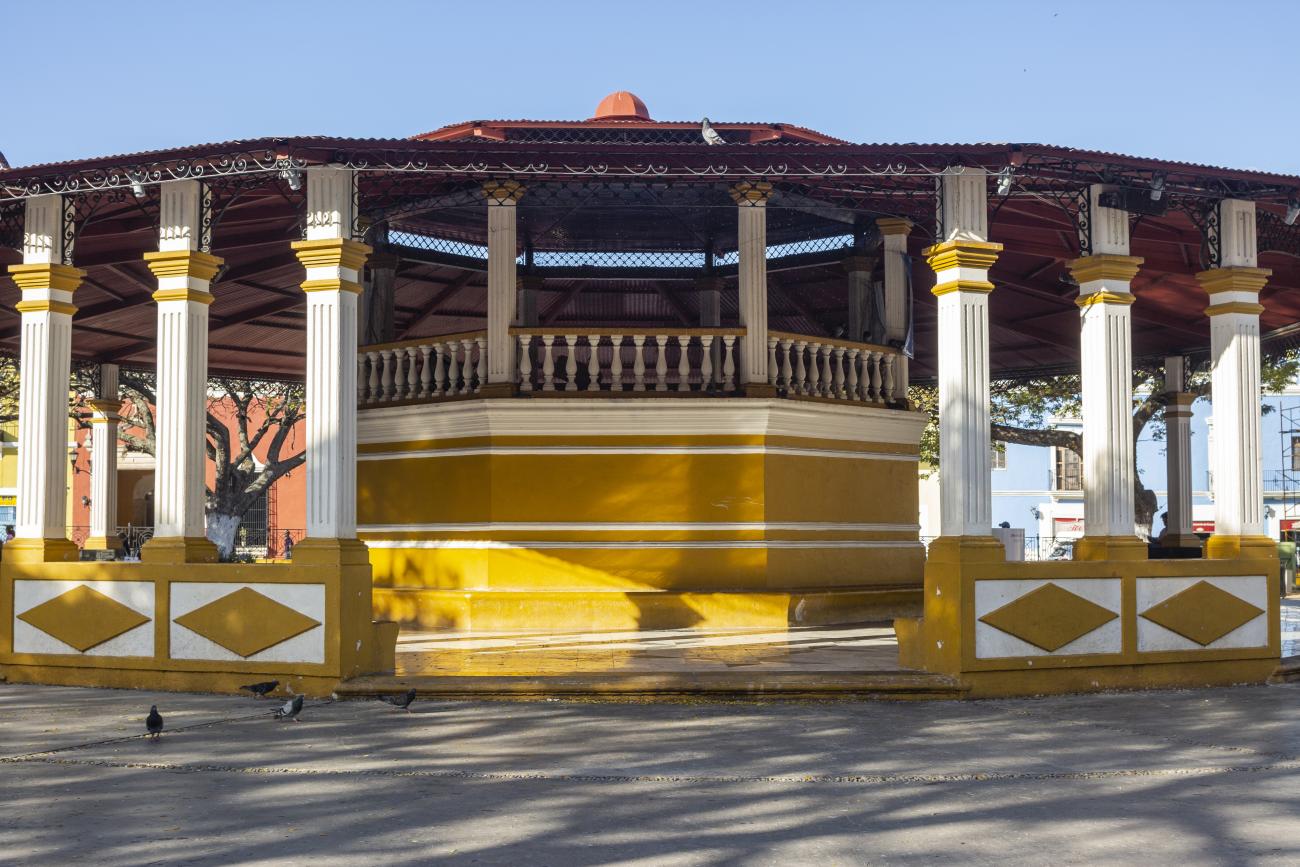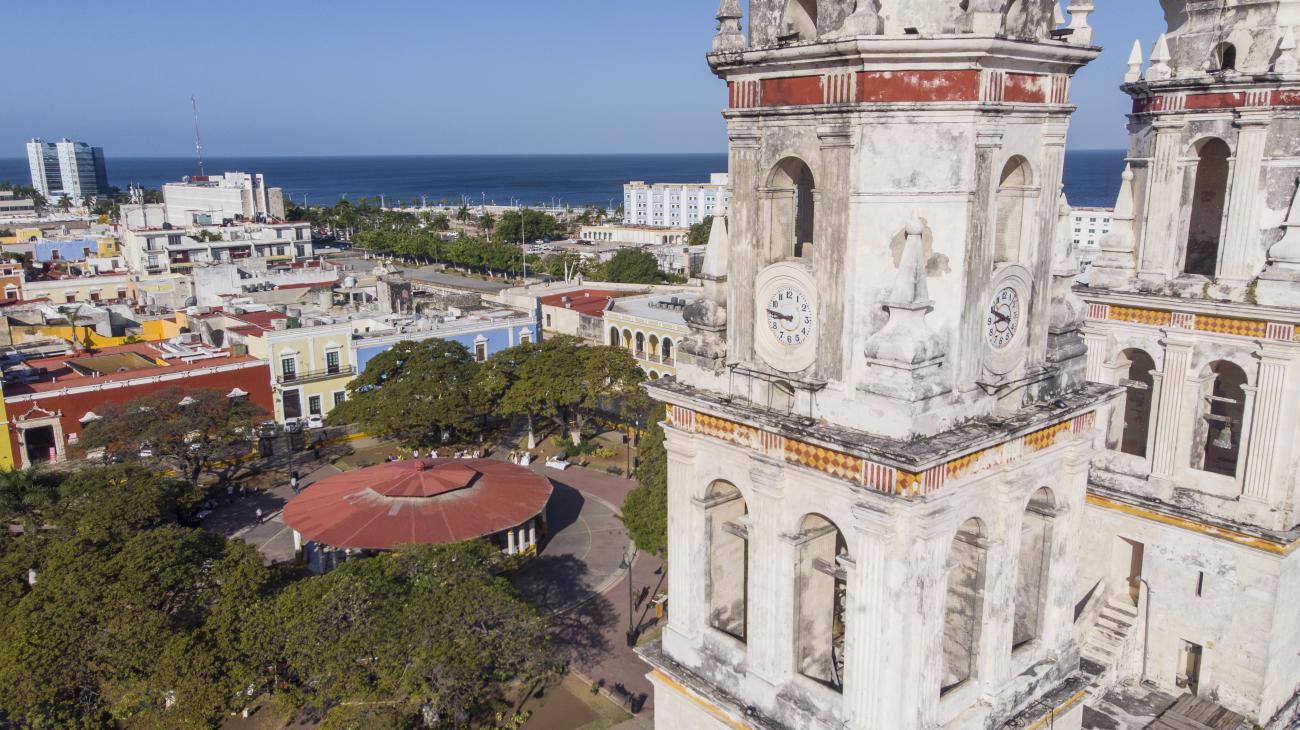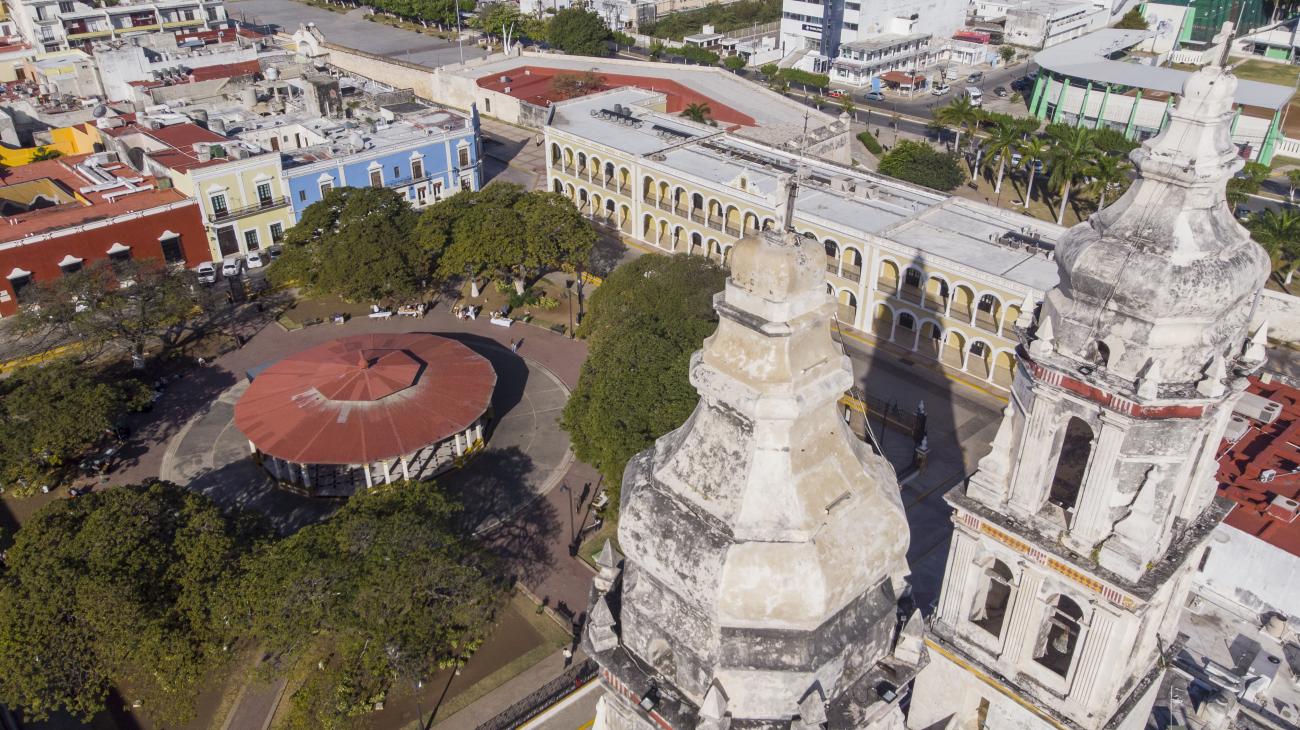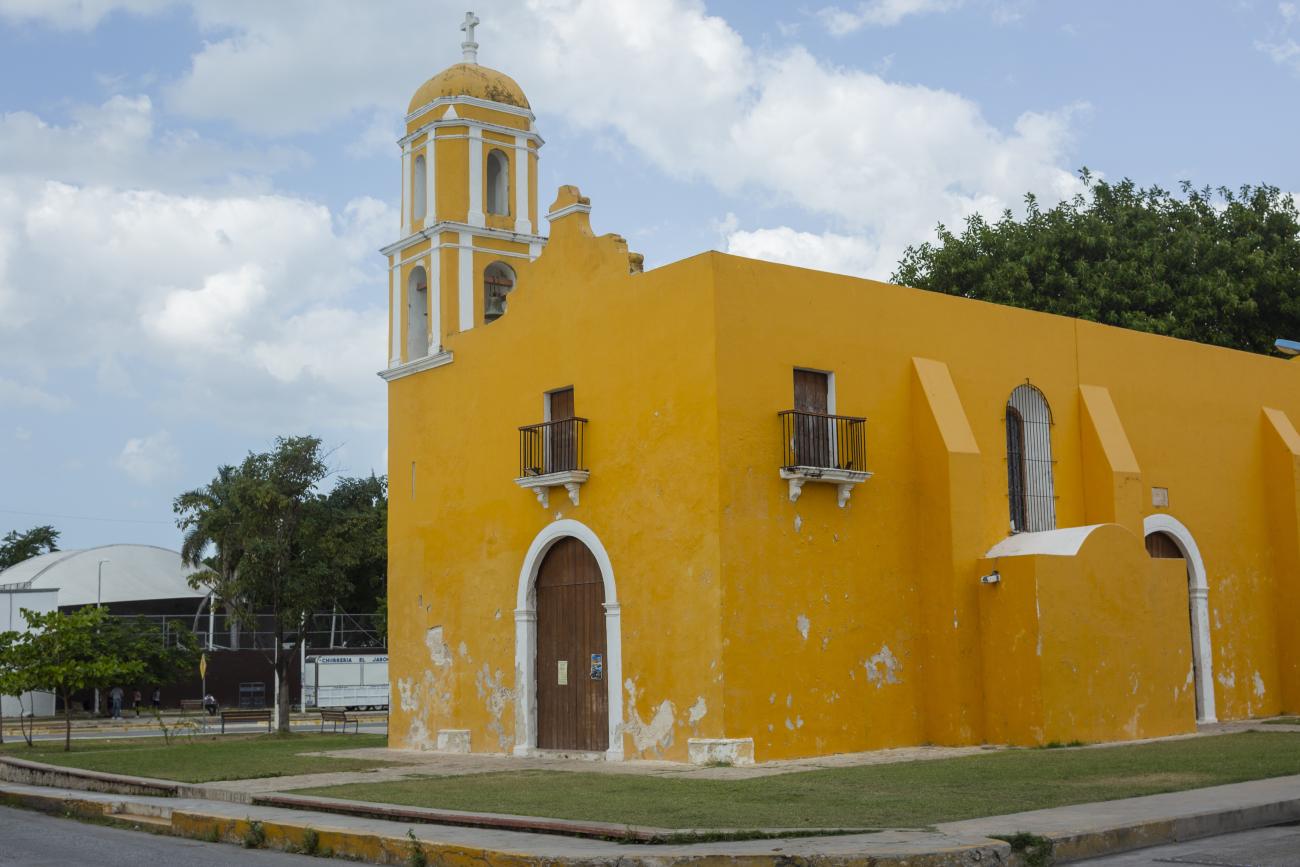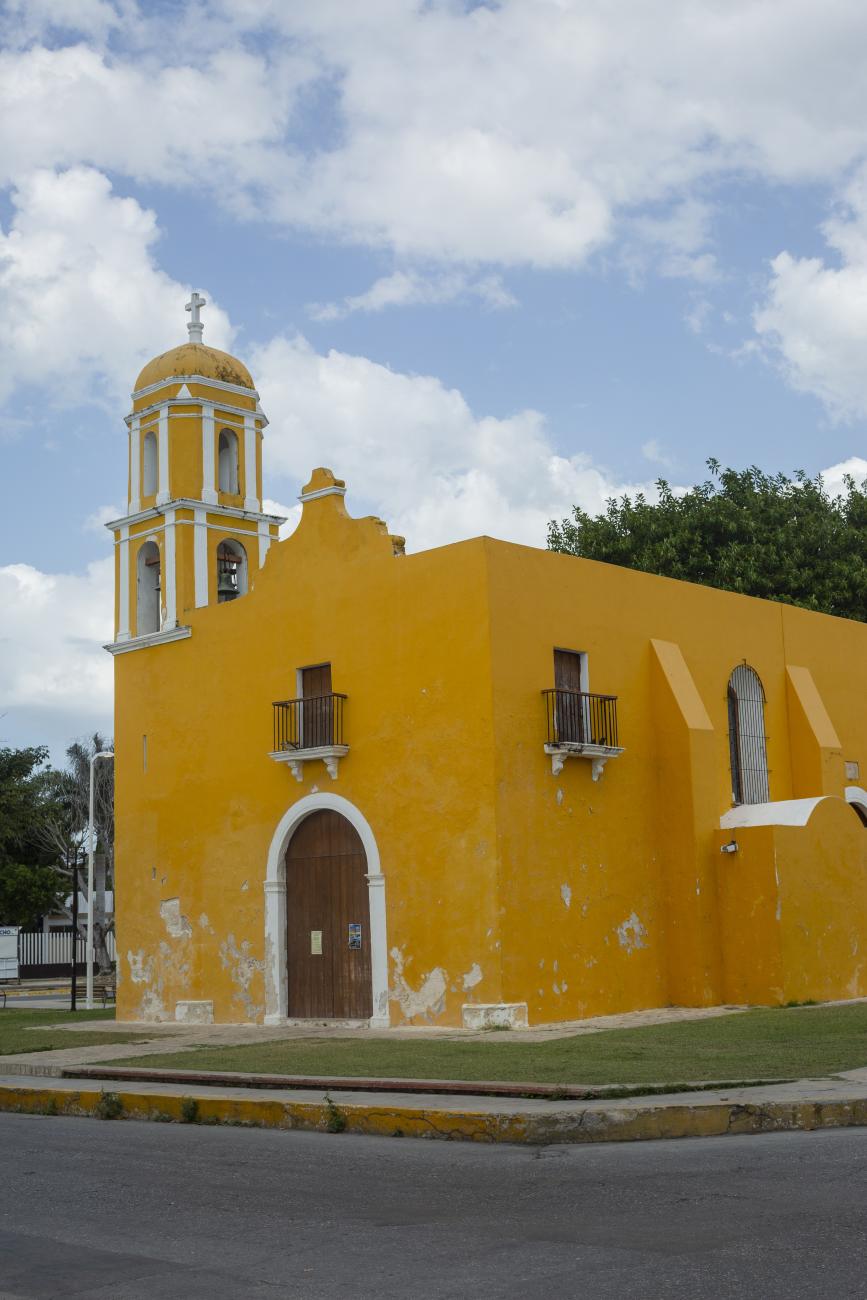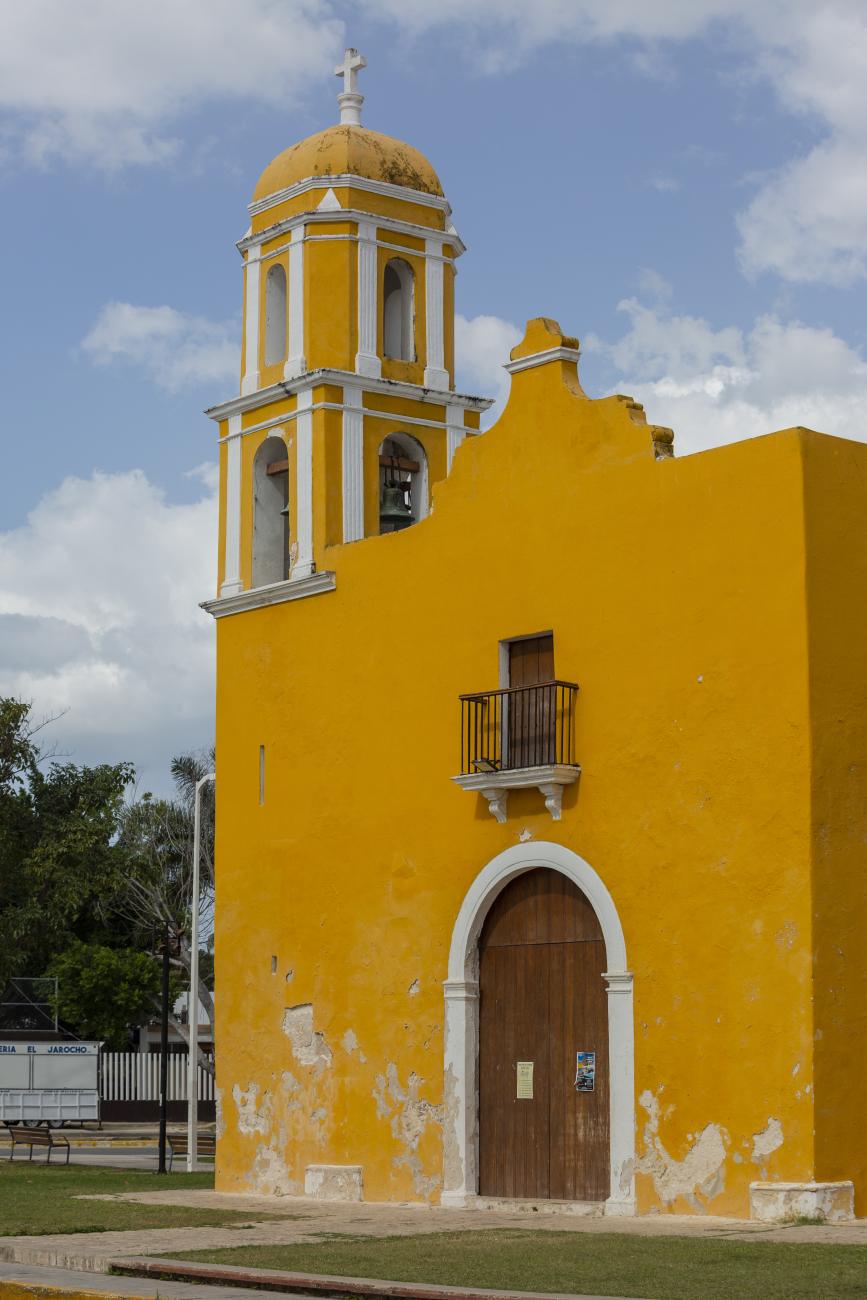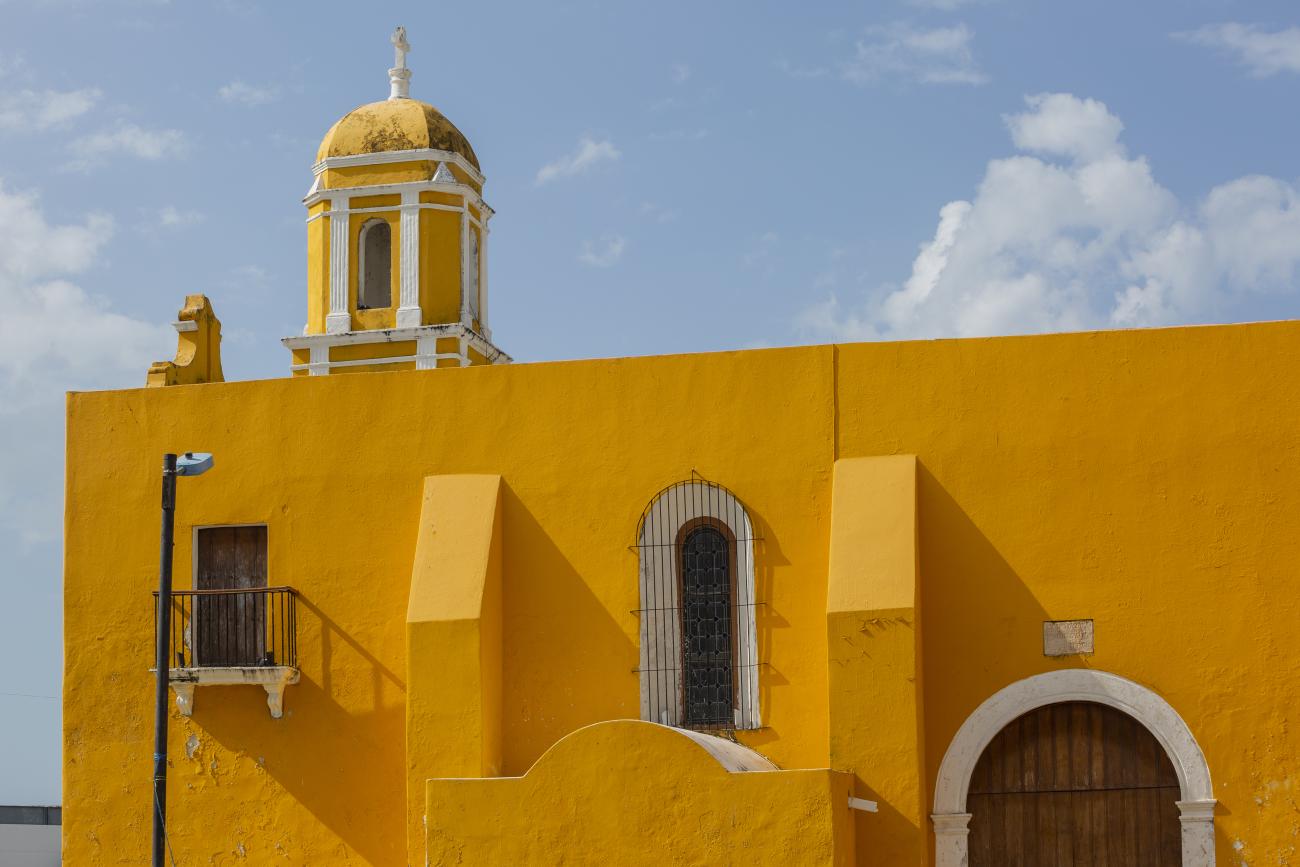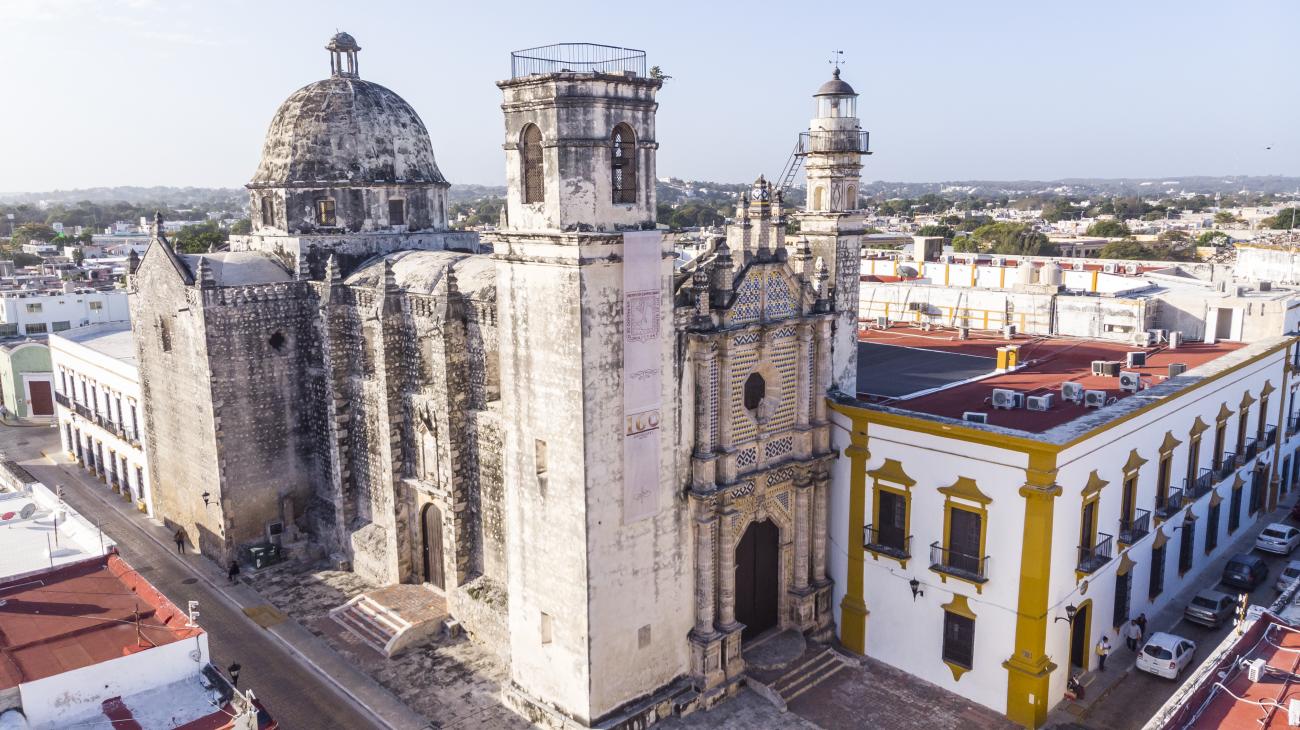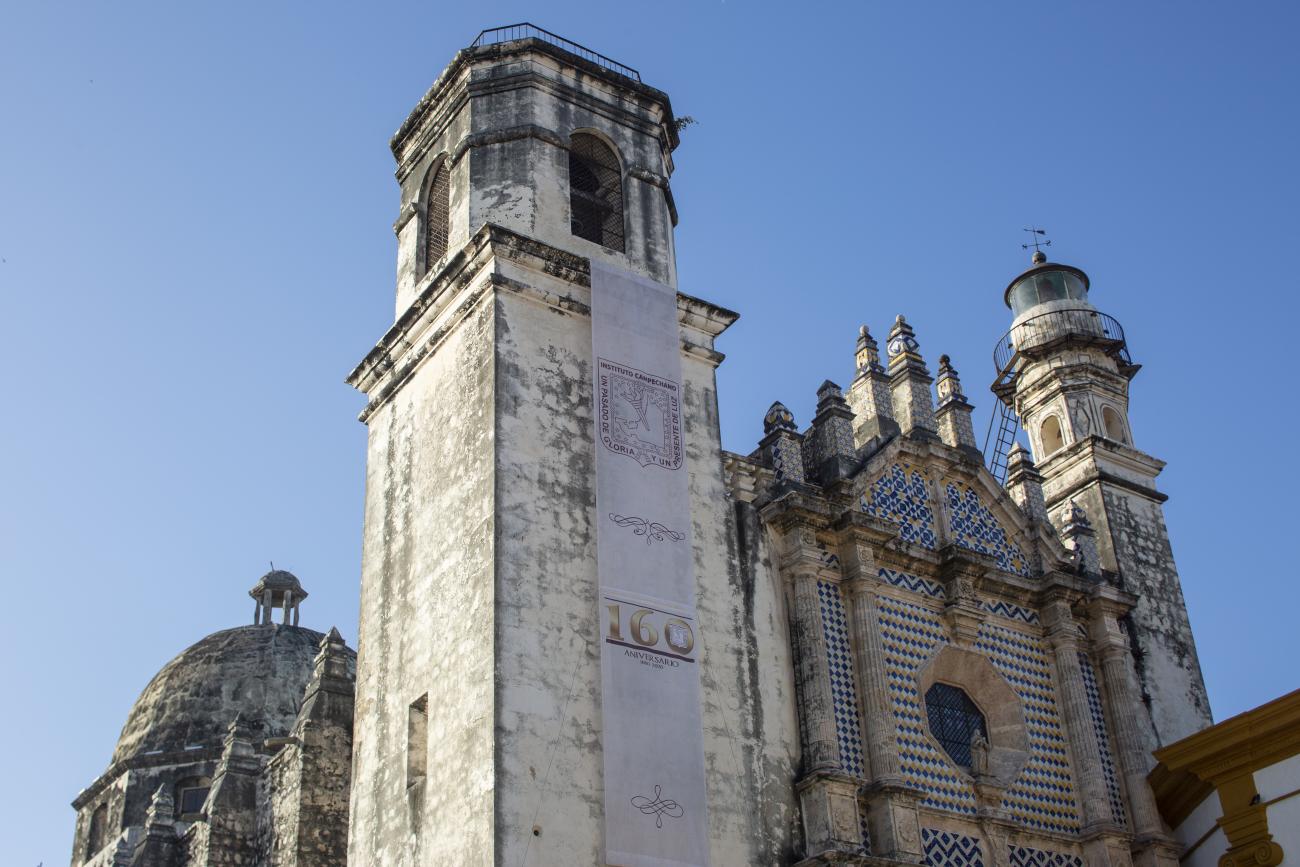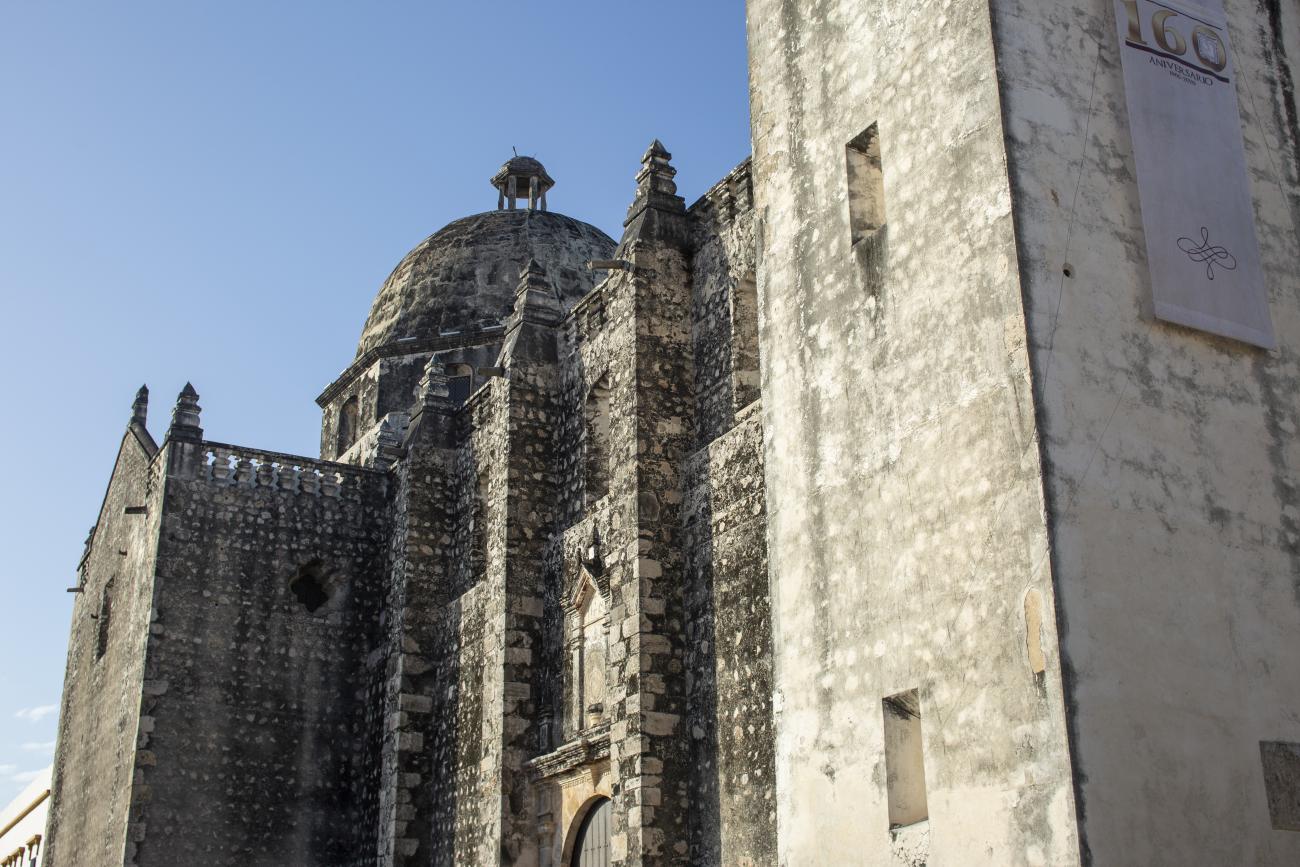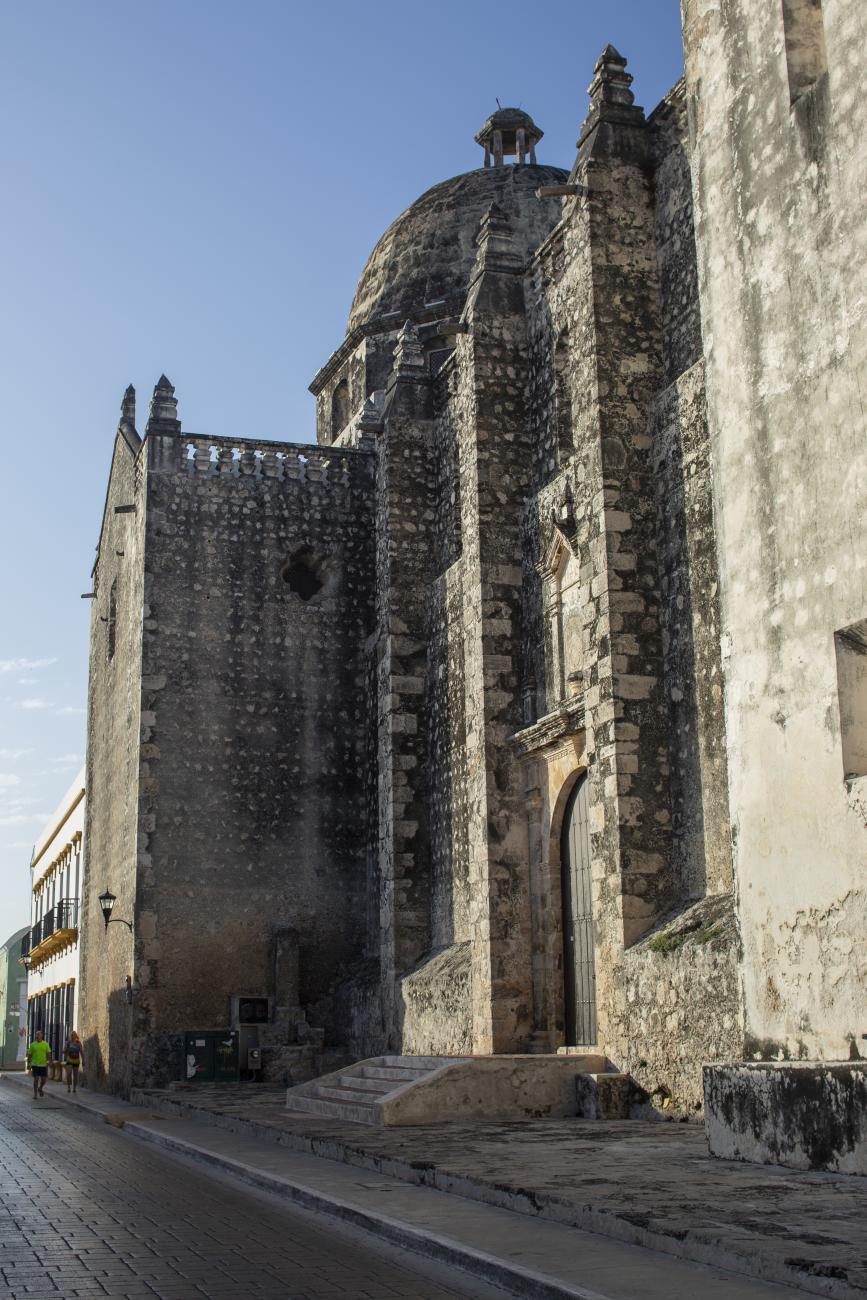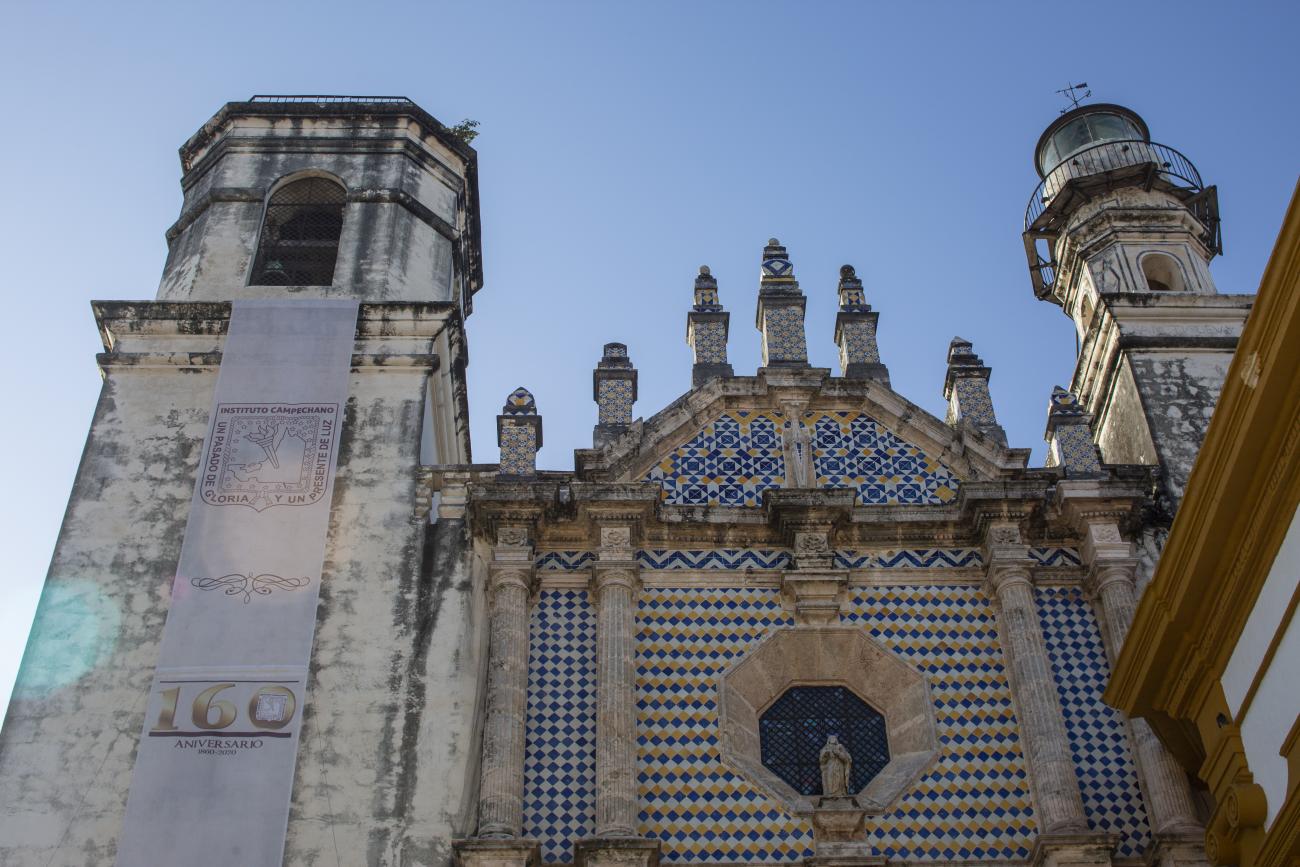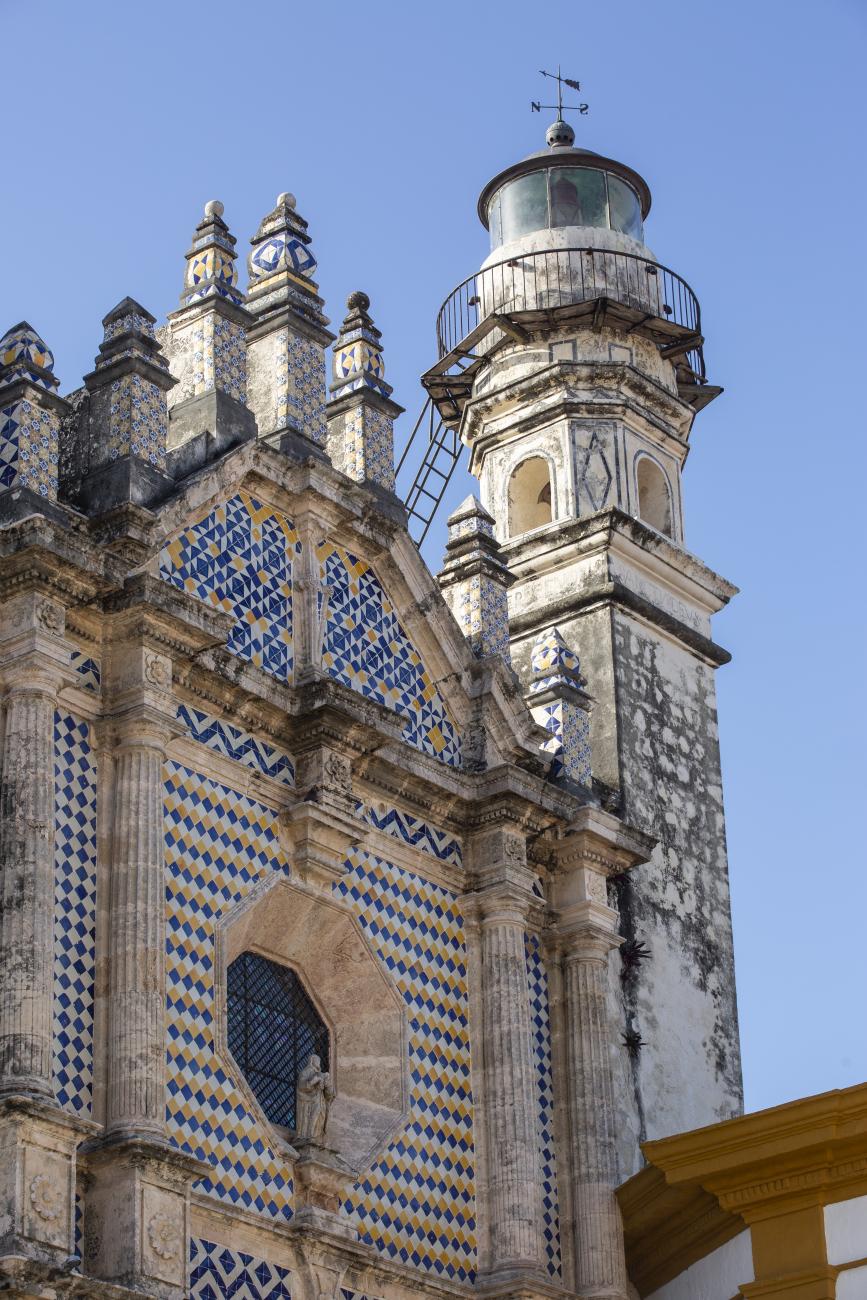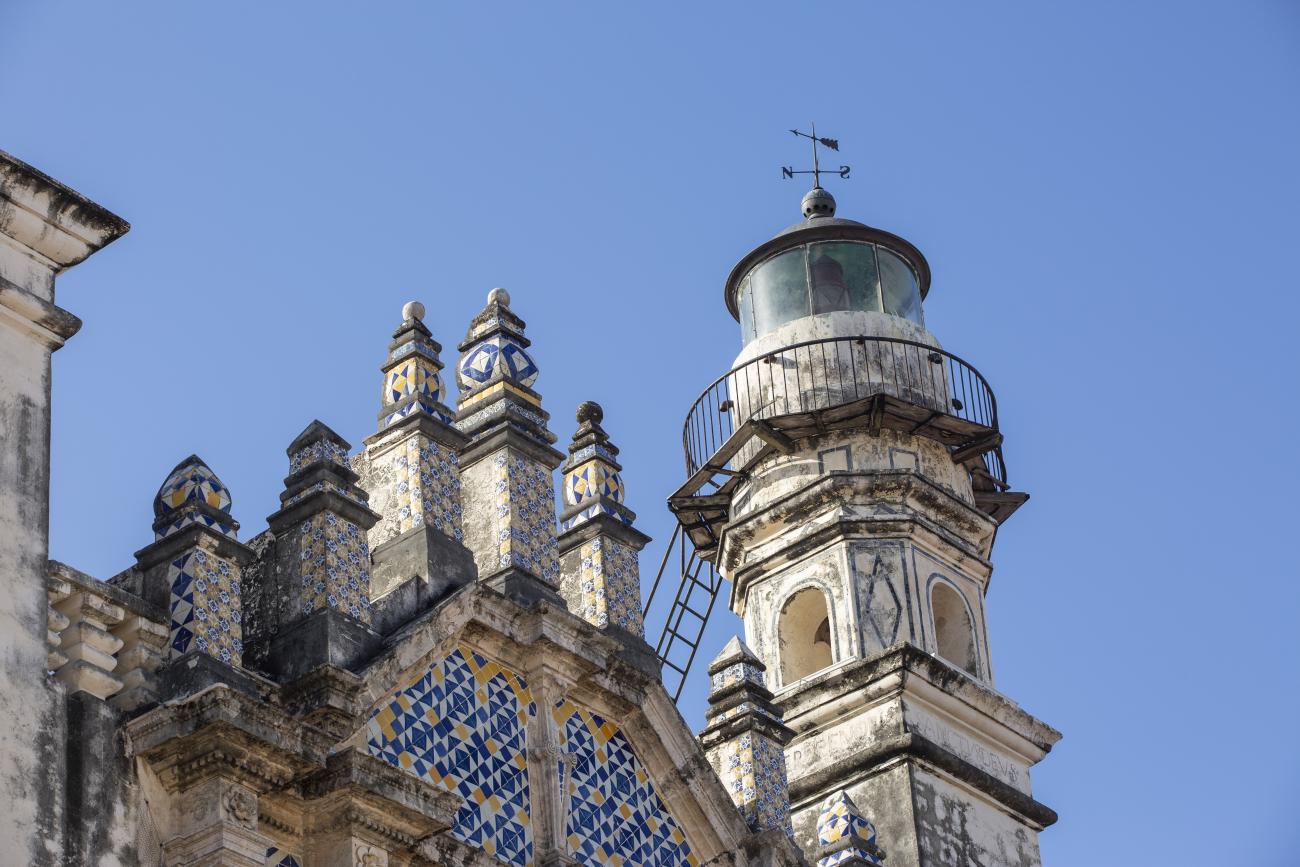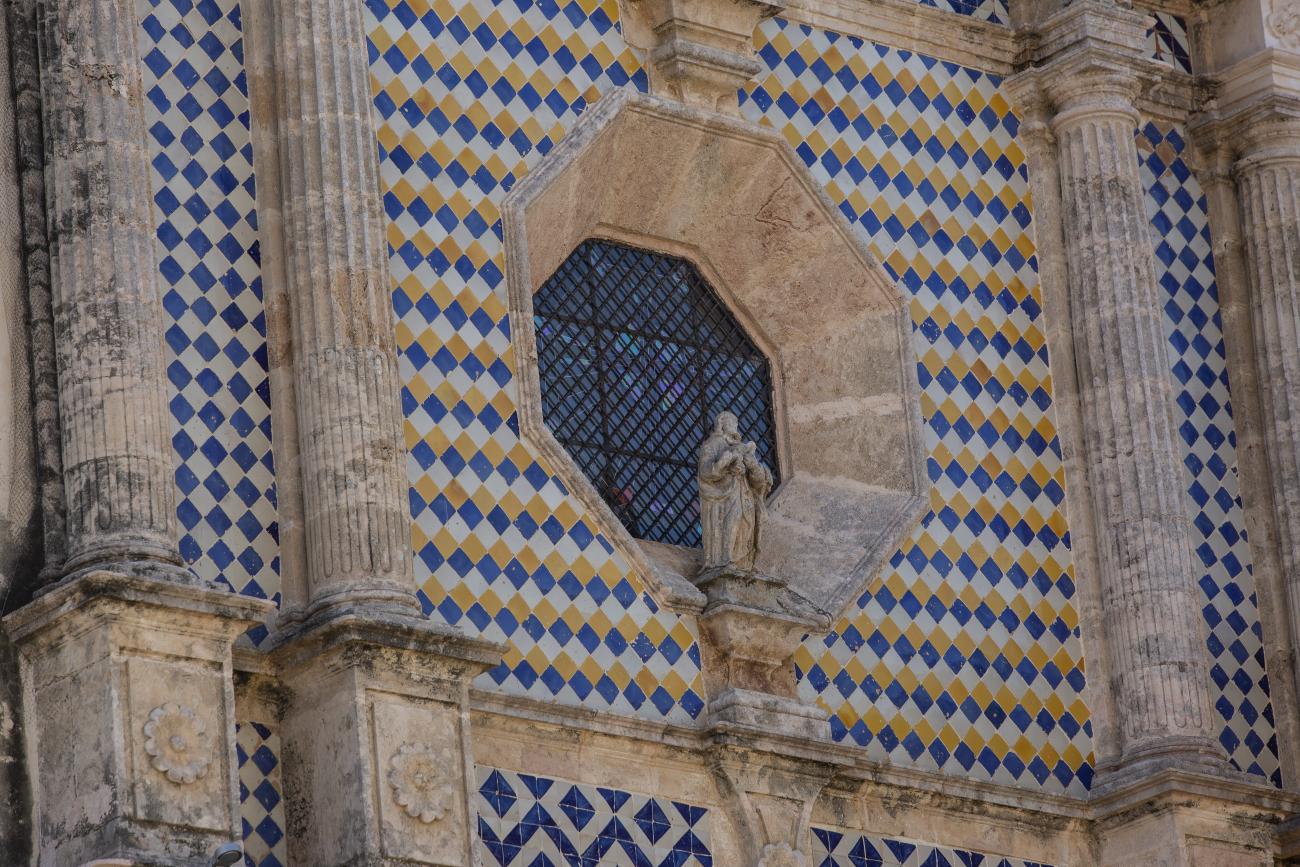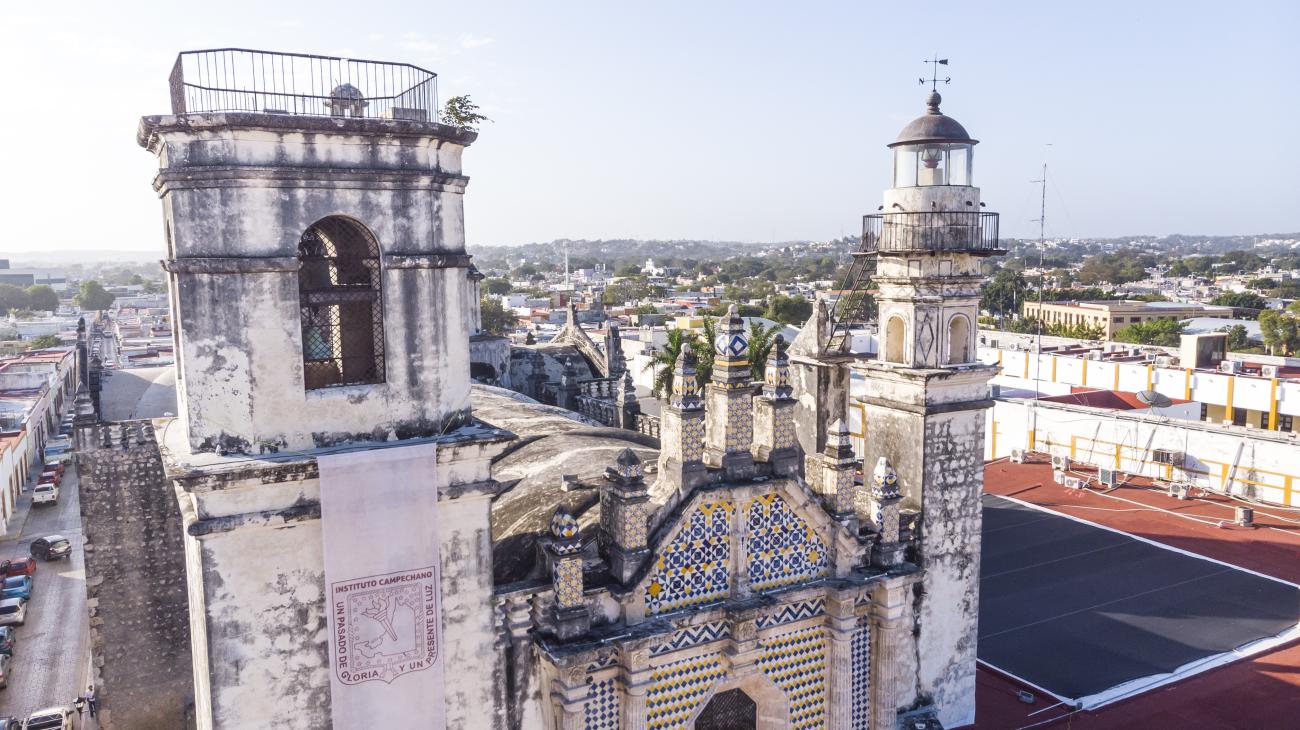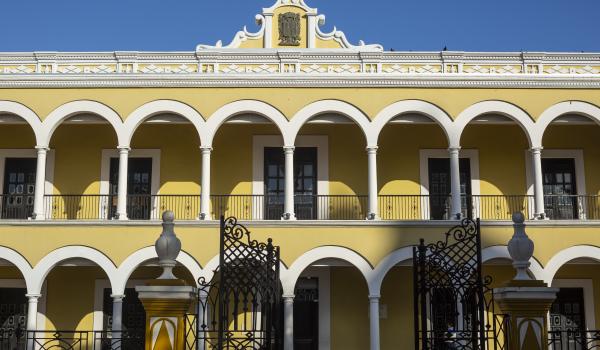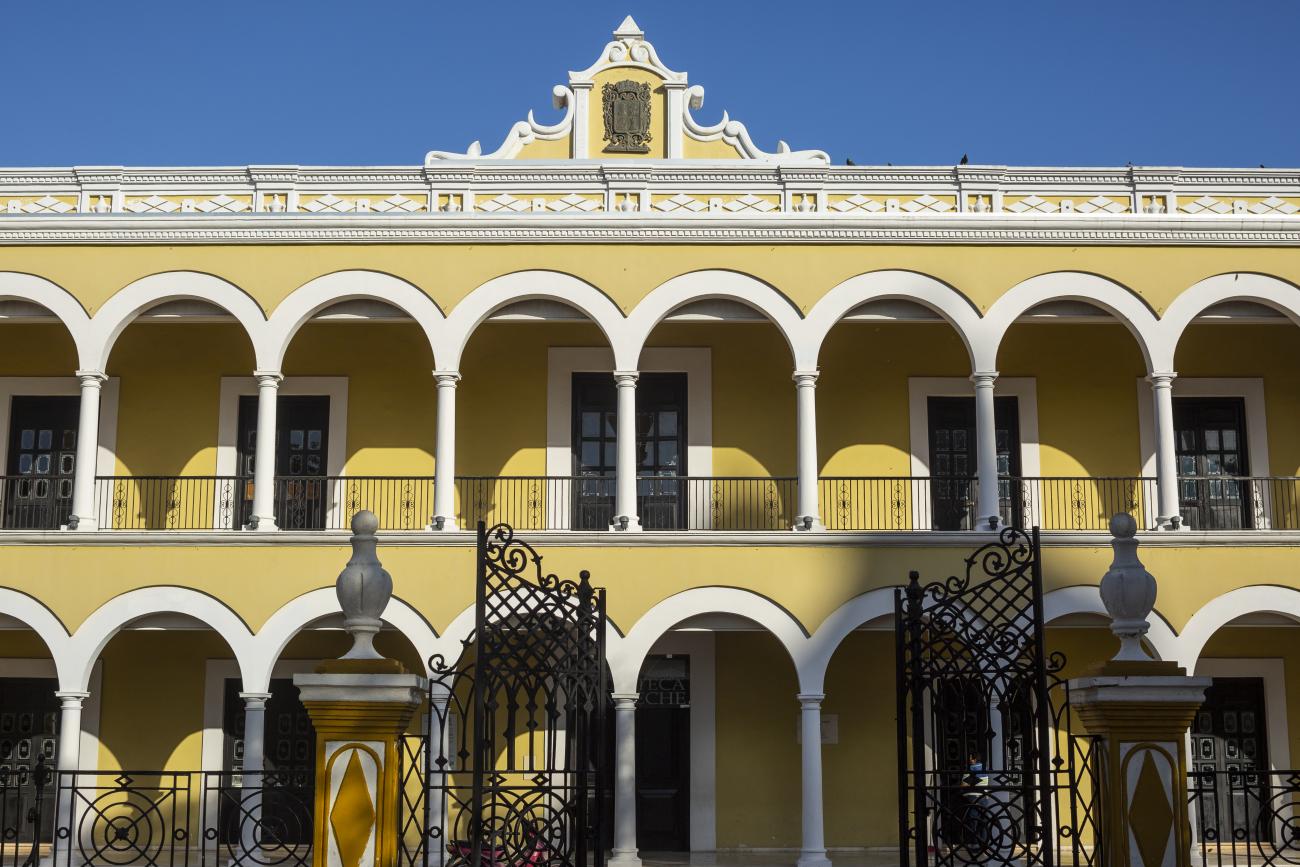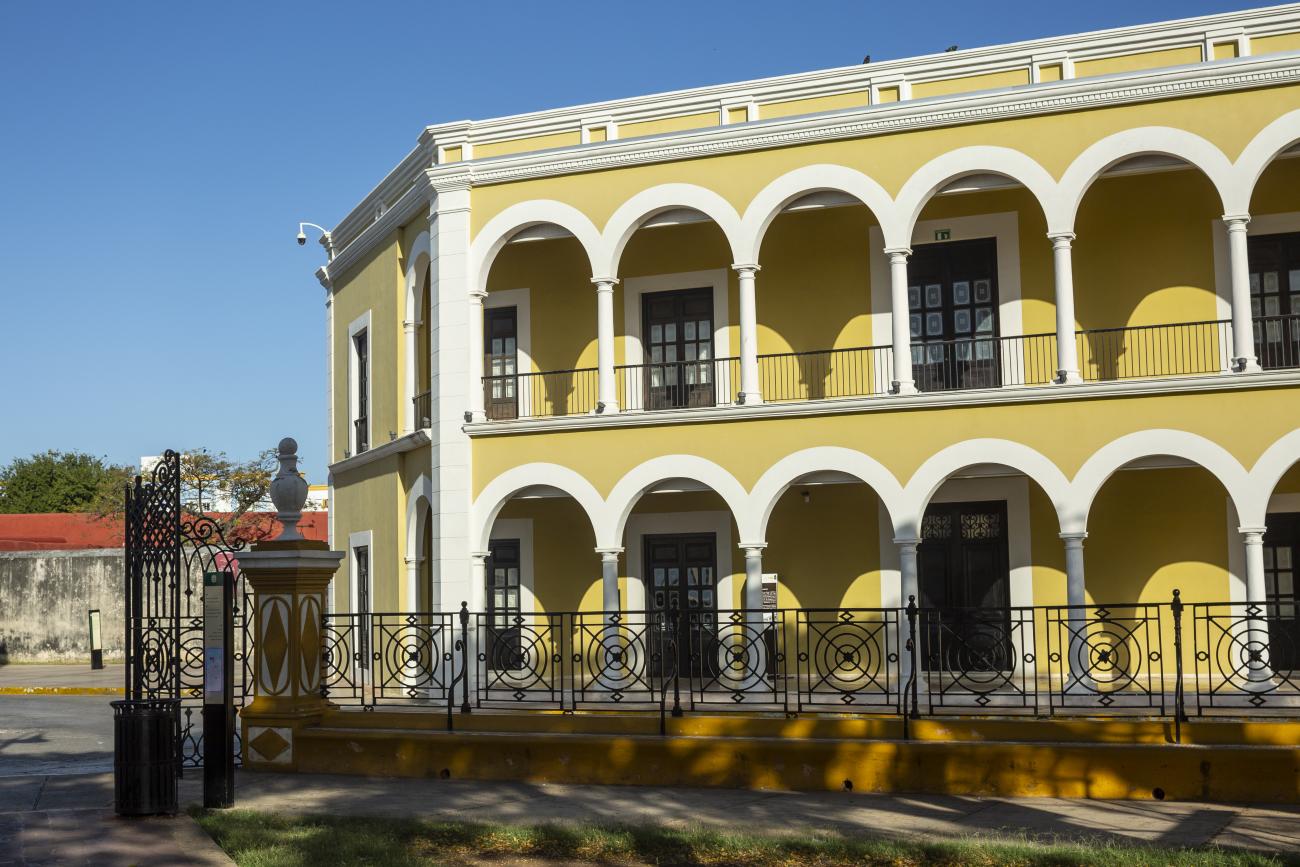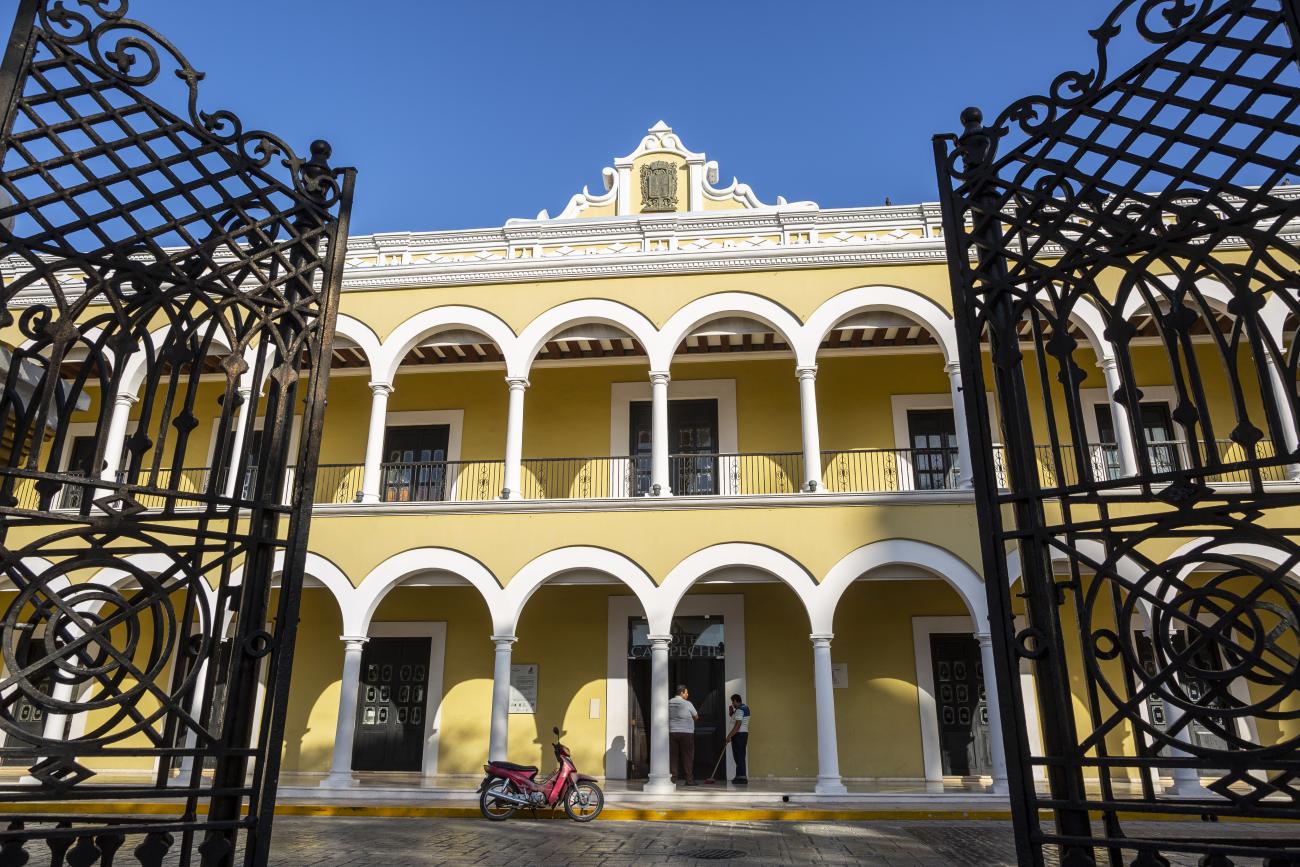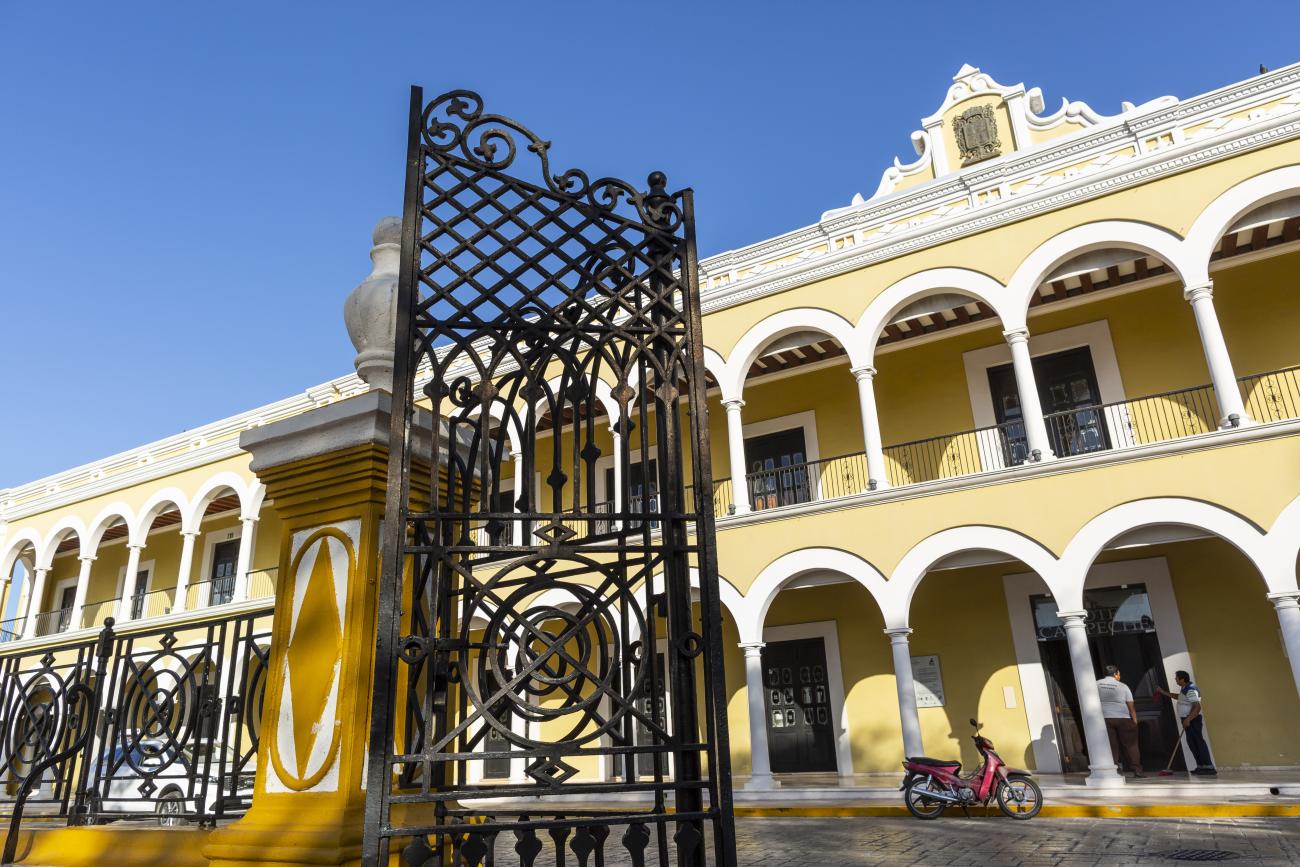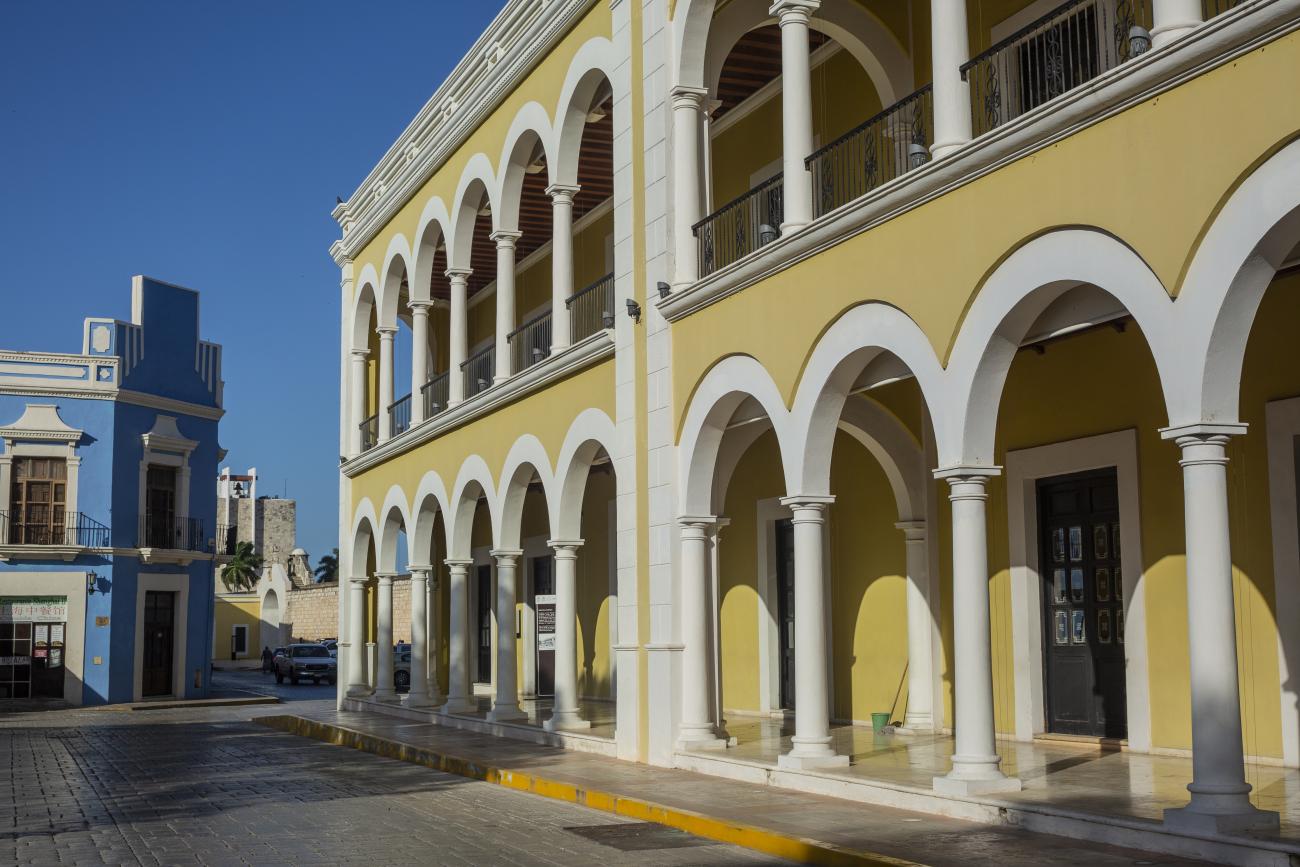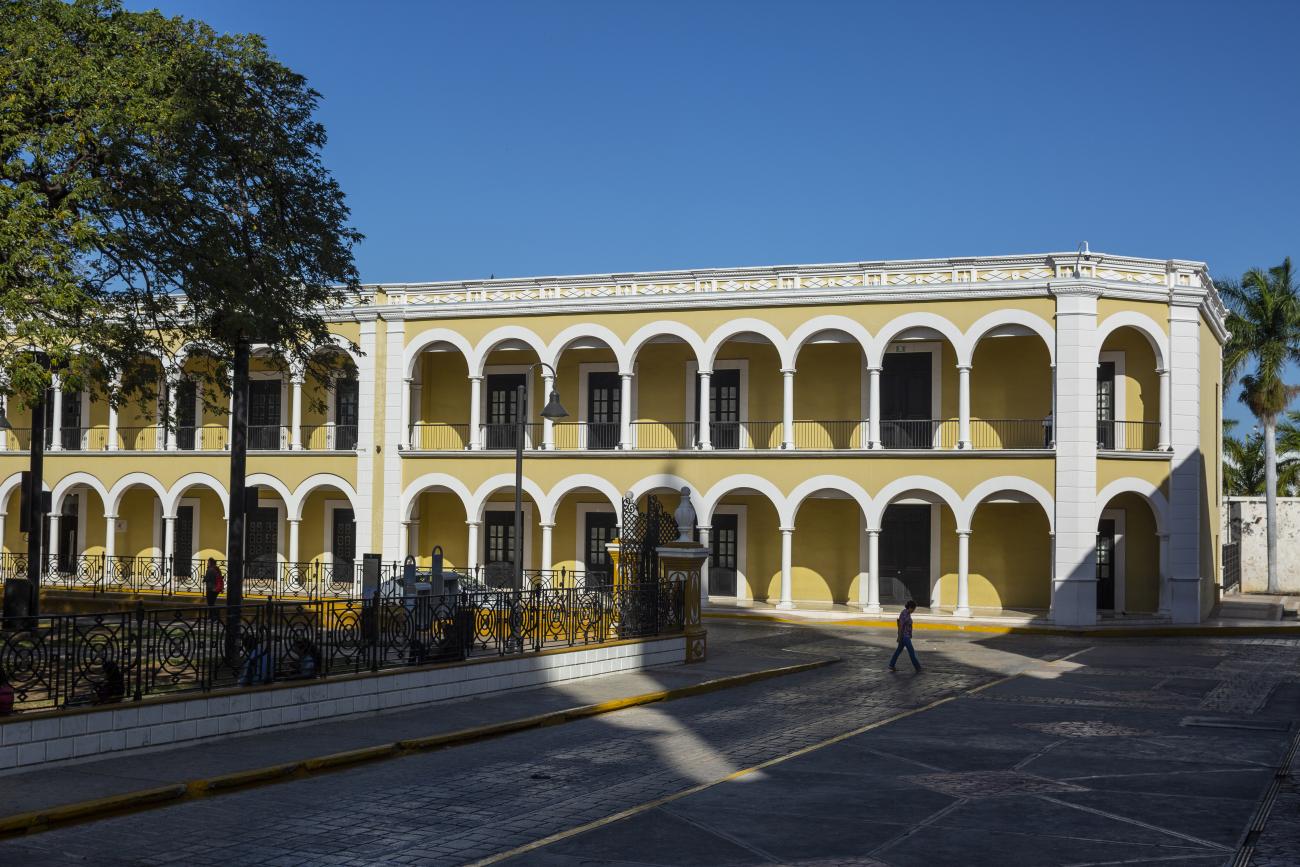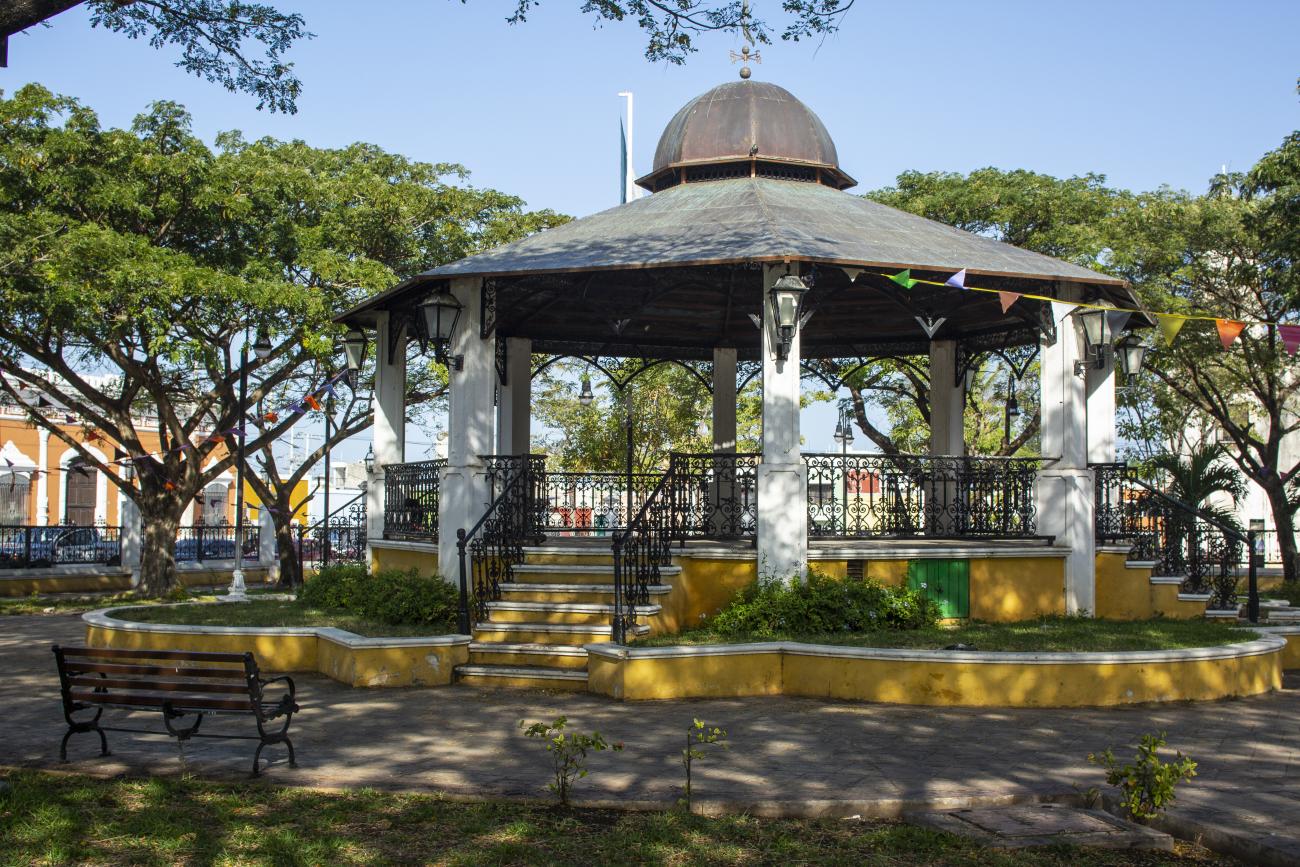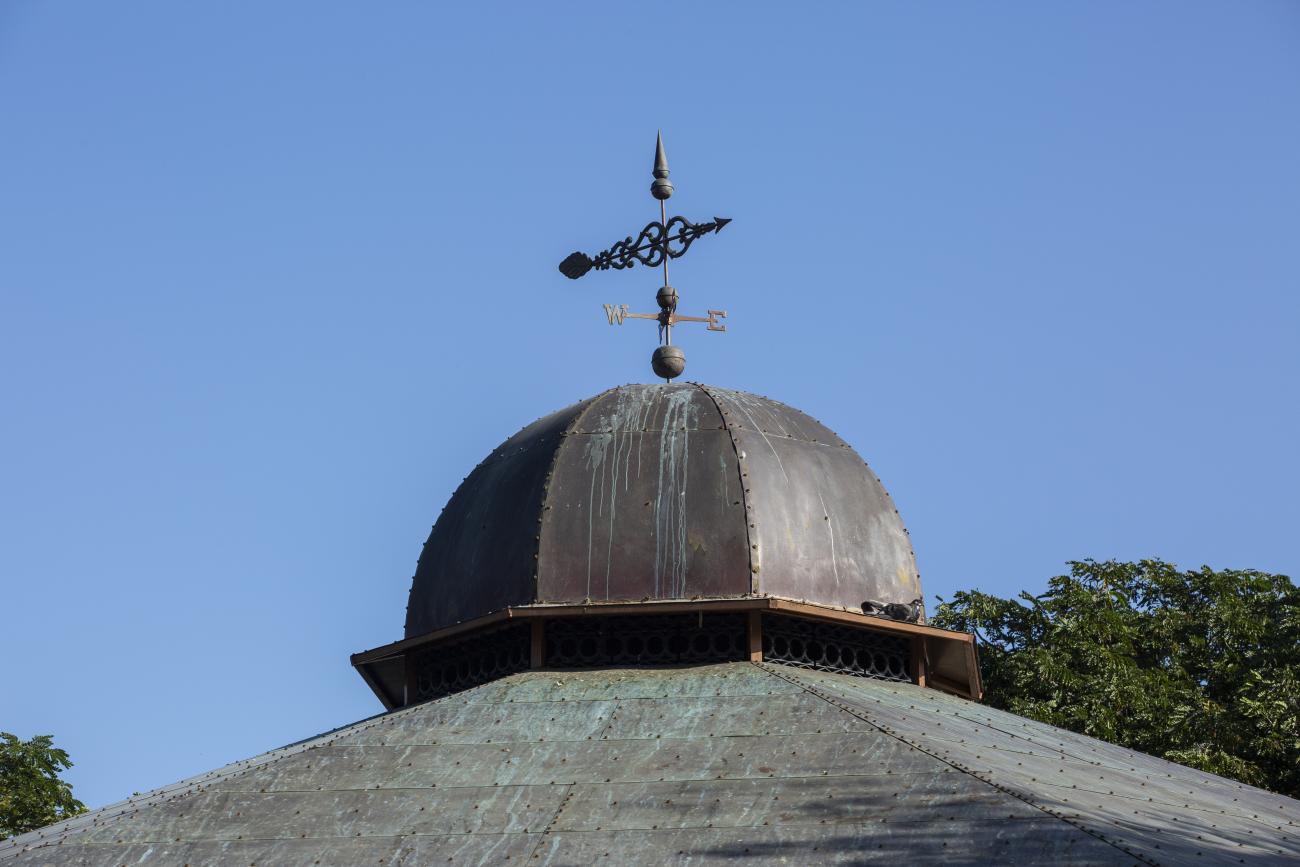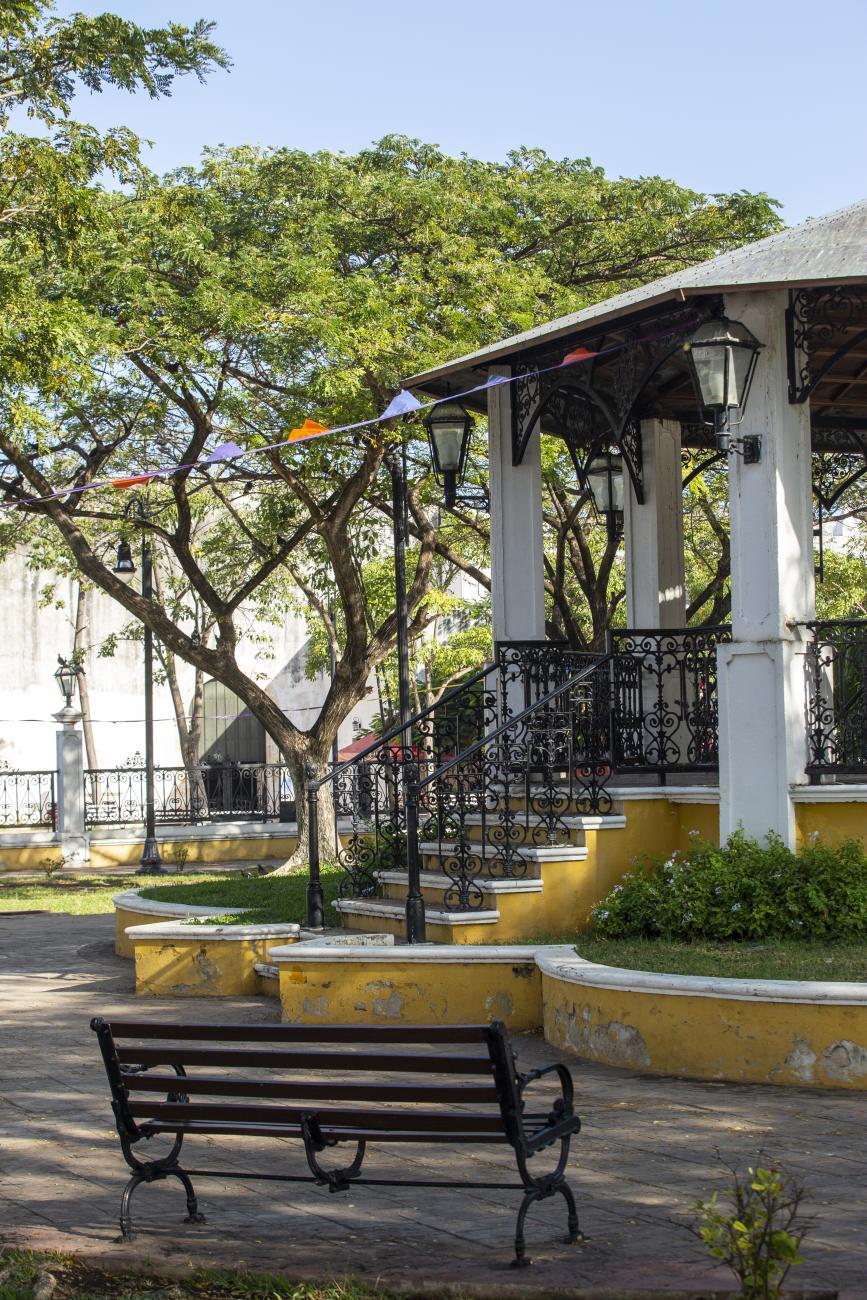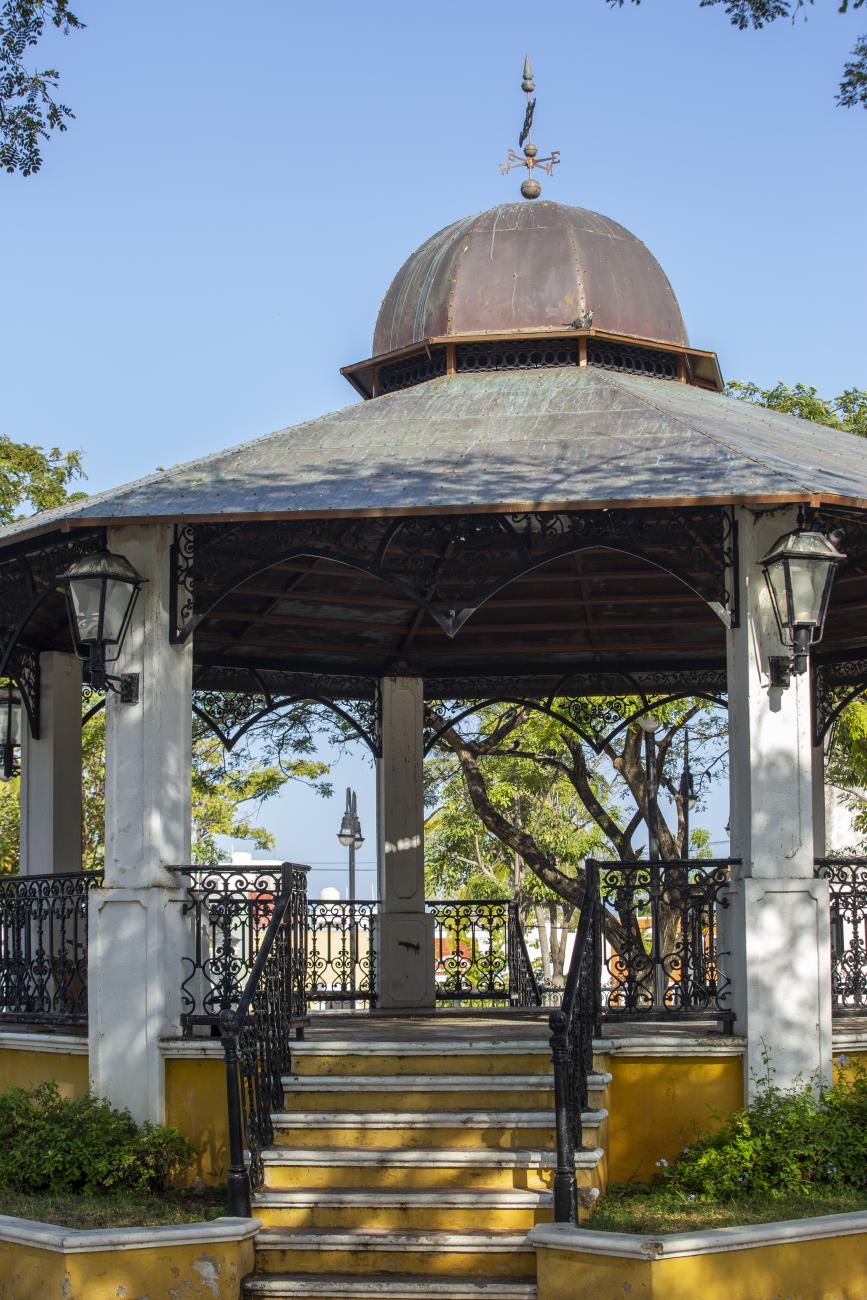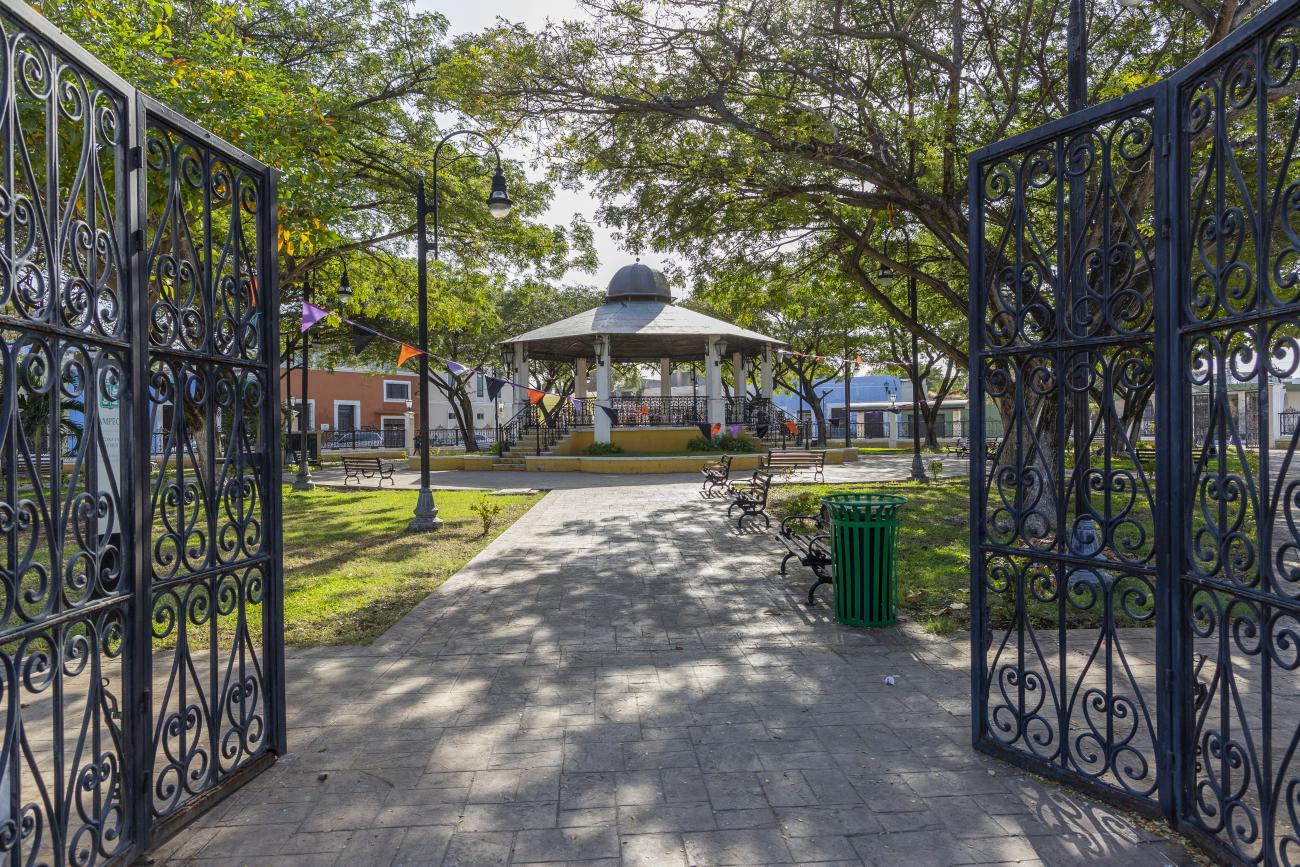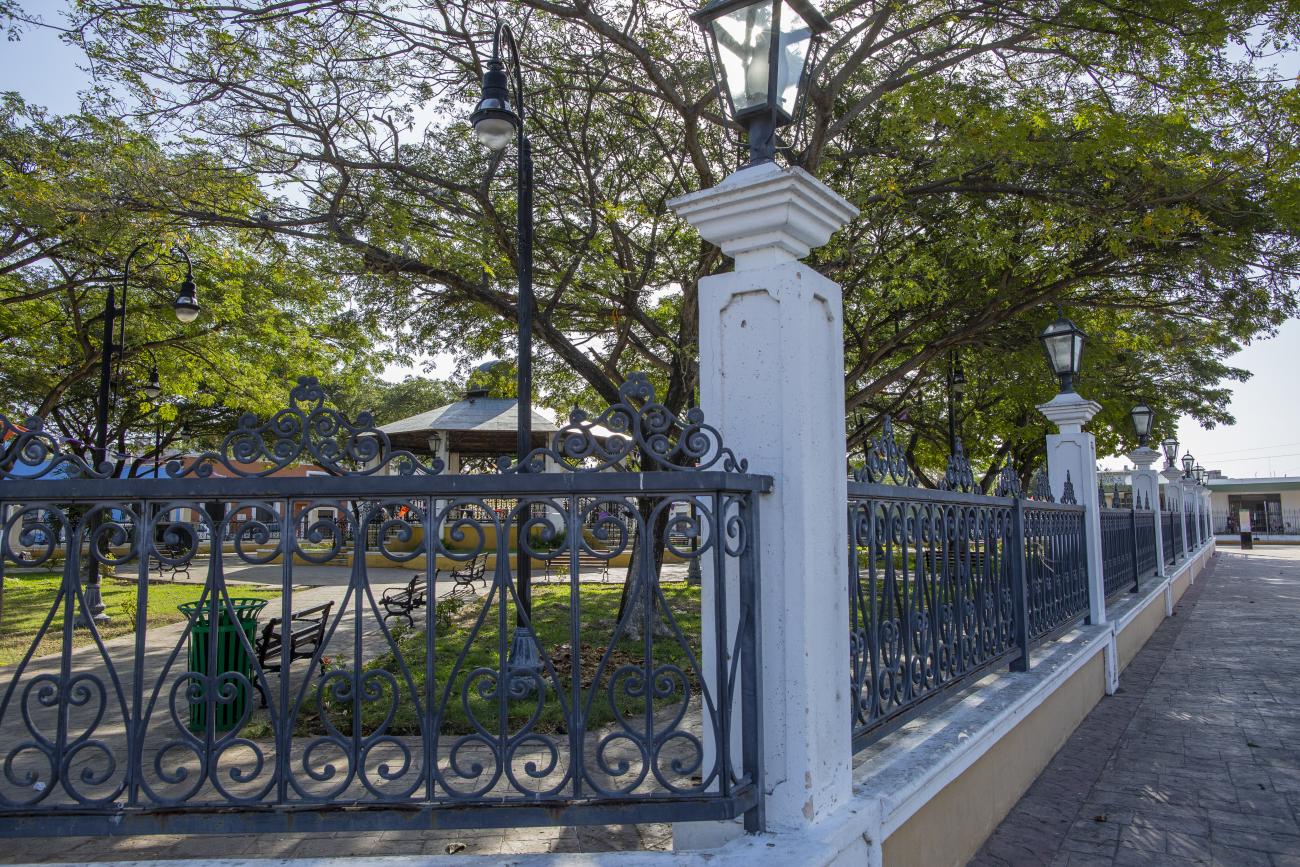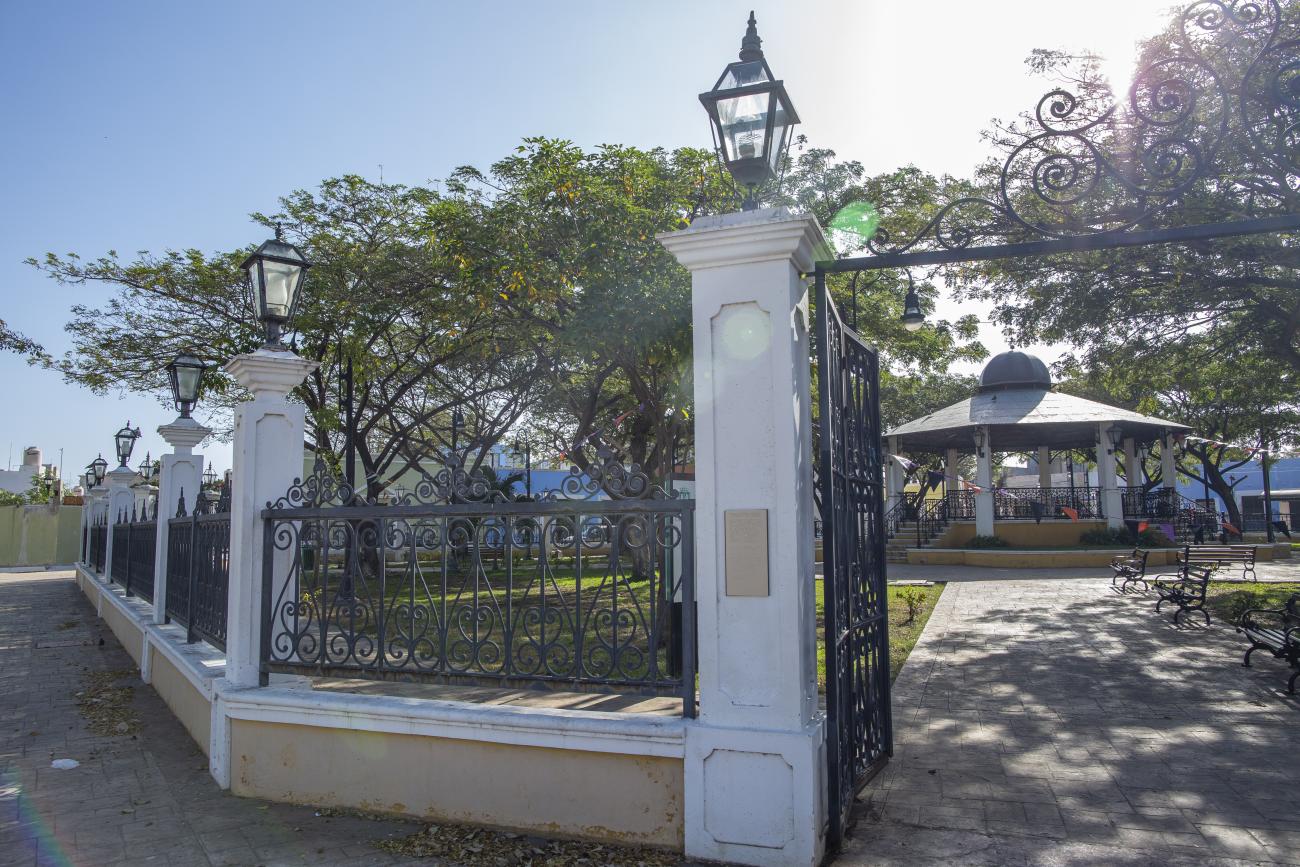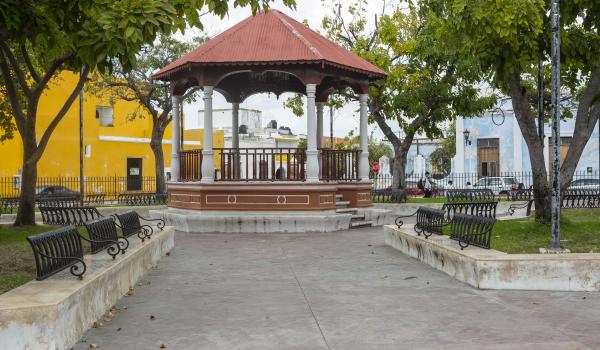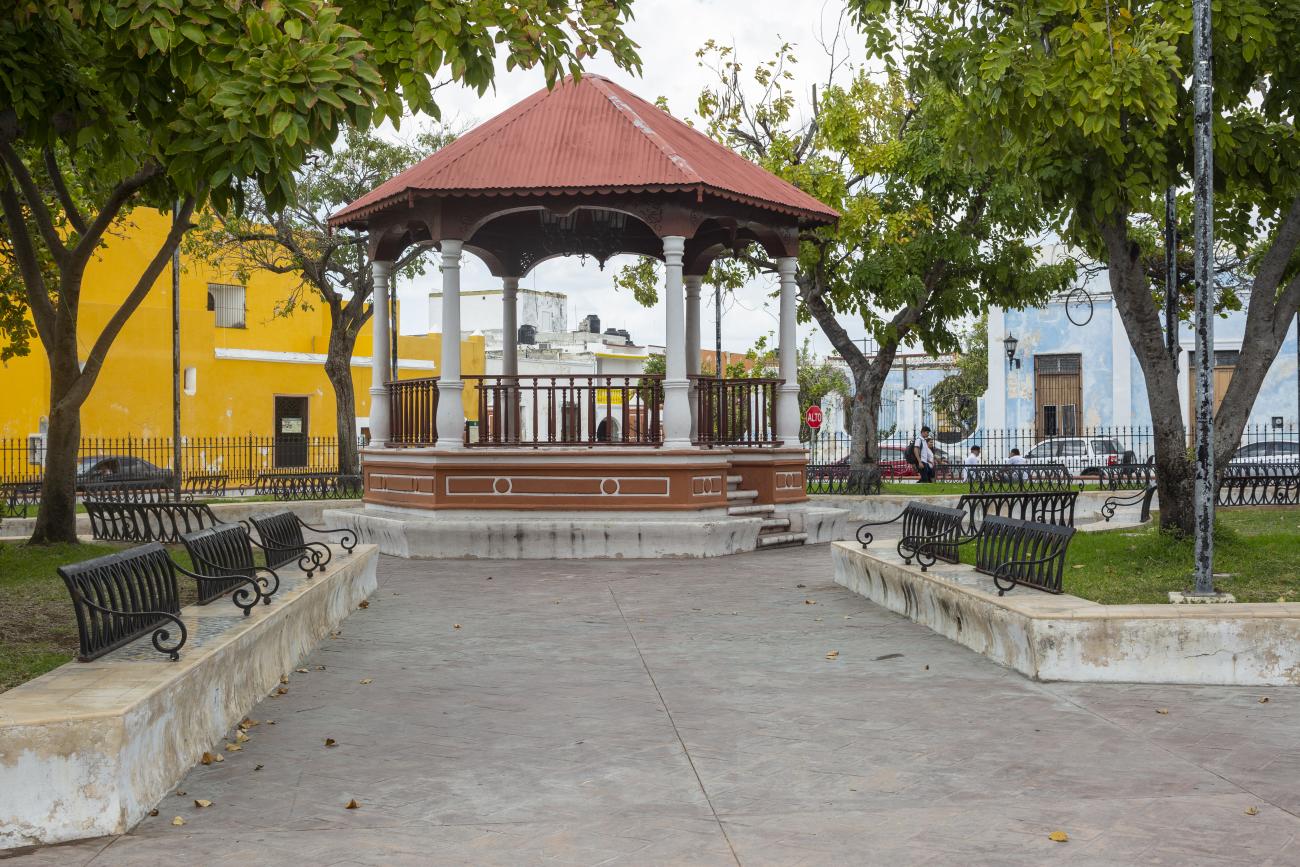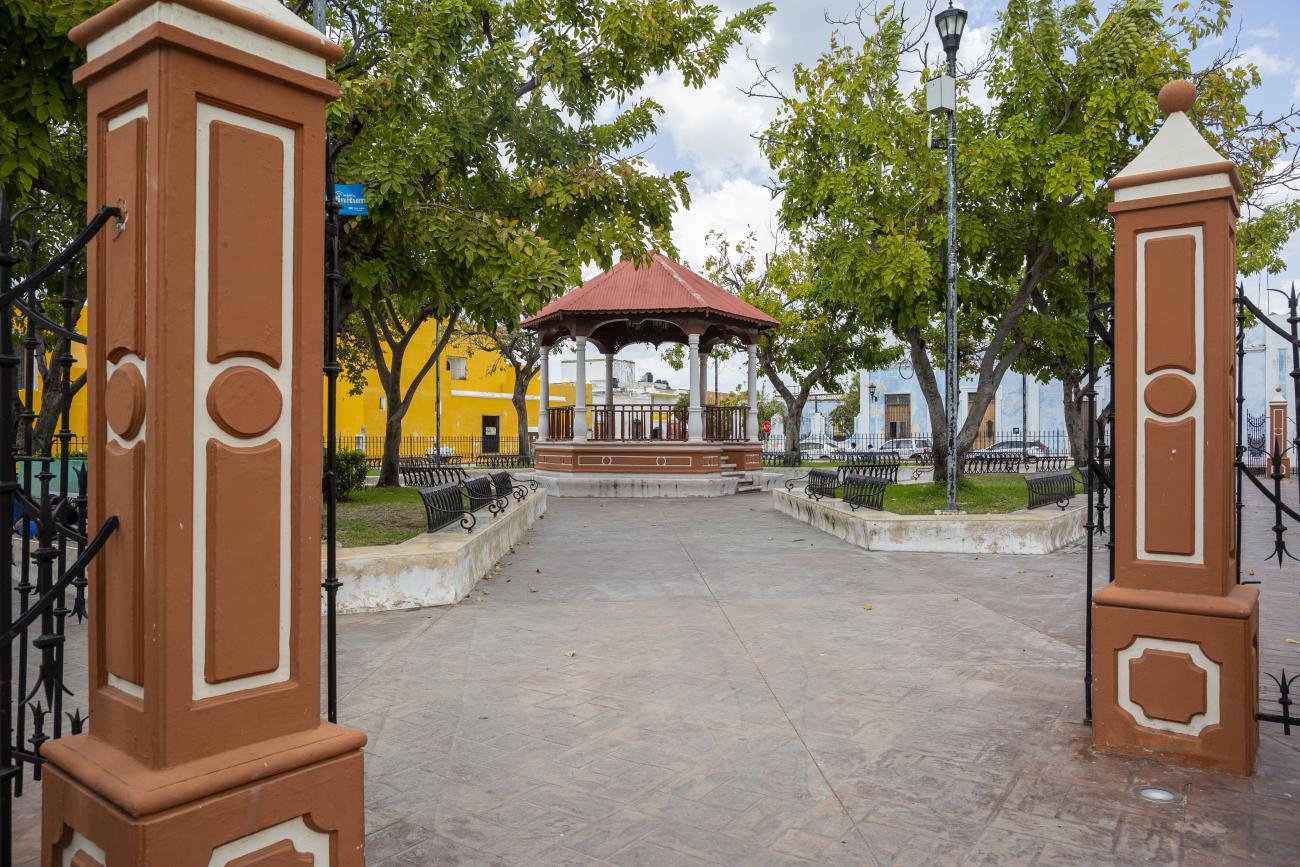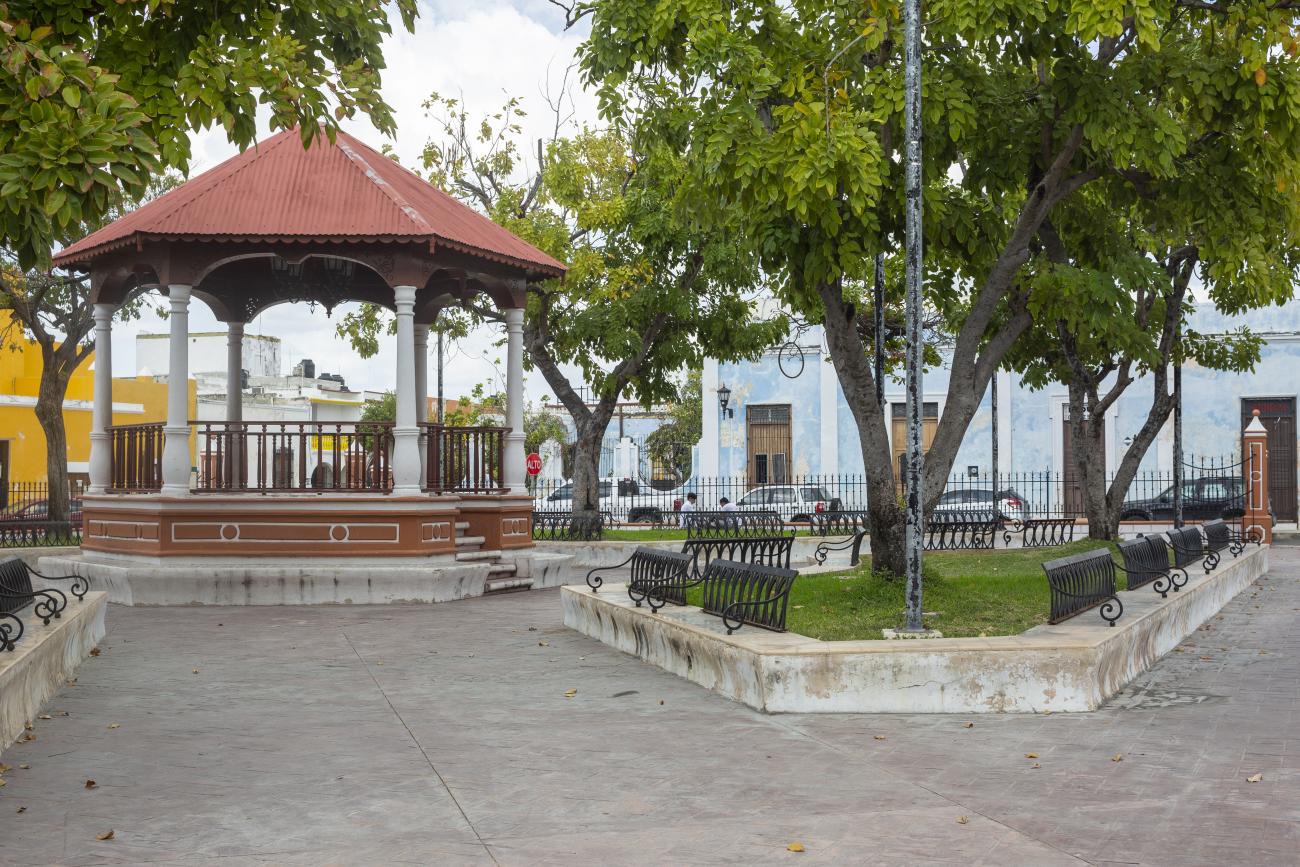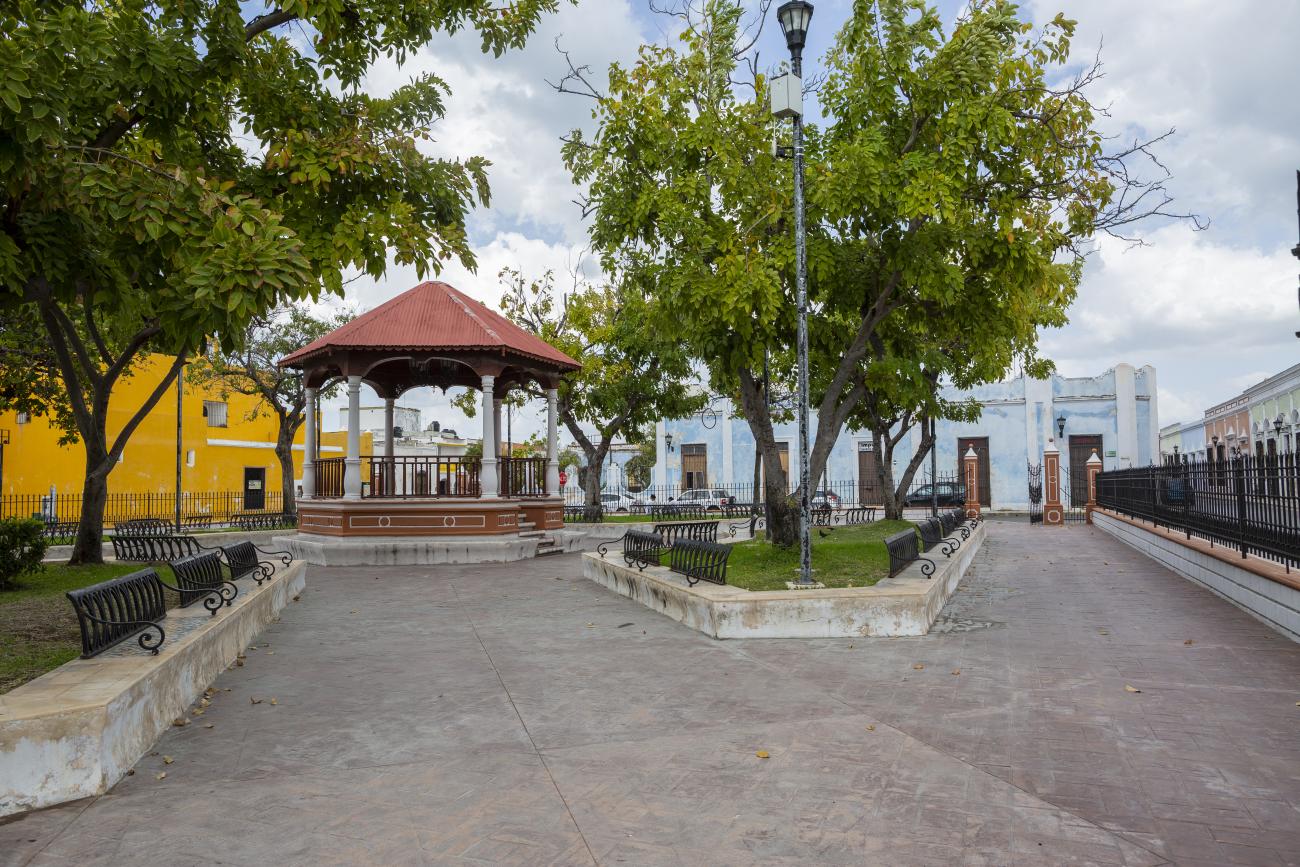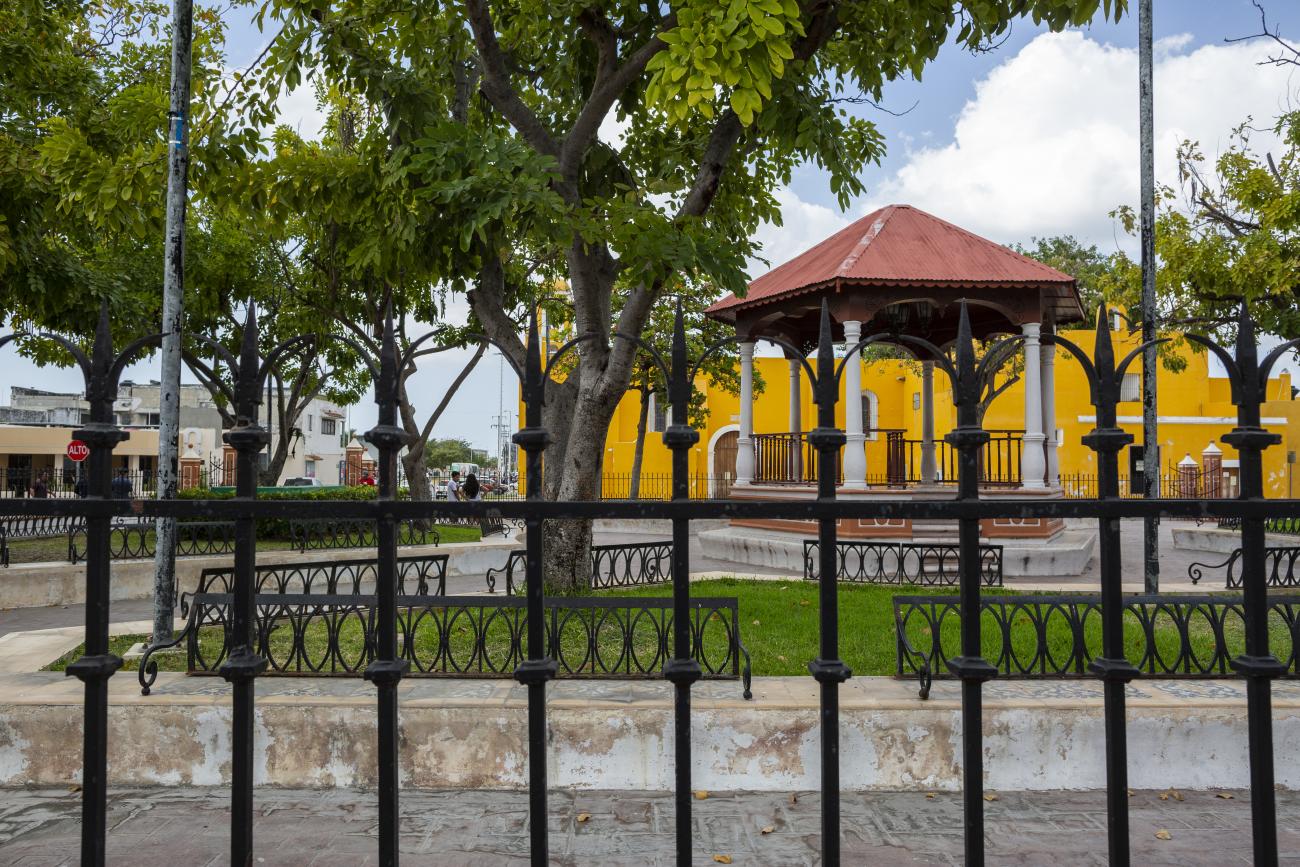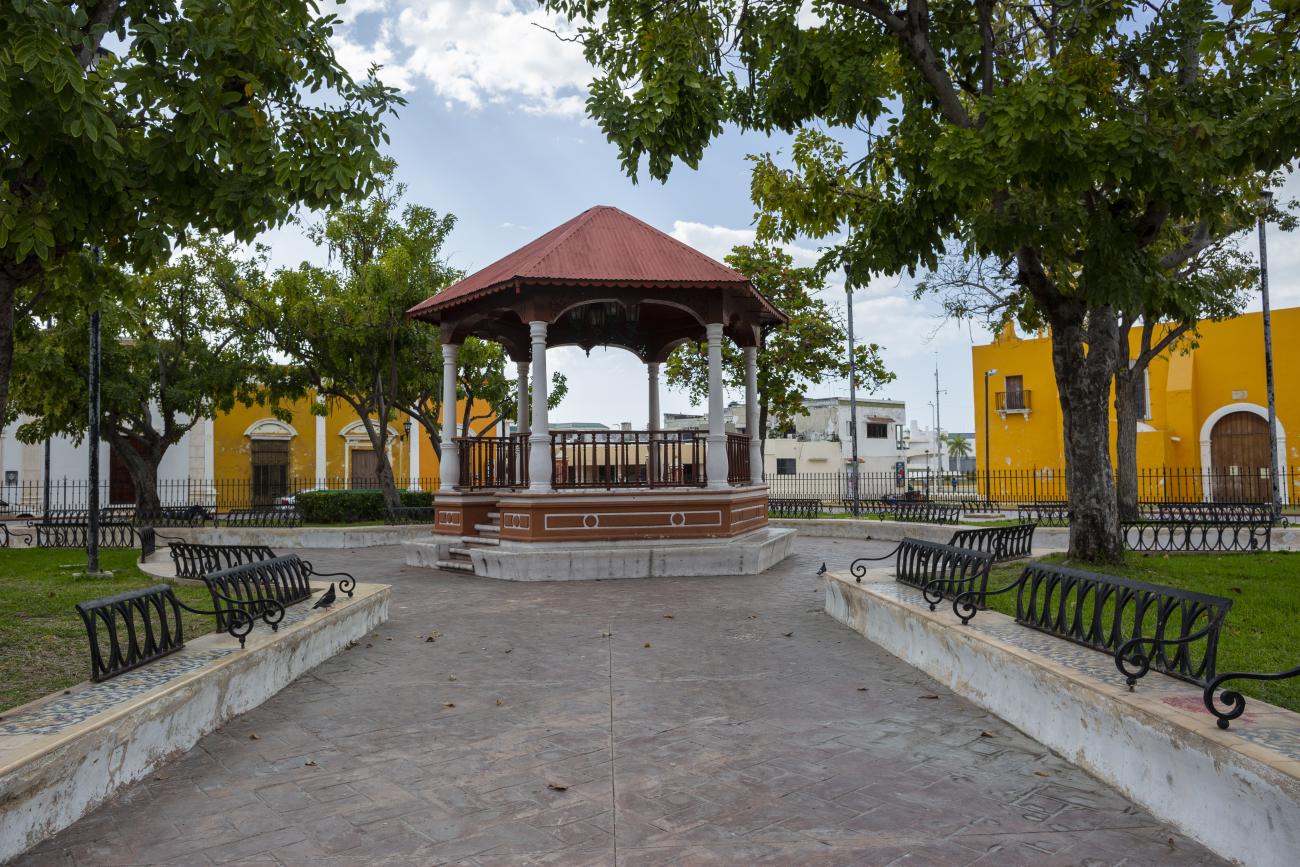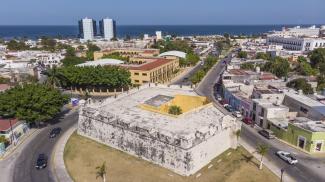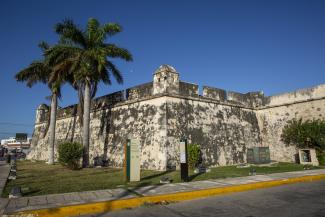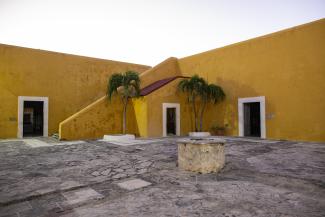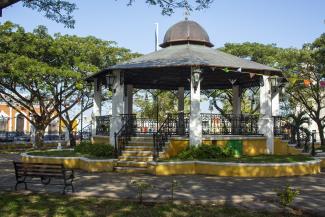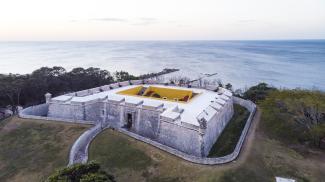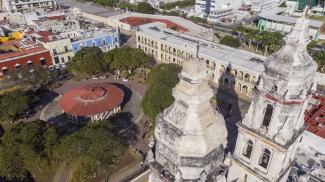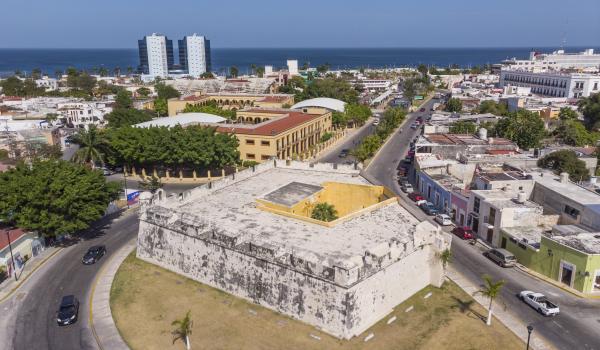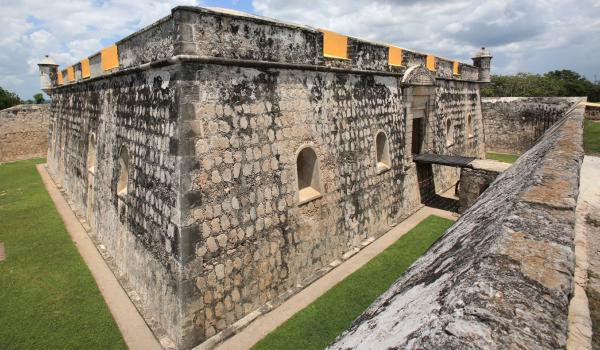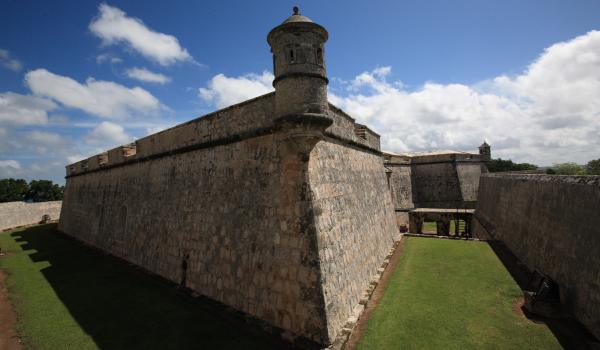Campeche
Historical Monuments Zone
Abstract
The only well-preserved walled city in Mexico. Its strategic geographical position made it an important point of arrival for evangelizing monks, pirates and merchants.
The capital of Campeche is located west of the Yucatan Peninsula and was founded in 1540 in the Mayan settlement of Ah Kim Pech, which gives us the present-day name of Campeche. Given its character as a port, it was the starting point for the conquest and evangelization of the peninsula. Three men of the same name, Francisco de Montejo ‘the Adelantado’, Francisco de Montejo ‘the Sobrino’, and Francisco de Montejo ‘the Mozo’ founded the town of San Francisco de Campeche.
The natural wealth of the region, which includes the logwood tree, used for making dyes, and precious woods, made Campeche one of the viceroyalty’s most prosperous economic hubs between the 17th and 18th centuries. The port was attacked several times by pirates; this is the reason for the wall that protects the city.
Once Francisco de Montejo y León “the Mozo” was established in Campeche, this became his base of operations for the conquest of Yucatán. The Spanish lived around the square, in the present-day district of San Román, while the indigenous people remained in the old pre-Hispanic settlements in the present-day districts of San Francisco and Siete de Agosto.
The historical core of Campeche stands out as a model of urbanization for a Baroque colonial city; it was declared a Zone of Historical Monuments in 1986 and inscribed on the UNESCO World Heritage List as a Historic and Fortified City in 1999.
The historical area comprises 1.81 km2 and is made up of 163 blocks with historical buildings built between the 16th and 19th centuries, of which some were destined for religious worship such as the churches of San Román, San José, San Francisquito, Jesús Nazareno, Nuestra Señora de la Concepción, del Dulce Nombre de Jesús, San Juan, Santa Ana, Santa Lucia, San Francisco, Our Lady of Guadalupe and the Hermitage. Other buildings were intended for educational purposes and welfare services, as well as for civil, ecclesiastical and military authorities, together with private homes, which combine various architectural styles.
One of the most important complexes is the San Román church, located in the neighborhood of the same name, where the Black Christ is found. Meanwhile, the Church of Our Lady of Guadalupe was the second in the country to be dedicated to the Virgin of Guadalupe, after the one located on Cerro del Tepeyac in Mexico City.
Some chronicles relate that the first mass on mainland America was held in the place where the church of San Francisco is currently located; however, the current construction dates from 1546. Other areas of colonial architecture that stand out are: the House of Culture, the Carvajal Mansion and the House of the Teniente de Rey.
The center of the city is characterized by a well-defined plan dating from the 16th and 17th centuries, within the area protected by the wall. Outside of the walls the streets form a grid. In the Zone of Historical Monuments, single-level constructions predominate, except for the walled enclosure where two-level buildings abound.
The wall is an emblem of the urban landscape of the city: in its center different races, religions and cultures were mixed, a blending that today is expressed in the city’s festivals, traditions, customs, religious expressions, food, poetry, music and dances, which are a cultural heritage of humanity. The construction of this wall was a result of piracy in the mid-16th century. The development of piracy in the seas of the Americas was an extension of the battles fought in Europe, and in fact was boosted by the monarchs who encouraged the shipowners and experienced captains to sail to the waters of the New World by giving them a “letter of marque,” which was effectively a means of legalizing theft at sea.
The fight by England and France to wrest commercial and political dominance from Spain encouraged the use of privateers and pirates who operated on the shores of Campeche from 1557, and a year later took over the Laguna de Terminos. Several attempts were made to evict them until the Sergeant Major of Veracruz, Alonso Felipe Andrade, expelled them from the Laguna in 1716.
In the year 1686, the governor of Yucatán, Juan Bruno Tello de Guzmán, presented to the council a project to build a wall around the town of Campeche to protect it from the continuous attacks by corsairs and pirates. The proposal was accepted and money was raised with donations from the governor, the bishop of the province, the most prominent residents, and the cession by the city council of the duties that were paid for salt extraction. Both the walls and the bastions were solidly built, with curtain walls whose thickness varies between 2.35 and 2.60 meters at the base, between 2.02 and 2.27 meters at the top, with a height of approximately 8.40 meters. They included the parapet with its allure or wall walk linking the bastions around the city.
Another of the most significant buildings in Campeche is the cathedral, which was renovated in June 1987. Shortly after the work began, a cavity was discovered at the bottom of which three colonial crypts of great historical value were found. These crypts corroborate historical research on the importance of Campeche as a center for cultural exchange. It became clear that the cathedral was the key site for managing and legitimizing all the most important aspects in the daily life of the governing body of society: the imposition of names and surnames through baptism; the practice of worship and evangelization.

"Cuauhtémoc"
This 17th-century building had polybulated arch portals, which were demolished in 1963 and replaced with semicircular ones. It is one of the most beautiful mansions in Campeche, owned by councilman Bartolomé Borreiro, and the birthplace of sailor Pedro Sáinz de Baranda.
"Cuauhtémoc"
This 17th-century building had polybulated arch portals, which were demolished in 1963 and replaced with semicircular ones. It is one of the most beautiful mansions in Campeche, owned by councilman Bartolomé Borreiro, and the birthplace of sailor Pedro Sáinz de Baranda. In the second half of the 19th century, it became the Cuauhtémoc Hotel, which remained open until the 1960s. Since then, it has been occupied by various businesses. The corner is known as “Cuauhtémoc” because of a bar located there.

Puerta de Mar
This gate was the entrance and exit from the city to the sea, located between the Soledad and San Carlos bastions. It had no moat or rampart. In 1893, Colonel Fernando Laphman gave the order to destroy it so that the military barracks would have a view of the sea.
Puerta de Mar
This gate was the entrance and exit from the city to the sea, located between the Soledad and San Carlos bastions. It had no moat or rampart. In 1893, Colonel Fernando Laphman gave the order to destroy it so that the military barracks would have a view of the sea. In 1955, the revolutionary governments restored the wall, including the Sea Gate.

Puerta de Tierra
This monument, also known as “Castillo” or “Reducto de Puerta de Tierra,” was built between 1725 and 1727. It is located between the San Francisco and San Juan bastions and was opened due to the closure of the San Román and Guadalupe access points, which facilitated pirate attacks.
Puerta de Tierra
This monument, also known as “Castillo” or “Reducto de Puerta de Tierra,” was built between 1725 and 1727. It is located between the San Francisco and San Juan bastions and was opened due to the closure of the San Román and Guadalupe access points, which facilitated pirate attacks. This gate is the only original access point that remains of the city's defensive system. It has a masonry parapet and a moat surrounding it, as well as side rooms, vaulted spaces with iron windows through which light entered.

Teatro Francisco de Paula Toro
In the 19th century, a society was formed to raise funds to build the theater that the city needed. The work was commissioned to Francisco de Paula Toro, its main promoter, and the French architect Teodoro Journot designed the plans.
Teatro Francisco de Paula Toro
In the 19th century, a society was formed to raise funds to build the theater that the city needed. The work was commissioned to Francisco de Paula Toro, its main promoter, and the French architect Teodoro Journot designed the plans. Construction was interrupted in 1833 by the cholera epidemic and the theater was not inaugurated until September 17, 1834, with the presentation of the plays “Orestes y Agamenón vengado” and “La jeringa,” staged by Rafael Palomera's company. It was known as El Coliseo until 1879, when it was renamed Teatro Francisco de Paula Toro in honor of its main promoter. From 1905 to 1914, restoration work was carried out, and it was reopened on August 7, 1915, with a performance by the quintet “Cárdenas” and the screening of the films “El déspota” and “Veinte años de odio.” Between 1916 and 1919, it was remodeled and adapted as a movie theater. In 1965, through the efforts of Governor José Ortiz Ávila, the building became the property of the Universidad del Sudeste, and in 1987, the theater property was exchanged for the CREA sports facilities. In 1990, the remodeling was completed and it was named “Teatro de la Ciudad” (City Theater).

Templo del Dulce Nombre de Jesús
The construction of this Jesuit temple, around 1560, began due to population growth. It started as an open chapel made of wood and palm leaves, which later served as a presbytery.
Templo del Dulce Nombre de Jesús
The construction of this Jesuit temple, around 1560, began due to population growth. It started as an open chapel made of wood and palm leaves, which later served as a presbytery. In 1685, this building suffered the theft of the jewels from the images and the destruction of its altars and parish archives at the hands of the pirates Laurent Graff and Grammont. After the Reform Laws, the adjacent properties, such as the cemetery, were auctioned off and passed into private hands.

Templo de San Román
After a locust plague in the 16th century, the community decided to build a sanctuary dedicated to the saint chosen by lot. In 1563, construction began on this chapel of San Román. In 1565, the image of the Holy Christ of San Román, brought from Spain, was placed there.
Templo de San Román
After a locust plague in the 16th century, the community decided to build a sanctuary dedicated to the saint chosen by lot. In 1563, construction began on this chapel of San Román. In 1565, the image of the Holy Christ of San Román, brought from Spain, was placed there. It was not until 1921 that the bell tower was built.

Templo de Nuestra Señora de Santa Ana
This temple was built around the year 1725.
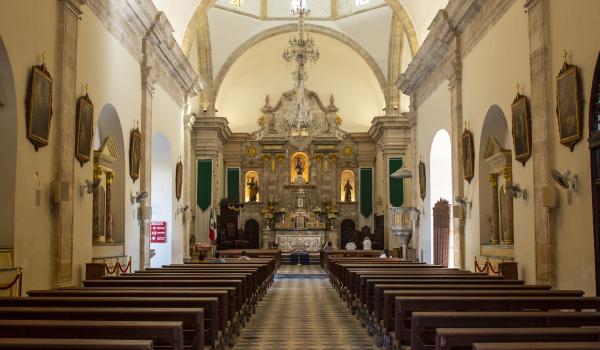
Catedral
The first parish church in Campeche was built in 1540 and dedicated to the Immaculate Conception. As the city grew, a larger church was built, completed thanks to donations from Margarita Guerra.
Catedral
The first parish church in Campeche was built in 1540 and dedicated to the Immaculate Conception. As the city grew, a larger church was built, completed thanks to donations from Margarita Guerra. In 1758, it was enlarged and the tower known as “La Española” was built, where the bells that had previously hung from the belfry were placed, as well as the city's first public clock. Inside were four crypts where the bodies of important people from the community were buried, including that of Margarita Guerra.
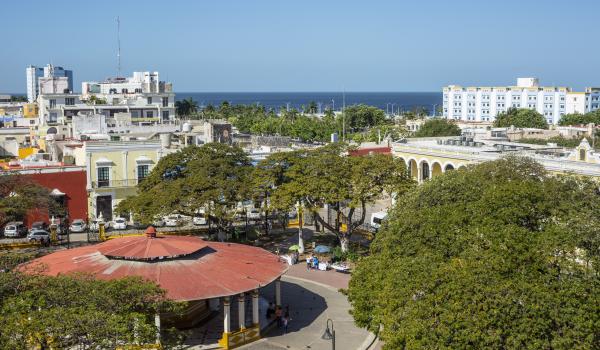
Plaza de Armas
It is likely that the Plaza Mayor or Plaza de Armas was laid out when the town of San Francisco was founded in 1540. After the Constitution of Cádiz was enacted in 1812, it was renamed Plaza de la Constitución.
Plaza de Armas
It is likely that the Plaza Mayor or Plaza de Armas was laid out when the town of San Francisco was founded in 1540. After the Constitution of Cádiz was enacted in 1812, it was renamed Plaza de la Constitución. On December 18, 1826, the City Council placed a commemorative plaque naming it “Plaza de la Independencia.” Initially, it was an area covered with wild plants, until November 22, 1858, when it was laid out as a plaza, a project that was inaugurated in 1869. A fence was installed, and gates manufactured in New York to a design by Manuel F. Rojas were placed at the corners and in the middle. Between 1985 and 1991, the current bandstand was installed.

Templo de Guadalupe
Temple founded between 1576 and 1581 with the sponsorship of Pedro Martín de Bonilla.
Templo de Guadalupe
Temple founded between 1576 and 1581 with the sponsorship of Pedro Martín de Bonilla.
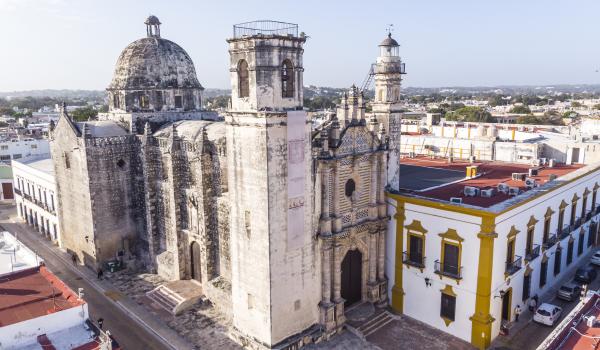
Templo de San José
In 1649, the founding of a brotherhood dedicated to Saint Joseph was approved, as requested by Captain Antonio Maldonado. The brotherhood of Saint Joseph was made up of the carpenters' and caulkers' guilds.
Templo de San José
In 1649, the founding of a brotherhood dedicated to Saint Joseph was approved, as requested by Captain Antonio Maldonado. The brotherhood of Saint Joseph was made up of the carpenters' and caulkers' guilds. On December 30, the opening of the College of Saint Joseph, run by the Jesuit order, was authorized. José de Santillán and his wife were the first founders. For some time, the Jesuits shared possession of the chapel with the carpenters' brotherhood, until Bishop Juan Gómez de la Parada decided to move the brotherhood of Saint Joseph to the parish, and the Jesuits devoted themselves to teaching reading and writing in the chapel.


